Vital materie (Vibrant matter) (2025)

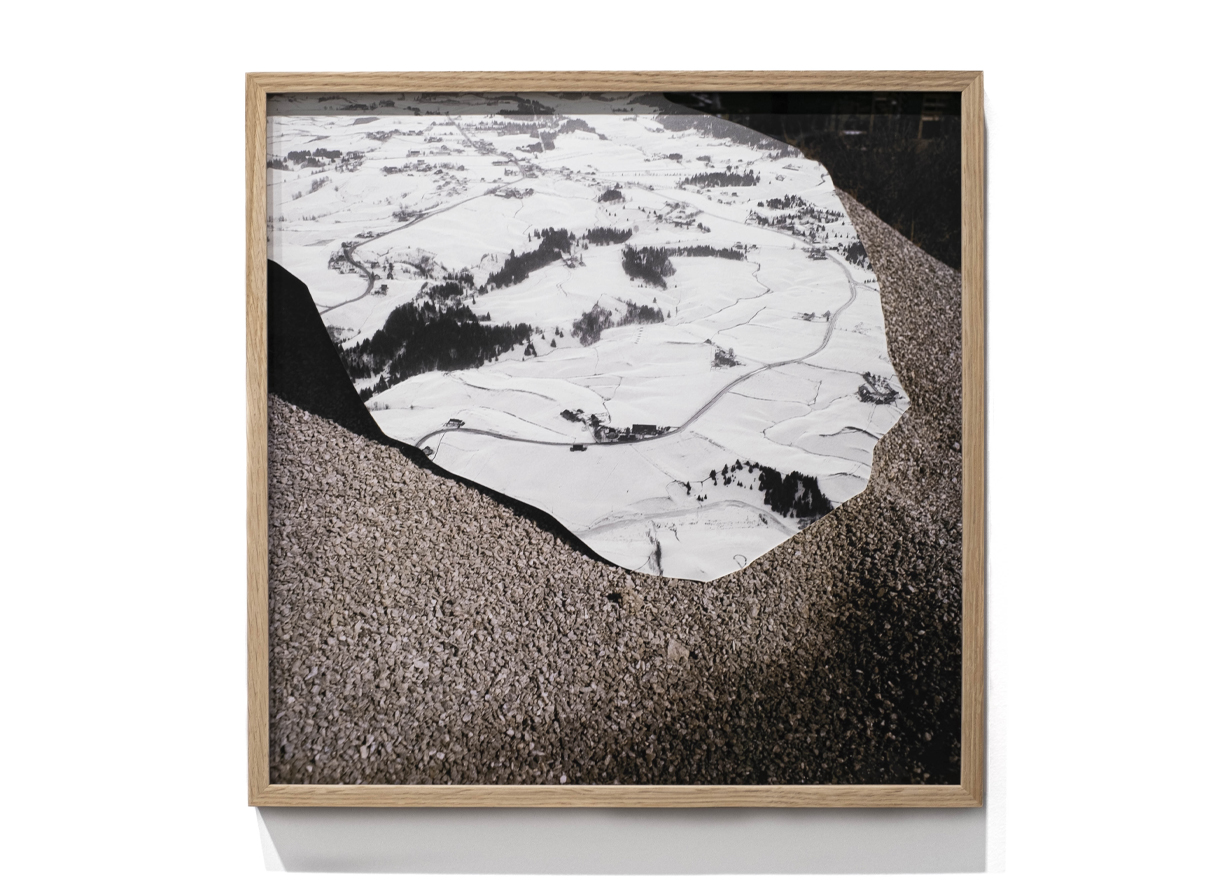
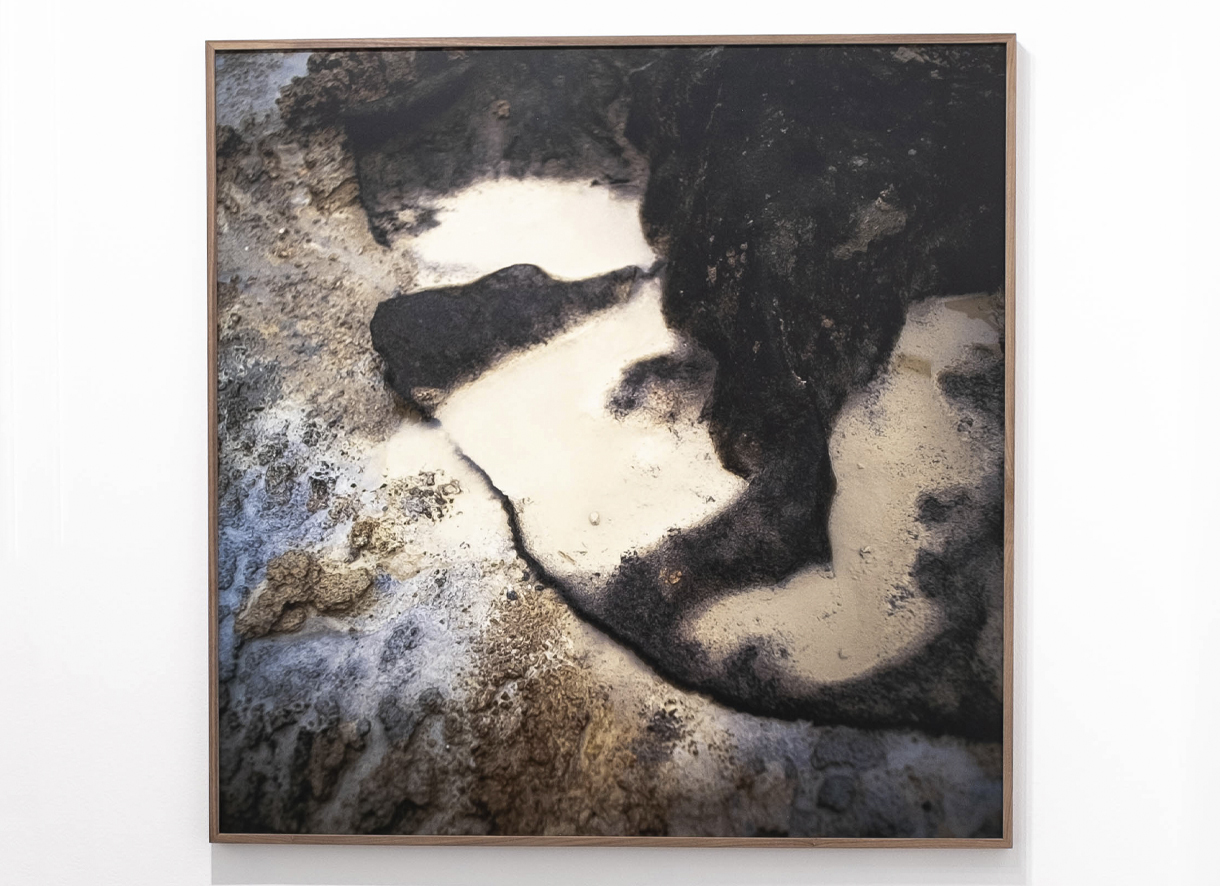
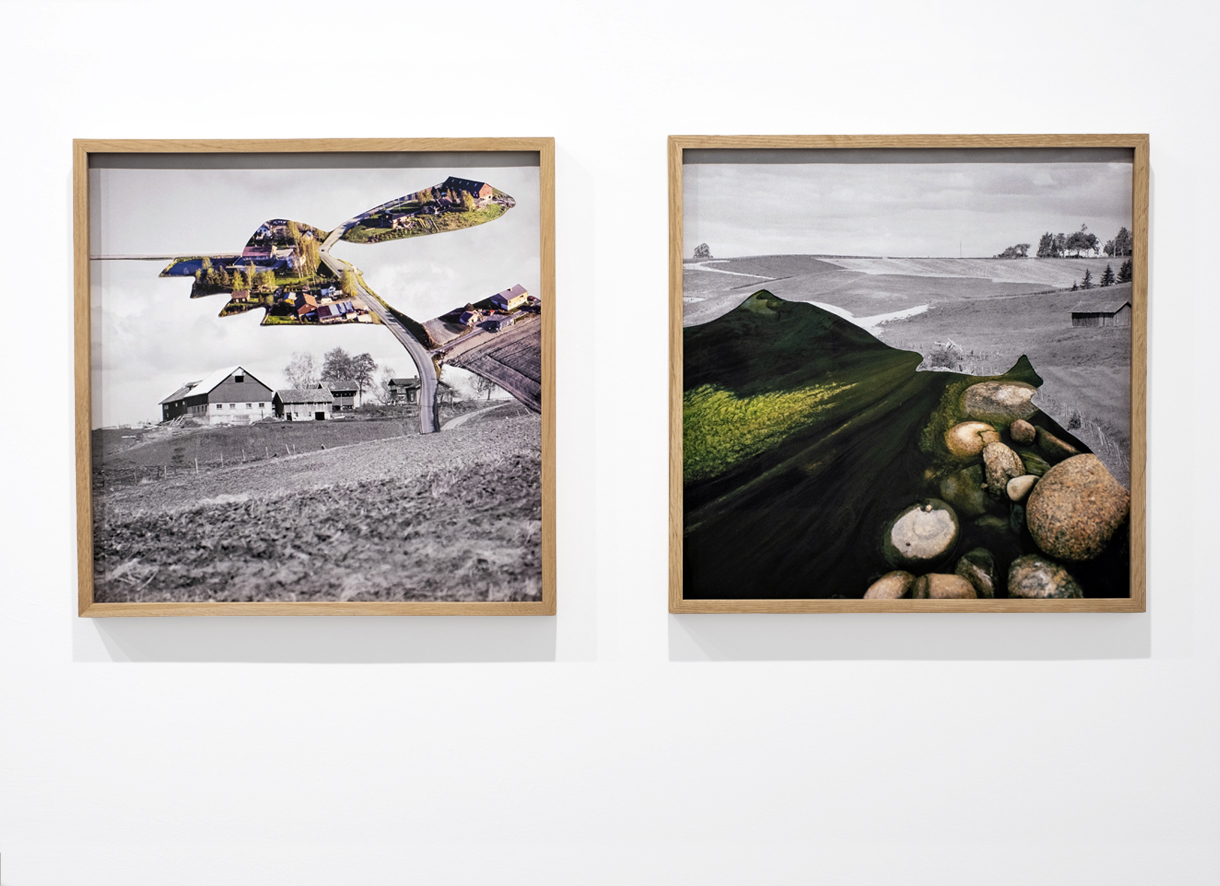

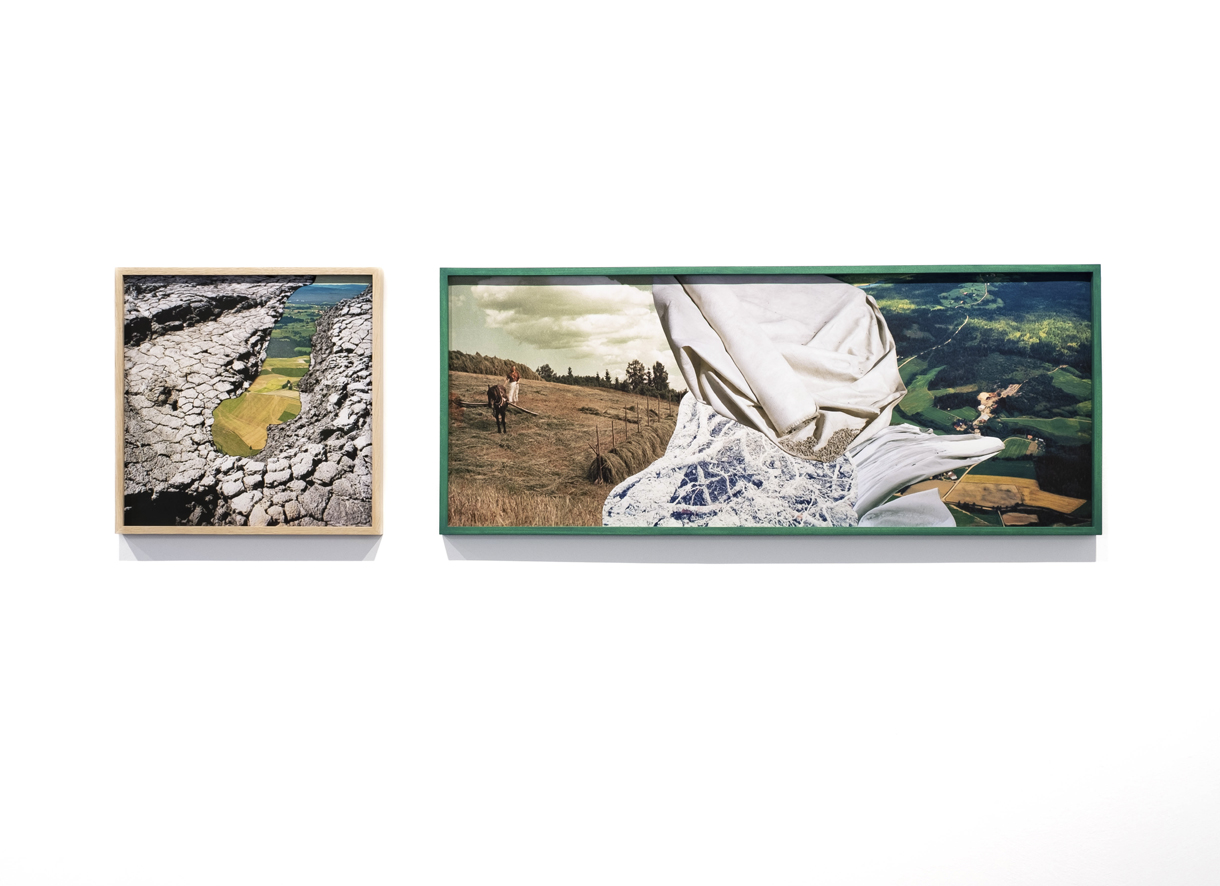
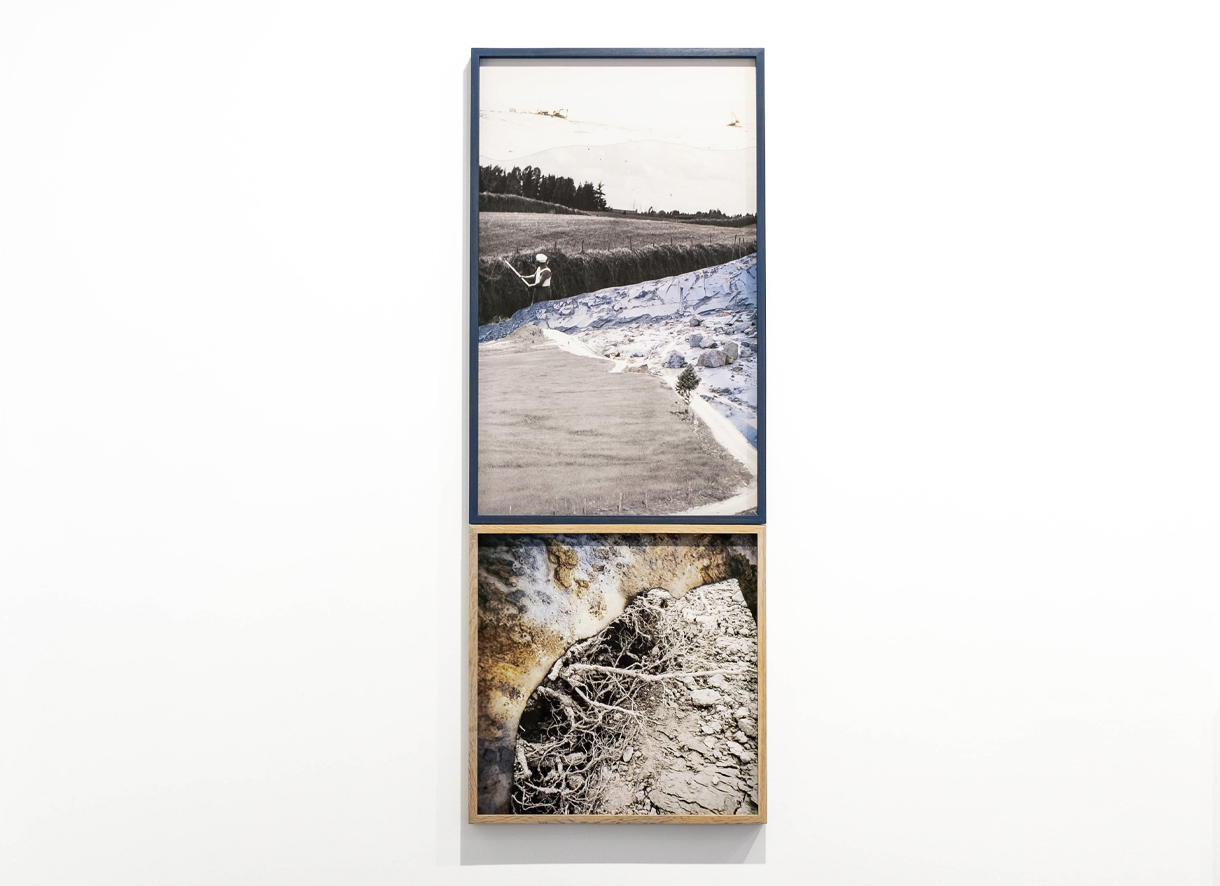
In the exhibition Vibrant matter Jonas Carlsen and Katja Høst examine the mutual and circular influence between nature, humans and technology. In what way does the exploitation of natural resources reflect our relationship to matter as such? If we think that all matter, both organic and non-organic, is vital and has agency, can this affect how we relate to our natural surroundings? And what role does photography play in this relationship?
Through photography, installation and collage, places where raw materials are extracted, masses are moved, and nature and culture interact become the focal point. The traces of these processes reveal landscapes in flux, fleeting and temporary. The works make visible the very presence of matter, not only as a background, but as a form of actor in the image.
The book Omrørt (Stirred), commissioned by LANDART Gjerdrum, forms the backdrop for Høst's works in the exhibition. The comission was to adress the landscape and history of Gjerdrum – characterized by a long tradition of adjusting the landscape, which has changed the topography of the area considerably. First with the utilization of increasingly larger areas for agriculture, and then the development of extensive housing areas for commuters, to which parts of the landscape responded in 2020 with a collapse in the form of a mudslide ending eleven human lives.
In the landslide pit and its restoration, Høst found a condensed story about the relationship between humans and nature in Gjerdrum's history. Høst zooms in on the soil, traces of human intervention, and the ravine forest: a small forest patch that followed the landslide for several hundred meters, and then established itself on new ground. The municipality chose to keep the ravine forest, but this has been controversial. Some experience it as a painful reminder, while others think of it as an important memory.
A series of collages also touches on the role of photography as a tool for political goals and agendas related to a given landscape. During the 50s and 60s, areal photography was an important tool in the agricultural revolution initiated by the Labour Party. Combining these historical and politically charged photographs with the artist’s own photographs, where she gets very close to the soil, roots and gravel, invites a closer exploration of our relationship to the landscape we live in and how we interact with it.
Under arbeid (2023-24)


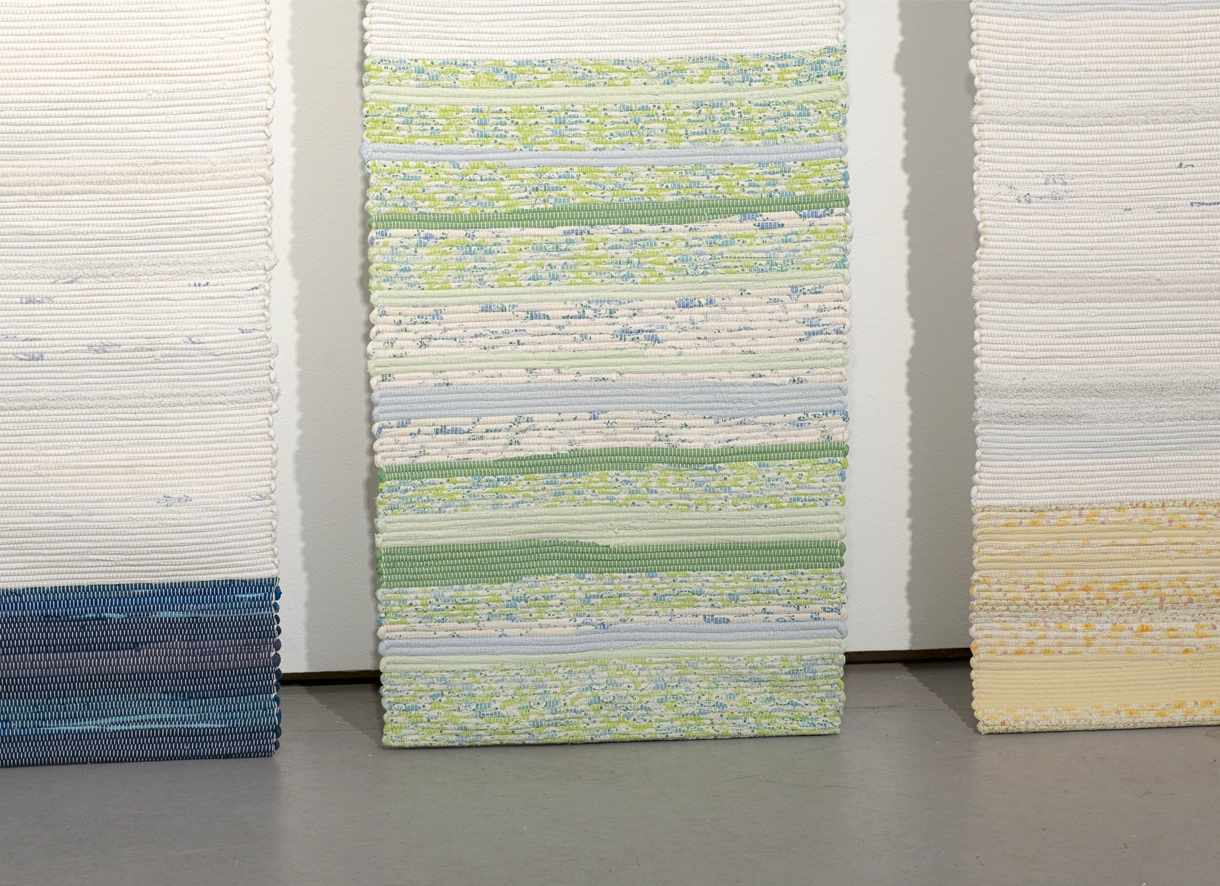

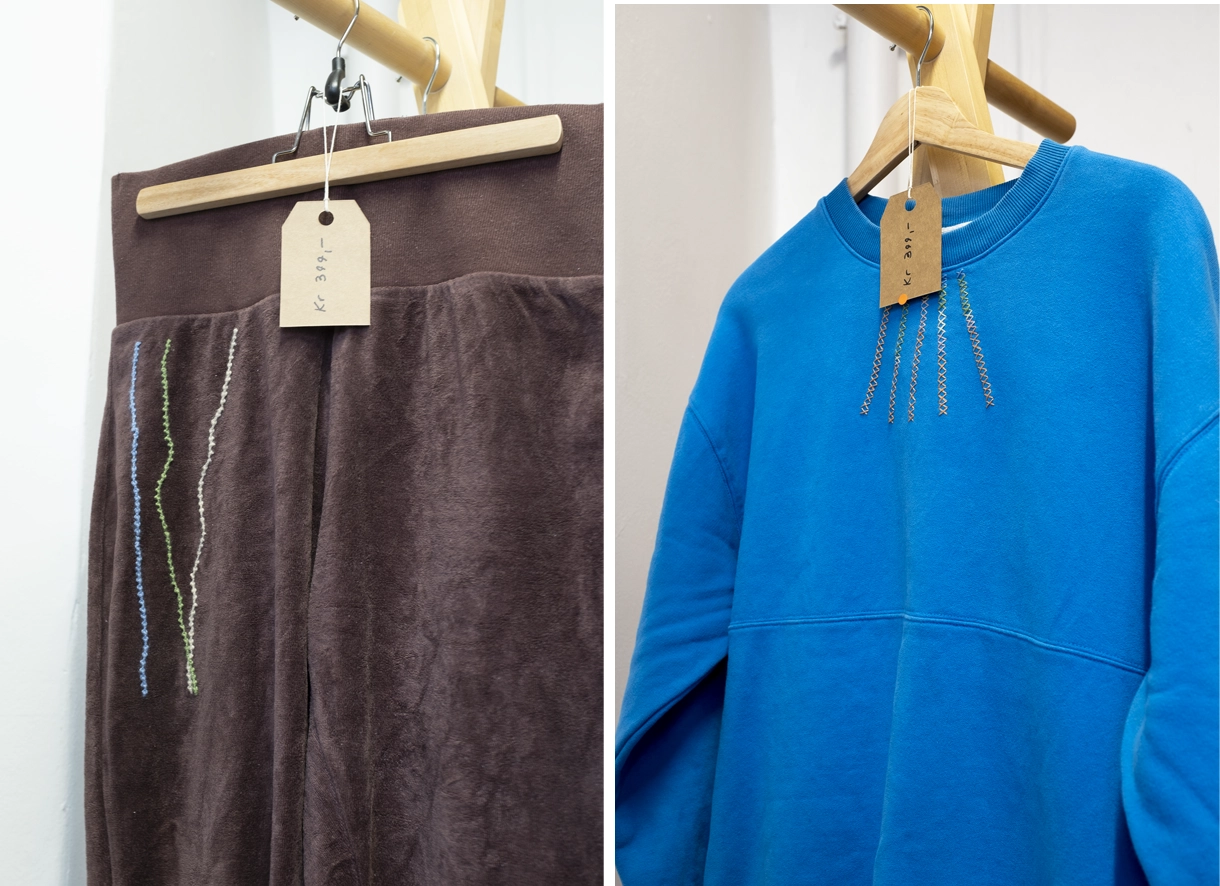

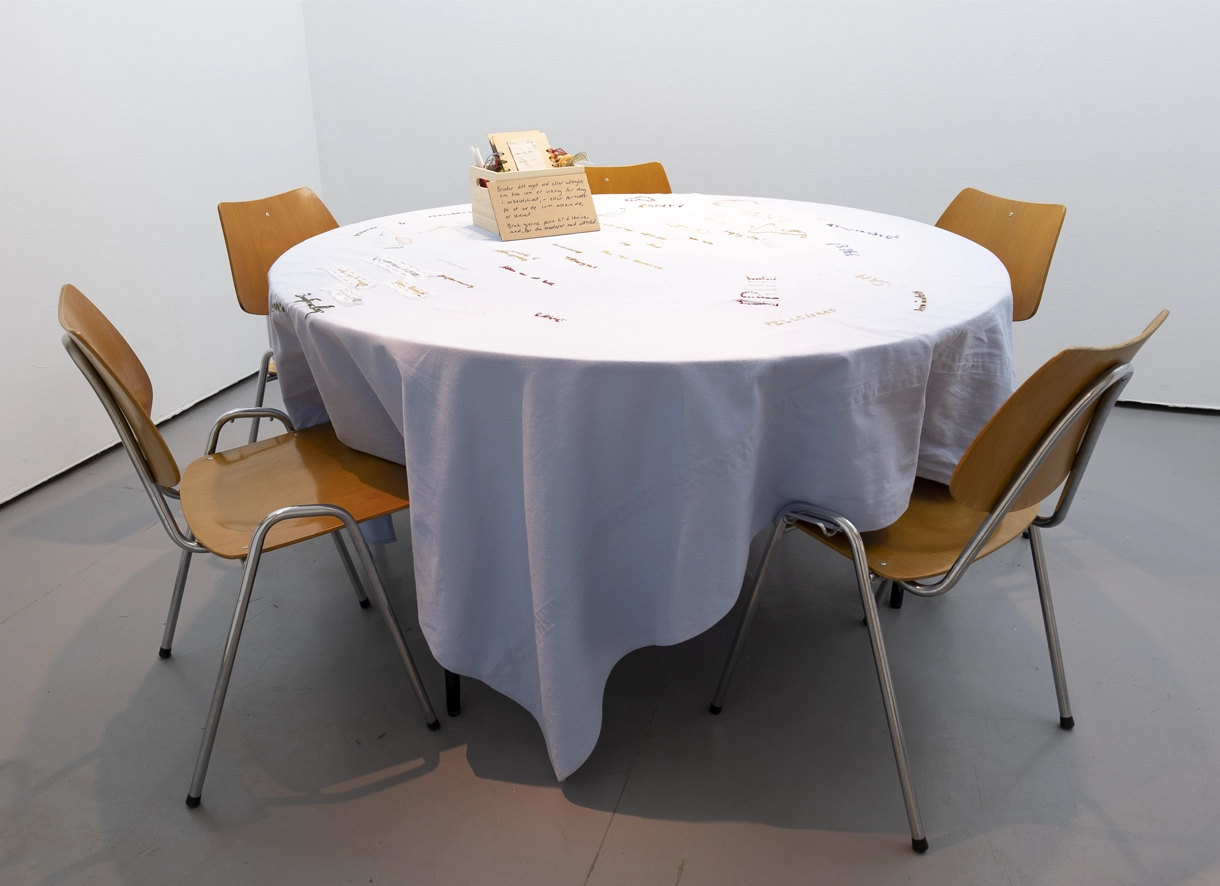
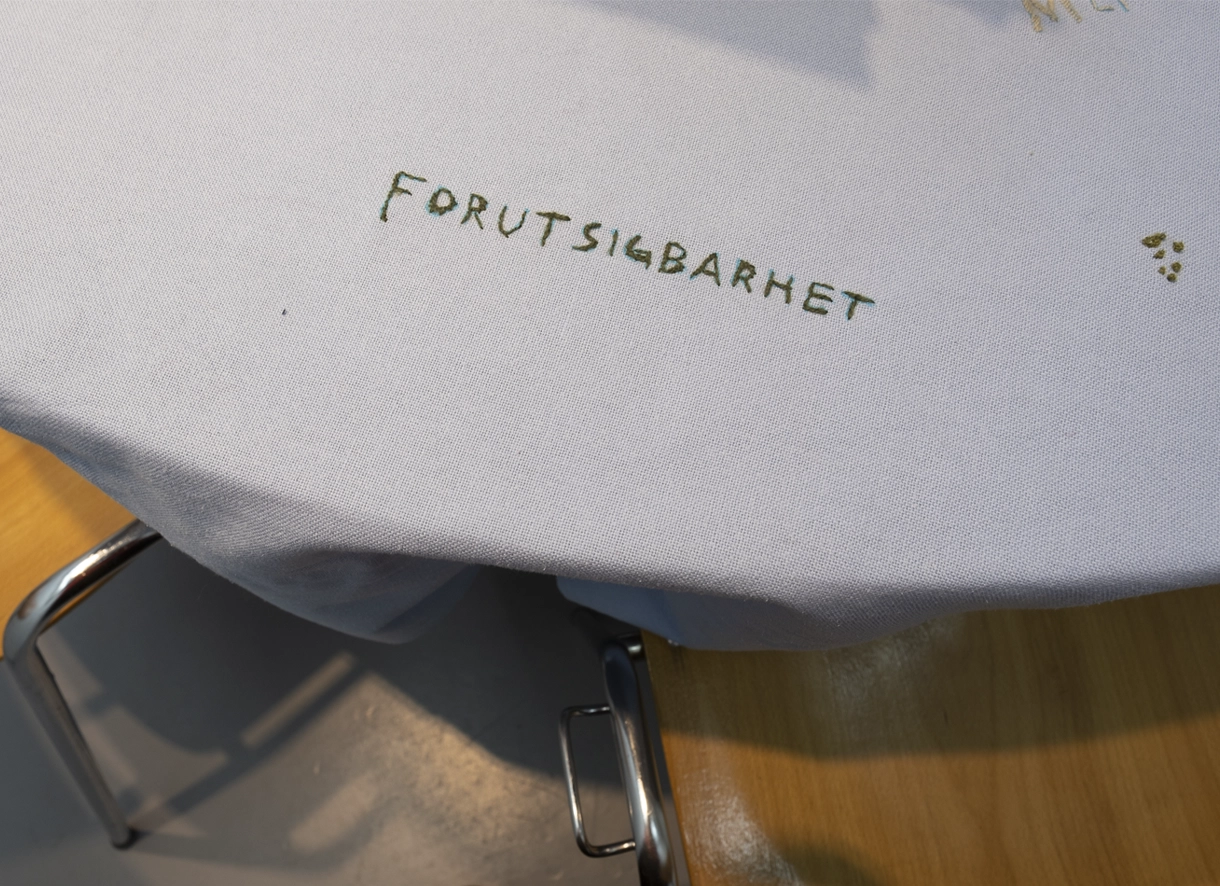

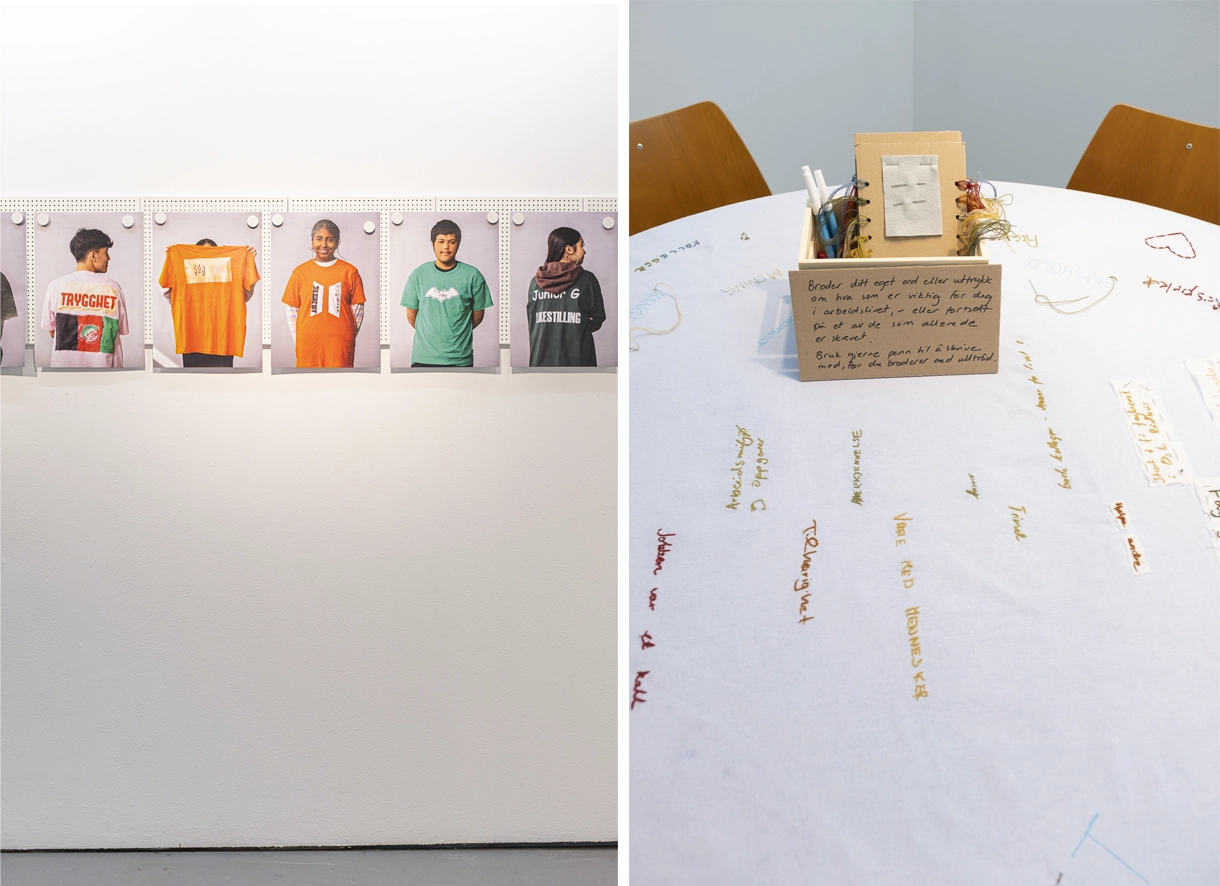
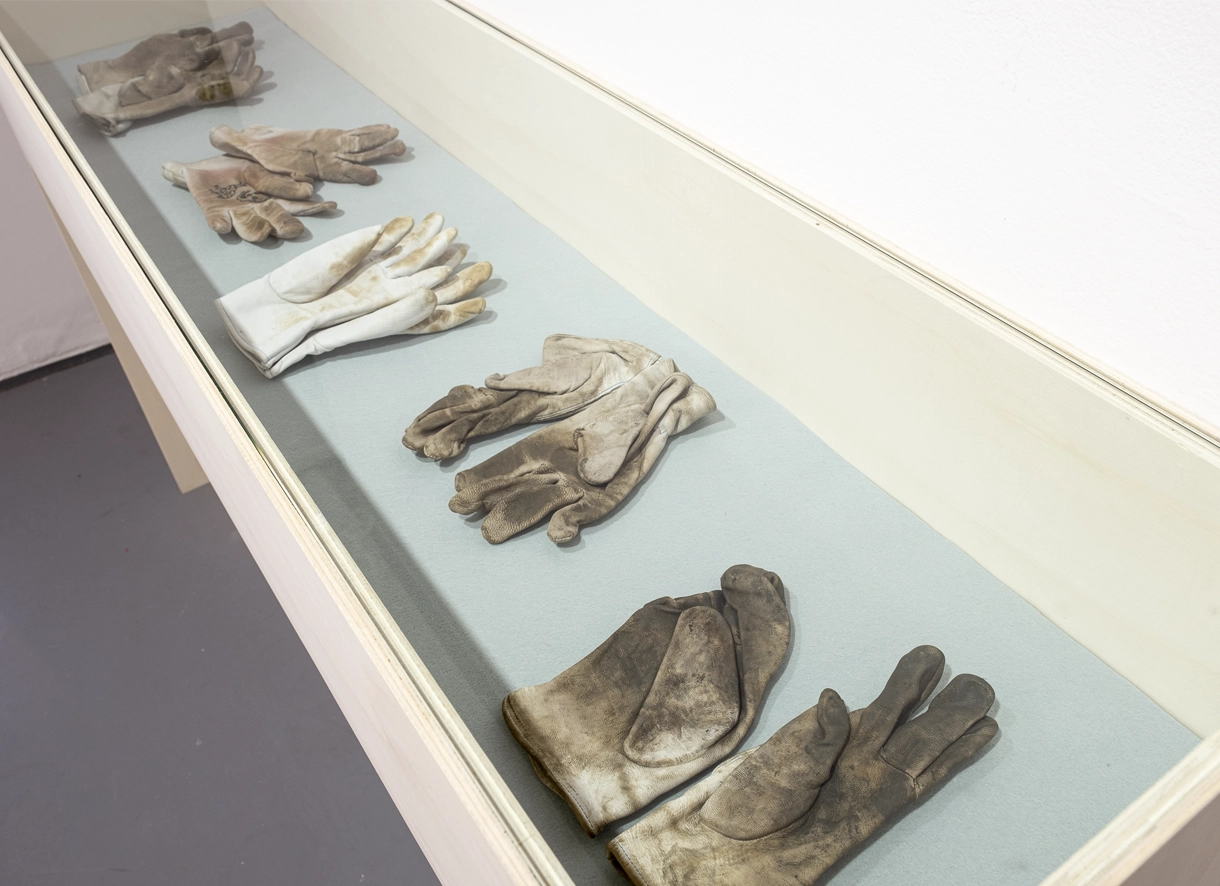
The exhibition Under arbeid at Tenthaus builds on a series of workshops where artists Katja Høst and Liva Mork collaborated with pupils from Hersleb high school and Veitvet school to create a banner in textile for use in the first of May march celebrating labor day. This banner, as well as individual garments that the pupils also produced, carried statements based on the students' reflections and expectations related to the working life ahead. After a first series of workshops at Hersleb, five pupils were employed in the project to hold similar workshops for the younger students at Veitvet.
The exhibition presents the results from the workshops in the form of a Fanzine, as well as the work Skisser til nye arbeidslinjer, a series of portraits of pupils wearing the t-shirts they made. Through the dialogue between these portraits and the performative work Arbeidslinjer, questions arise whether the values in working life are changing. Has the value of work changed in line with the conditions in the time span of two generations? From the generation that continued the fight for labor rights and contributed to their strengthening, to the generation that now face a working life where many of these rights are under severe pressure?
The artists use recycled textiles as material and the textile industry as a pivot to illuminate challenges linked to a global labor market, both in terms of rights, sustainability, as well as the impact on climate and the environment. The slow nature of the artists manual labor in these artworks (weaving and embroidering) stands in direct contrast to the pace and scope of global industry, insisting on an alternative to efficiency and economic growth as fundamental principles of work. In the two works Theory and practice I and Theory and practice II (for sale) second hand clothes join academic research by being a soft canvas for the hard facts in numbers and statistics. A powerlessness can be sensed in the slow process of embroidery relating to all the knowledge that do exists, but which is so difficult to translate into effective politics.
Månesyk (2023)
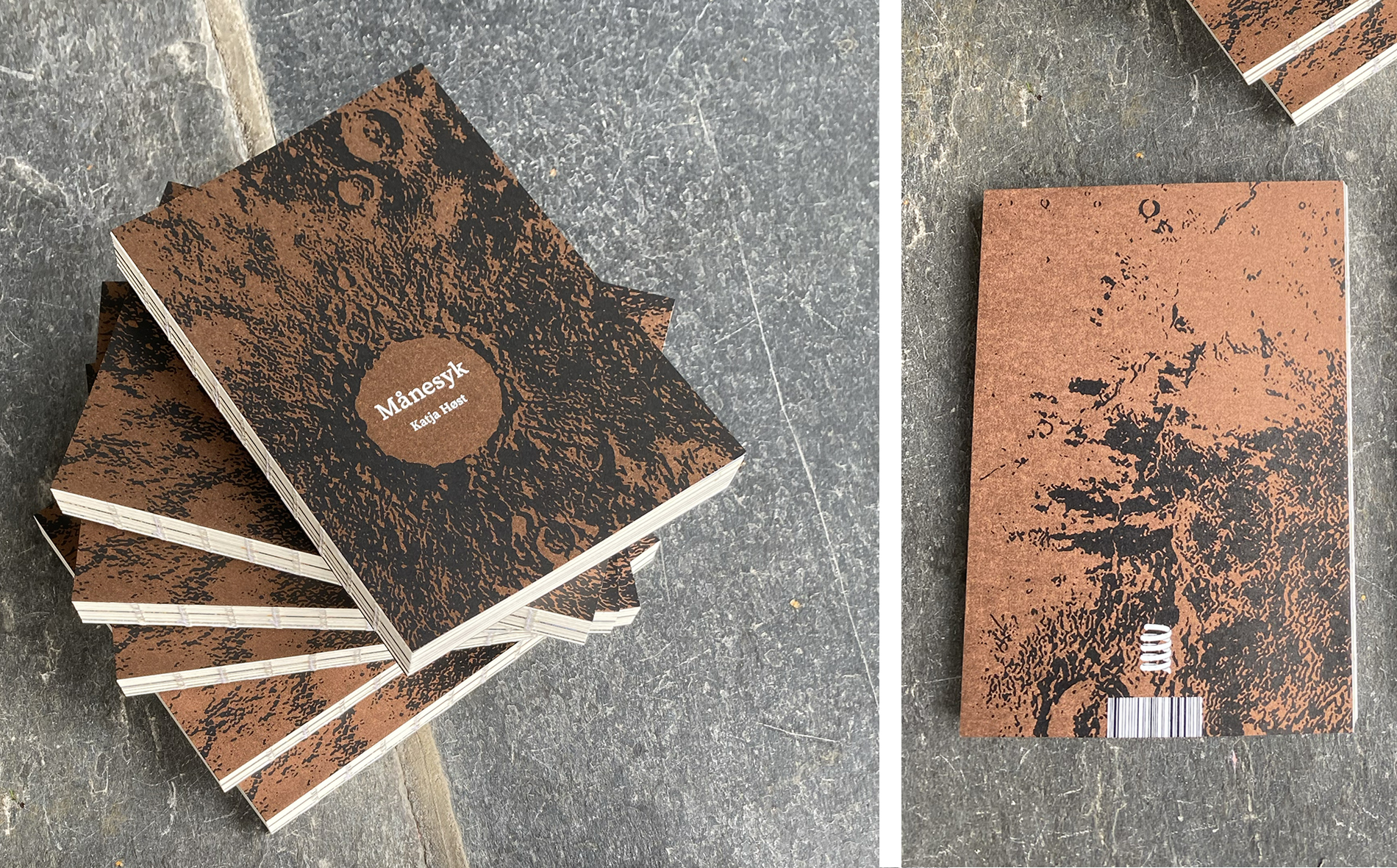
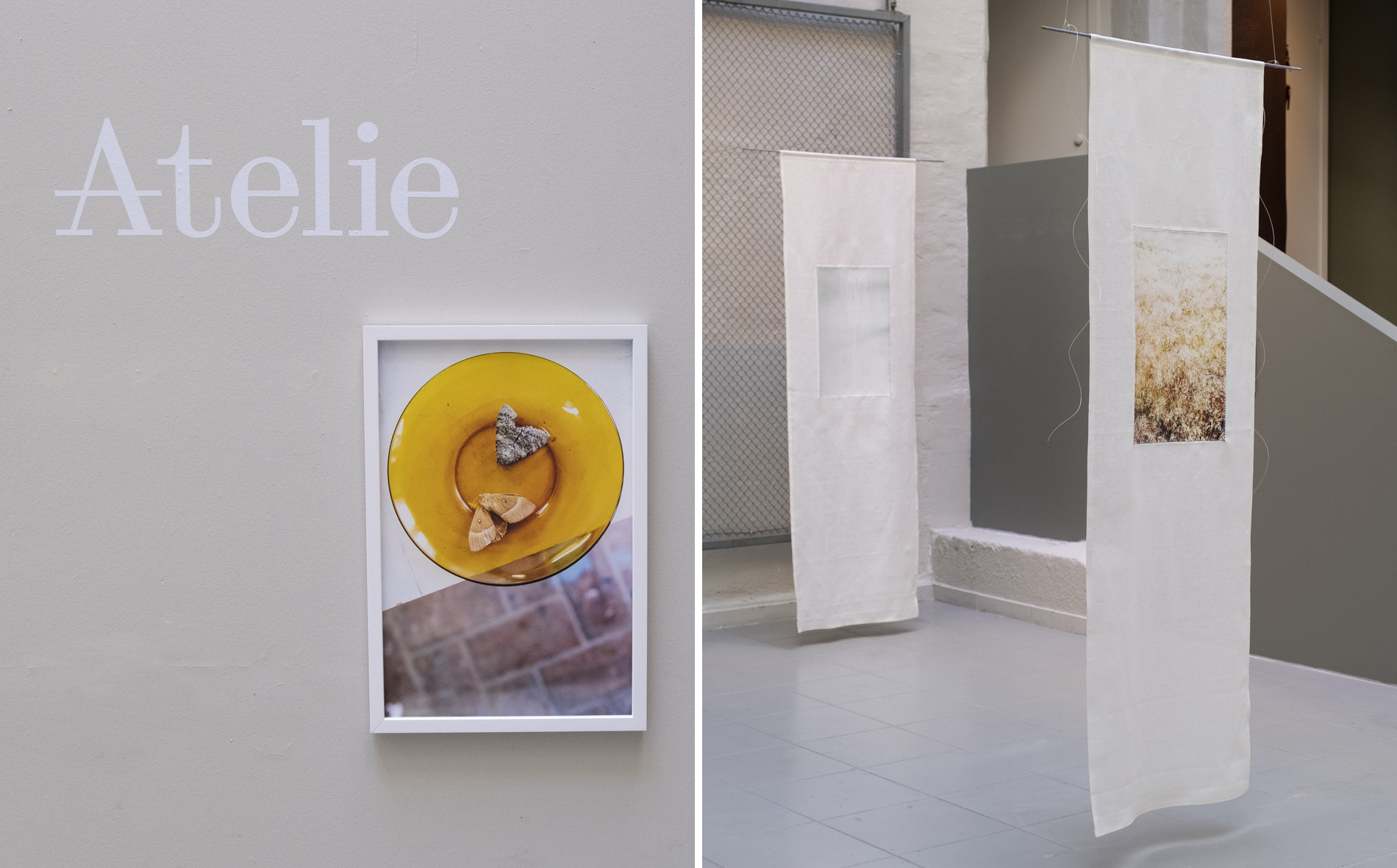
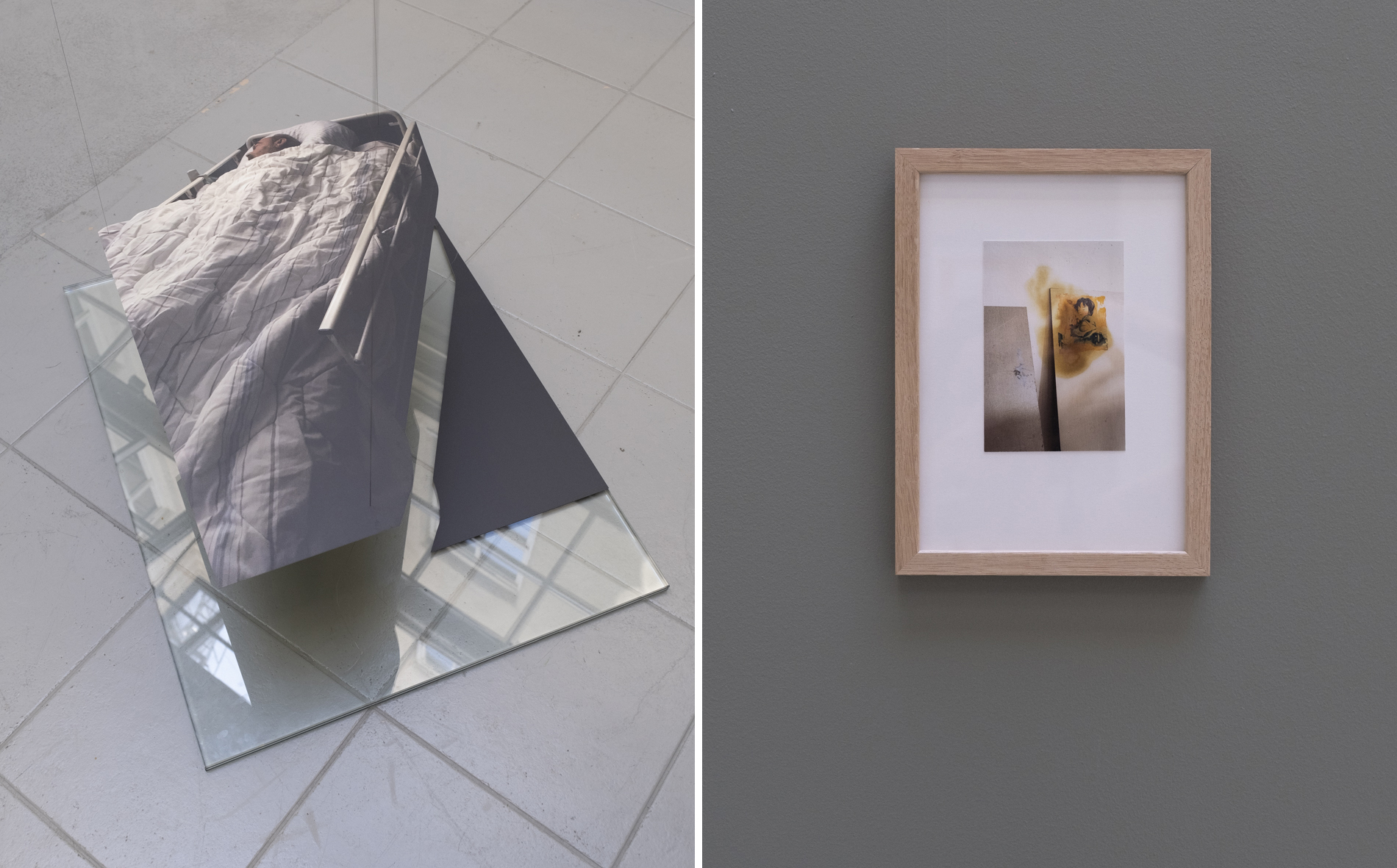
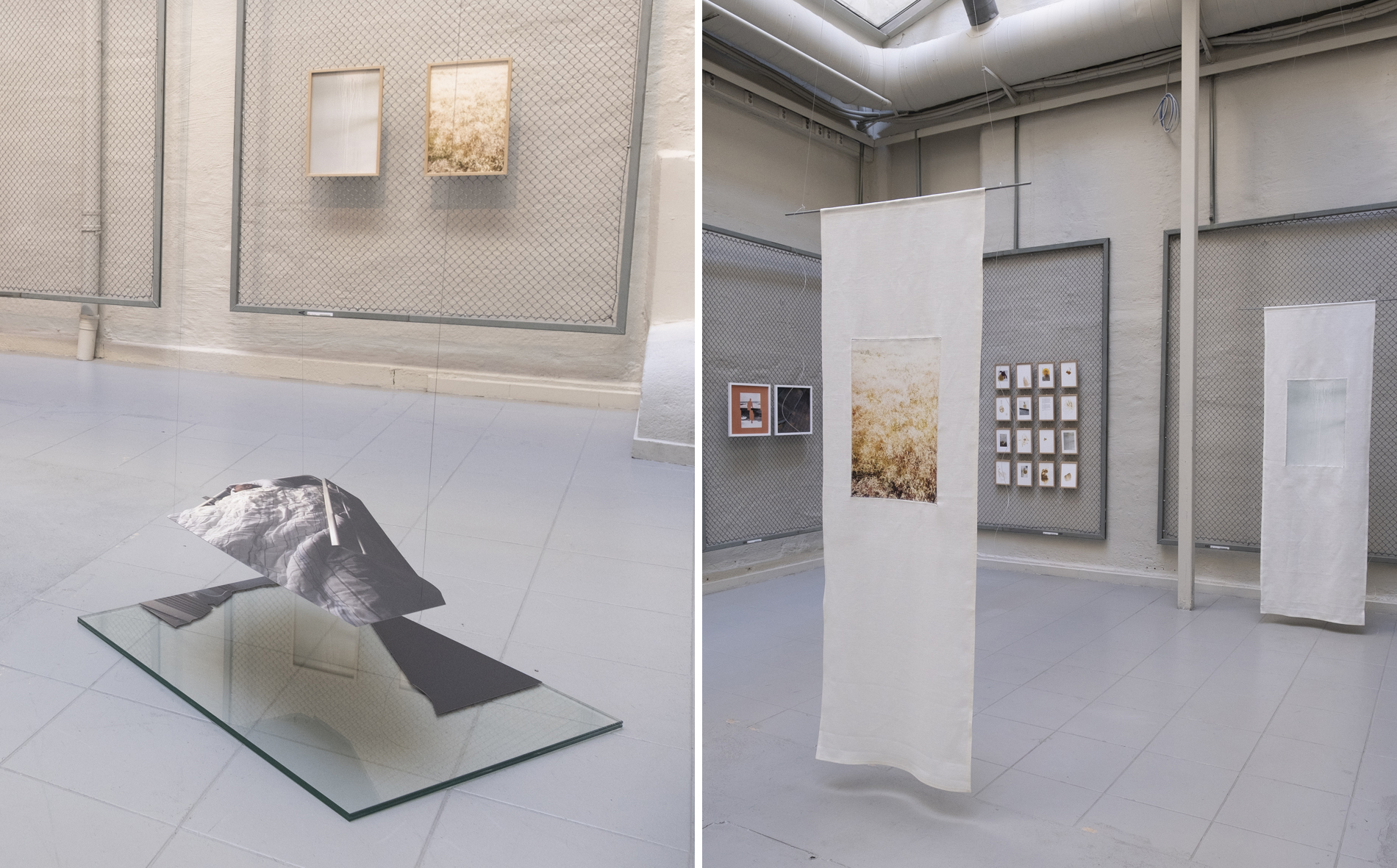
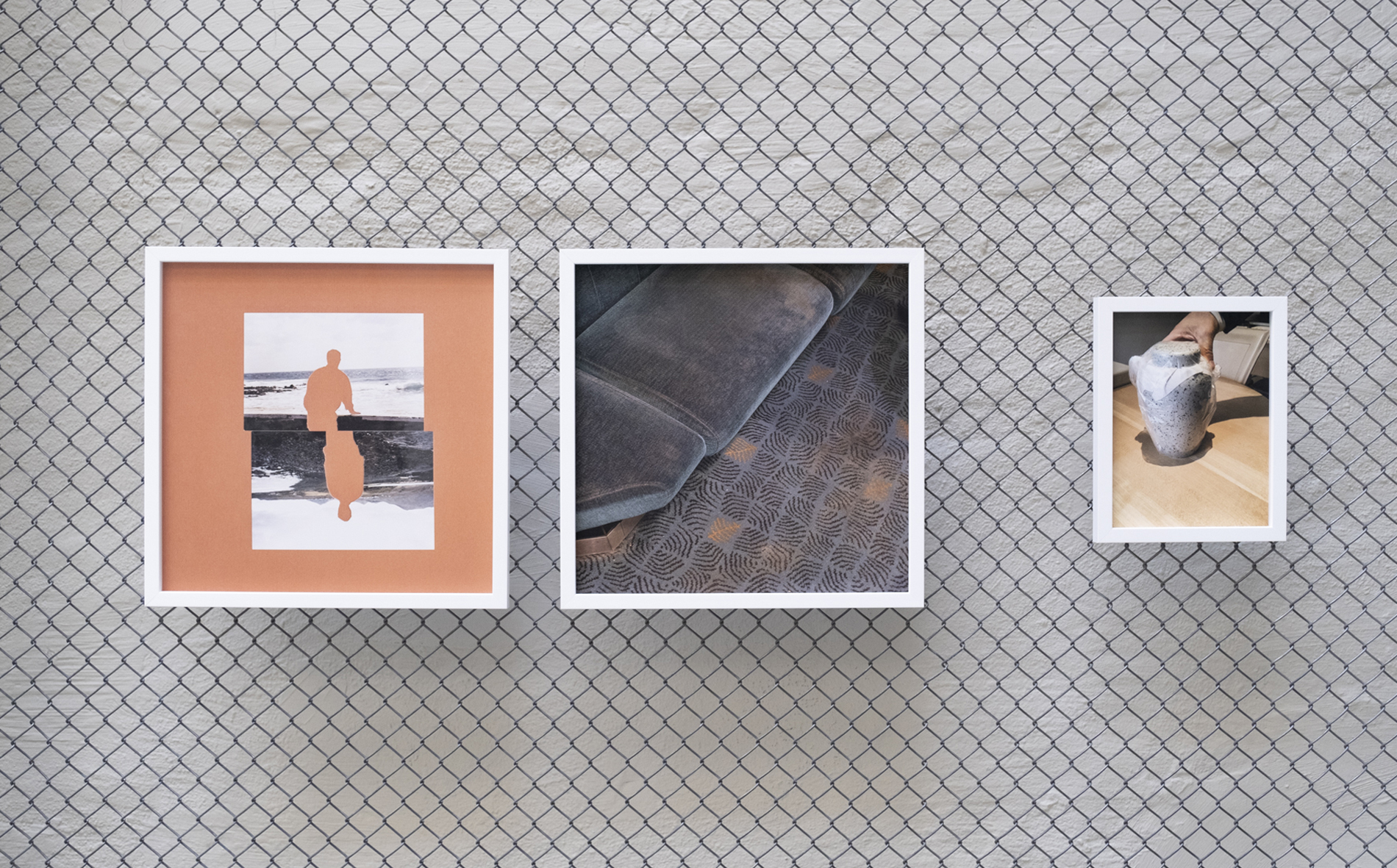
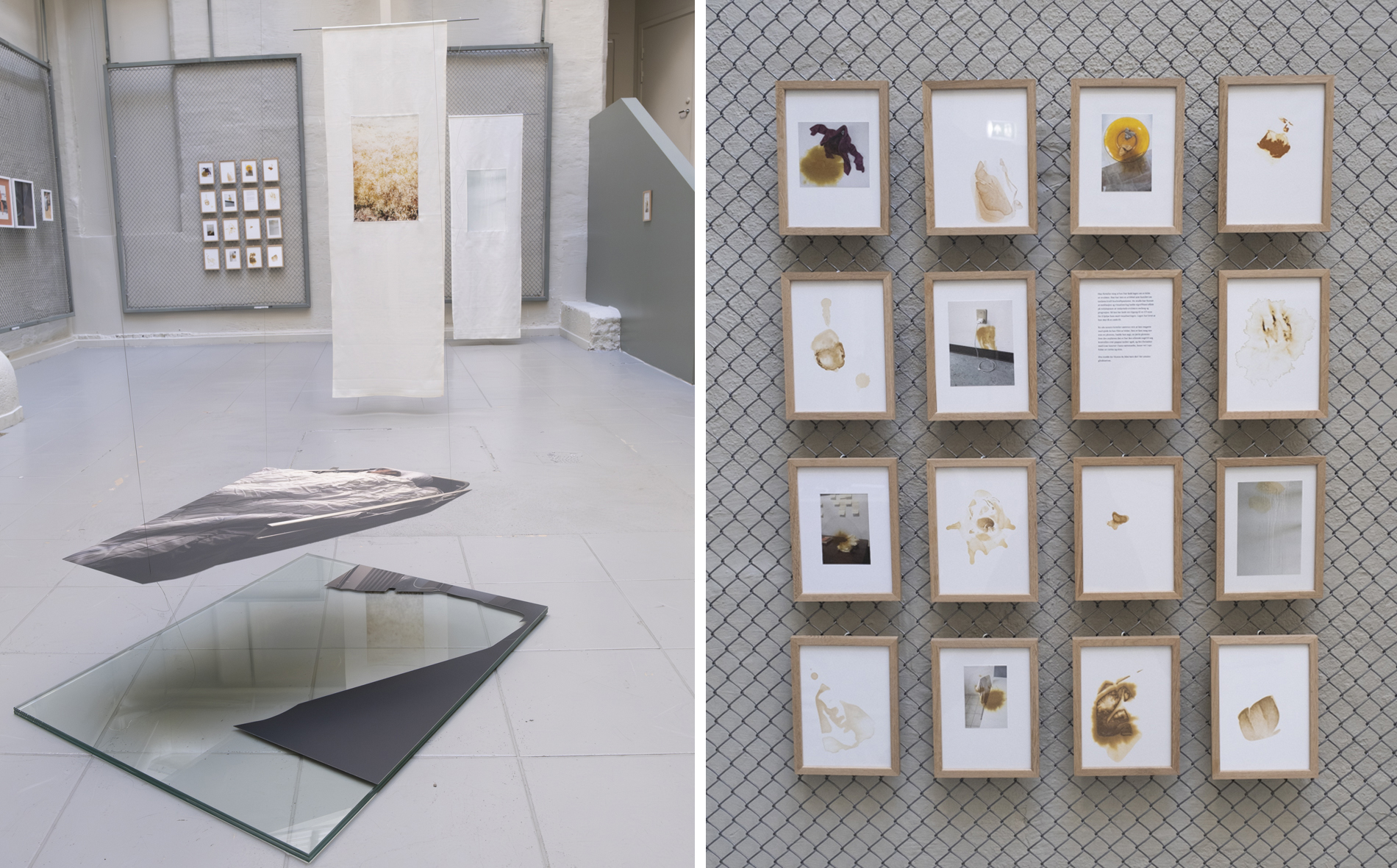
In the book project Månesyk, photography, collage and text create a personal story about loss and reconciliation. The collages touch on themes related to photography's role as memory in particular and the role of art as a space for processing more generally. Cutting the deceased father out of the photograph highlights the story of loss that can be found in the book, and new compositions tell a story about how the artist is looking for her father, reflecting on their relationship to find an expression of grief - not only for what is lost, but also what never was.
Photos and collages from the project where presented at the regional art show Østlandsutstillingen 2023, and Atelie.art comissioned an edition of silkscreen print as well as hosted an exhibition with works from the book project.
Y-blokka (2019-2021)
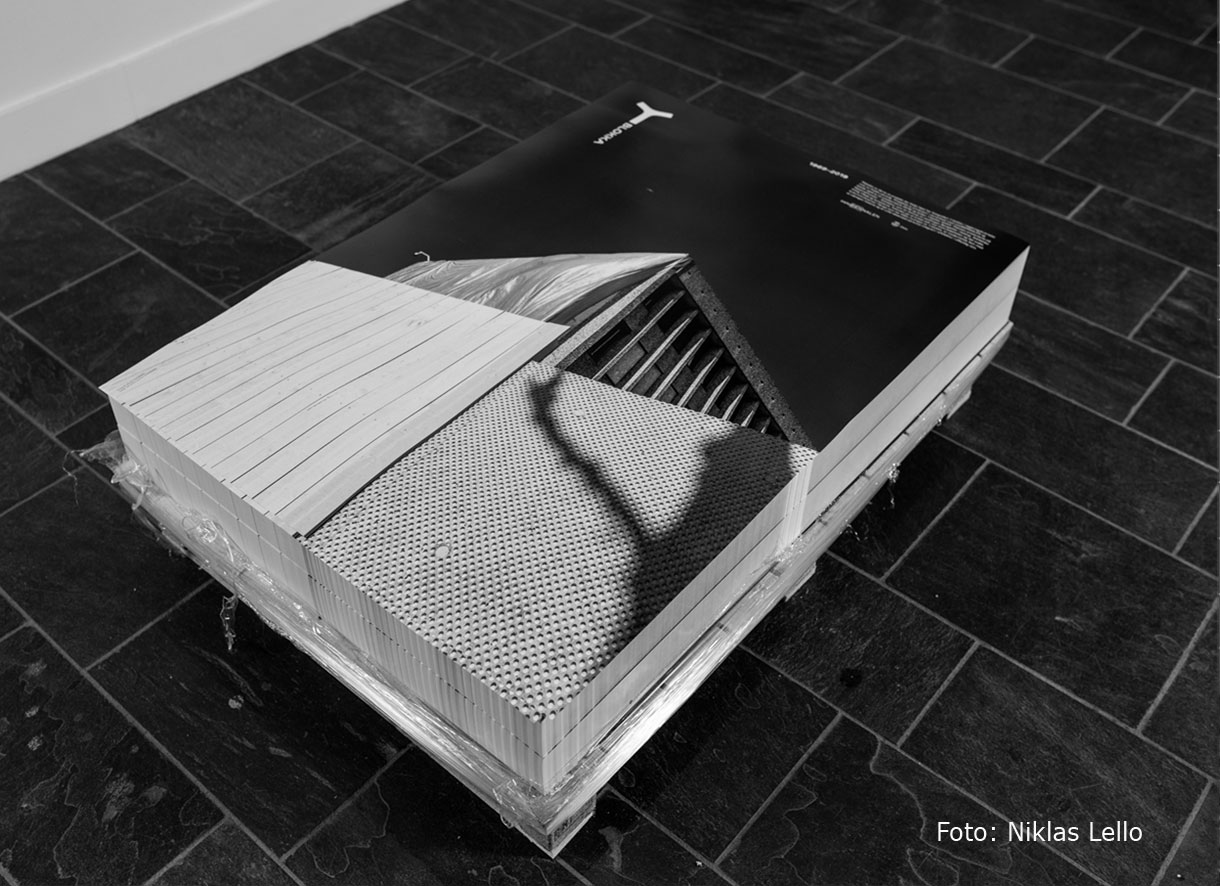
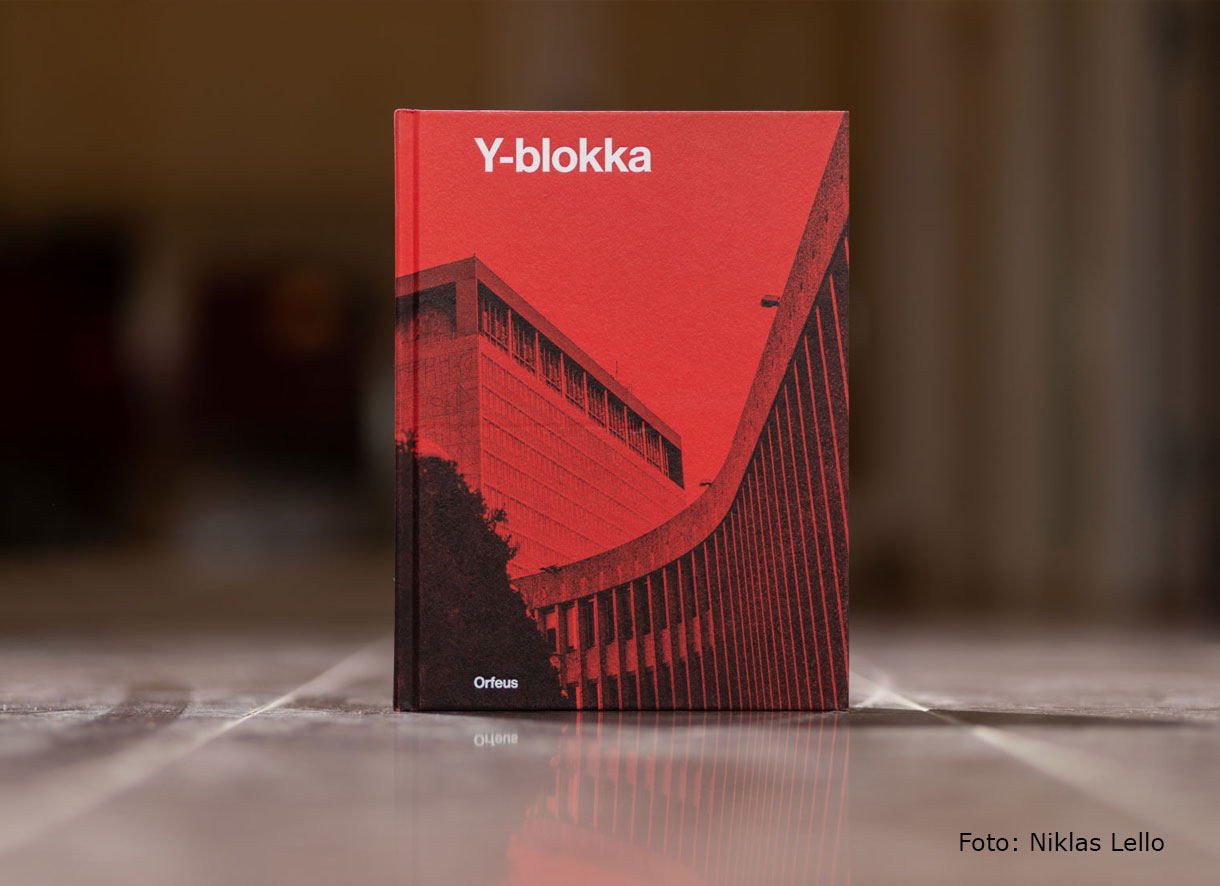

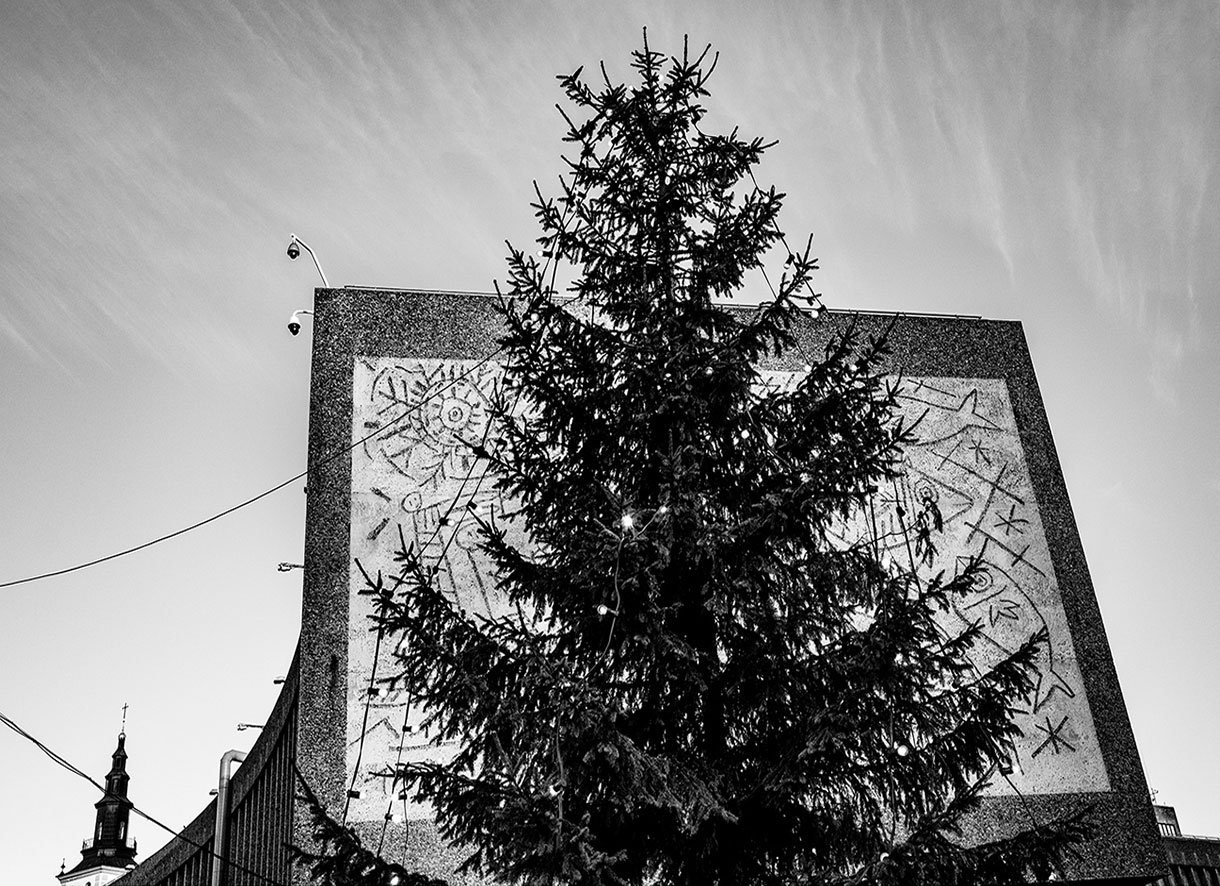

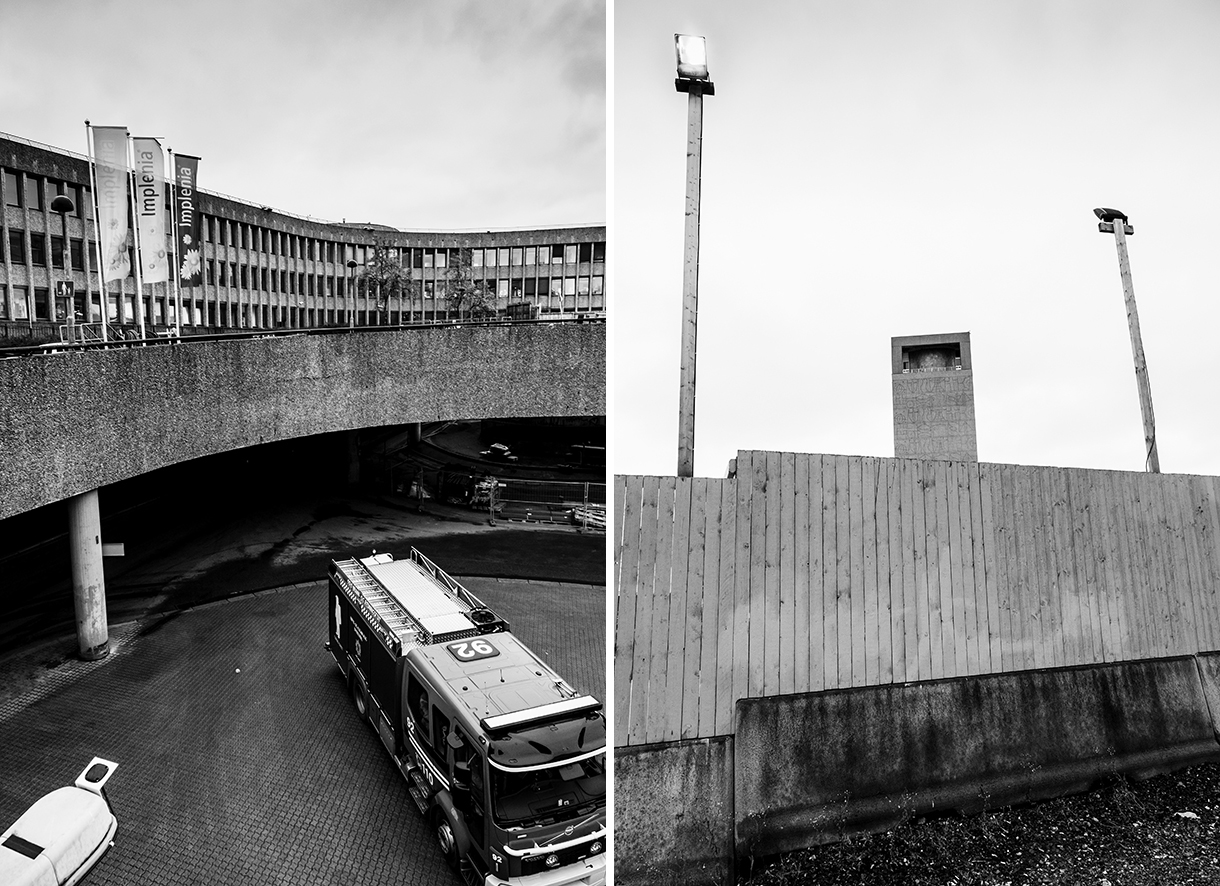

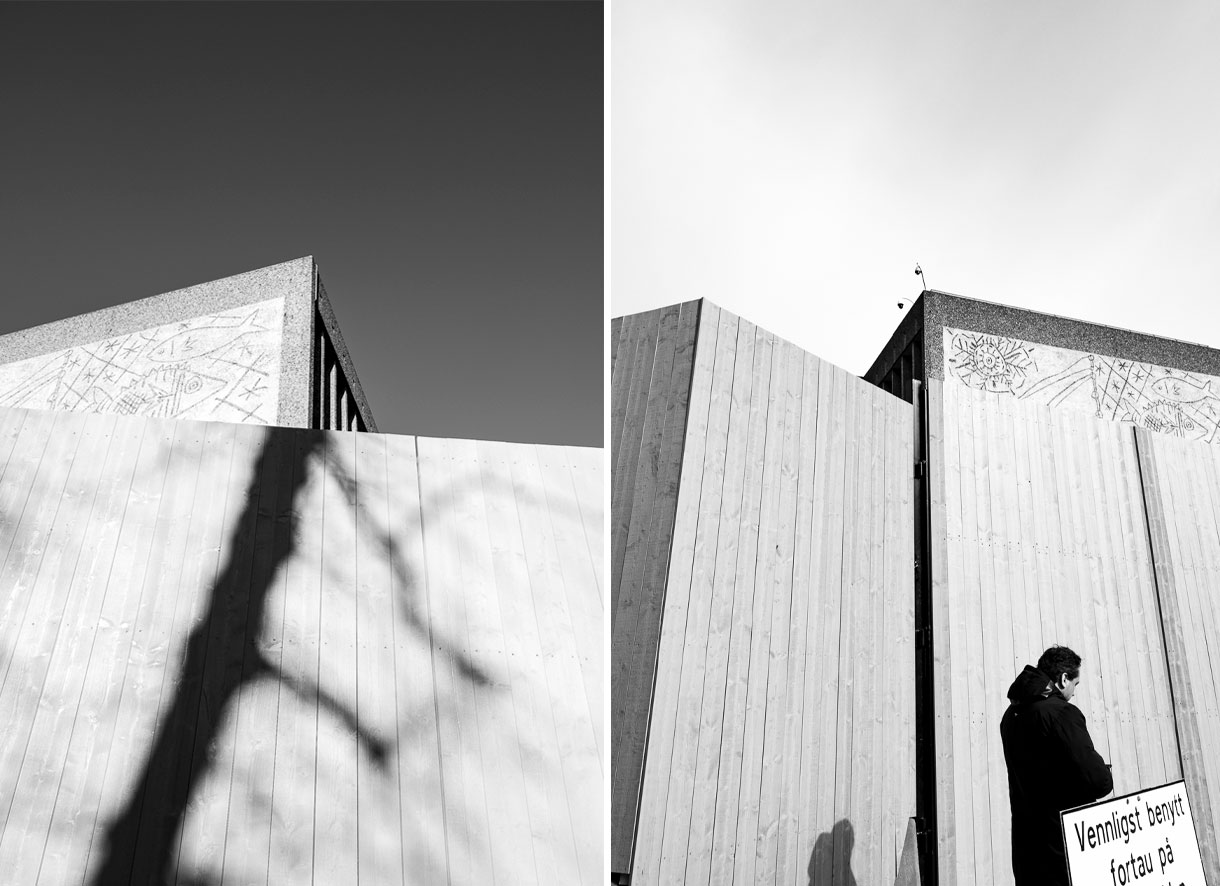
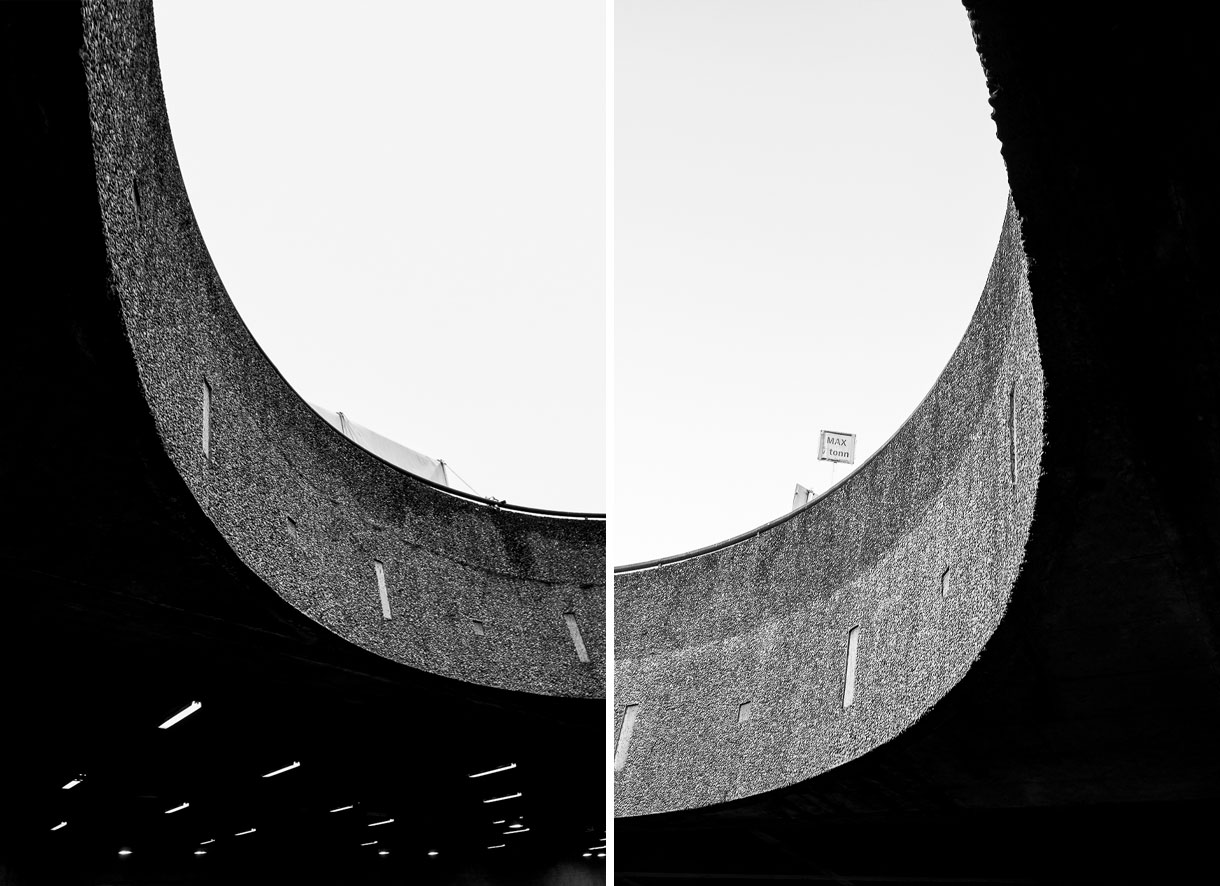
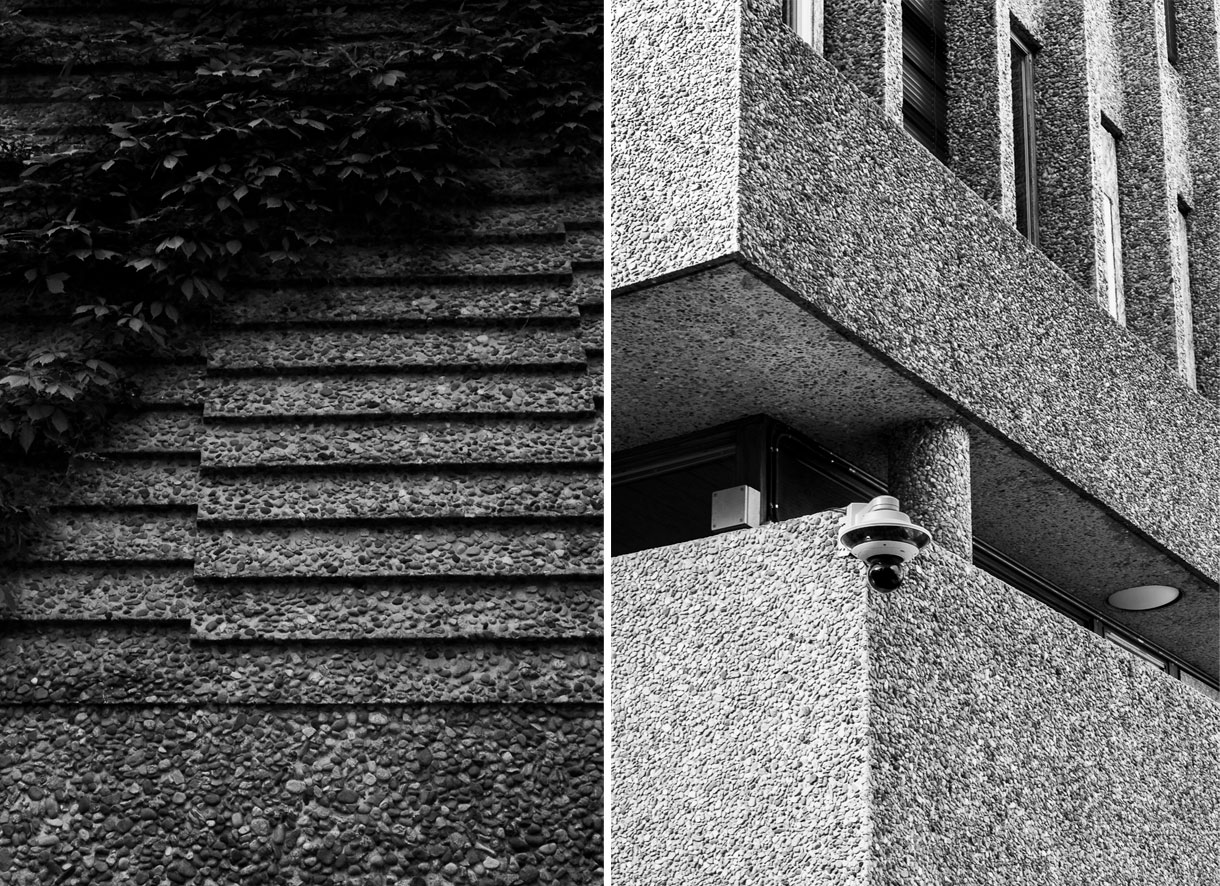
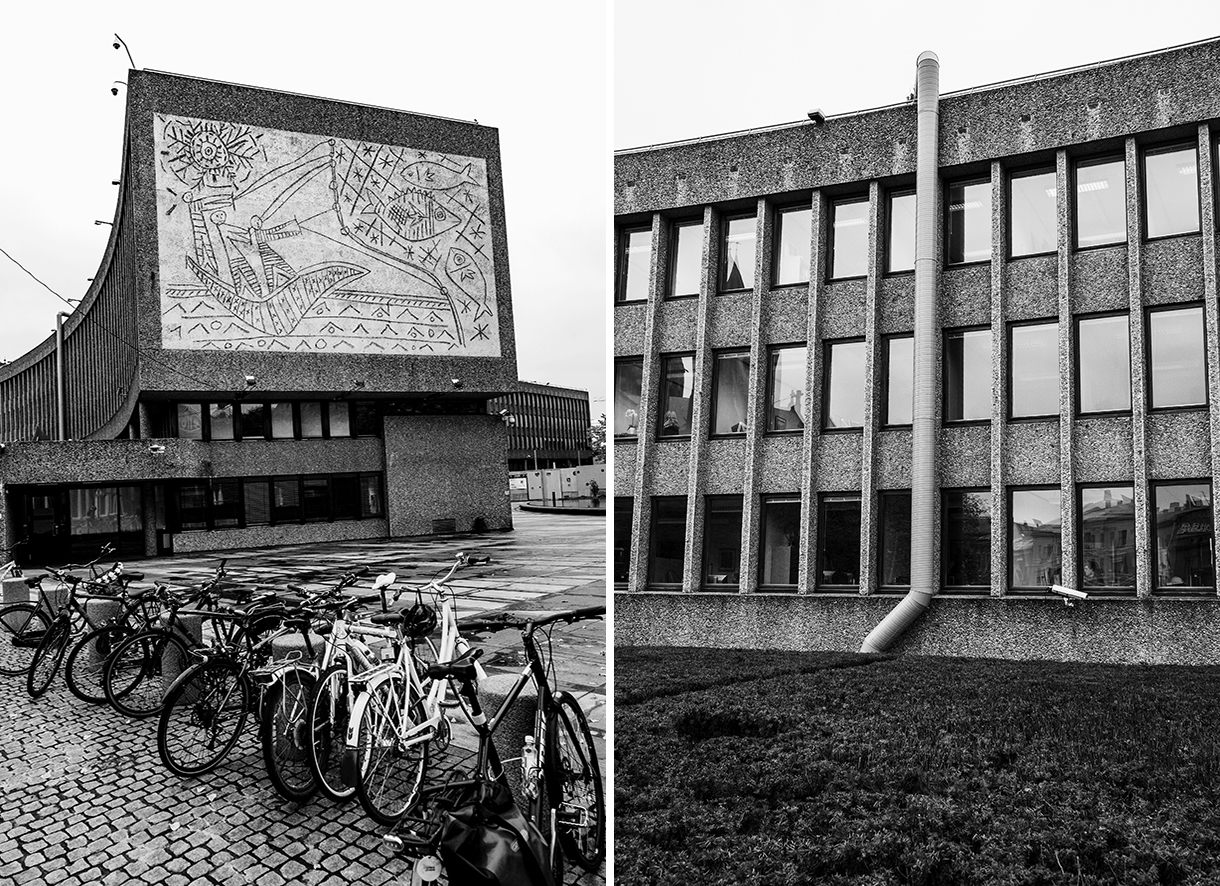
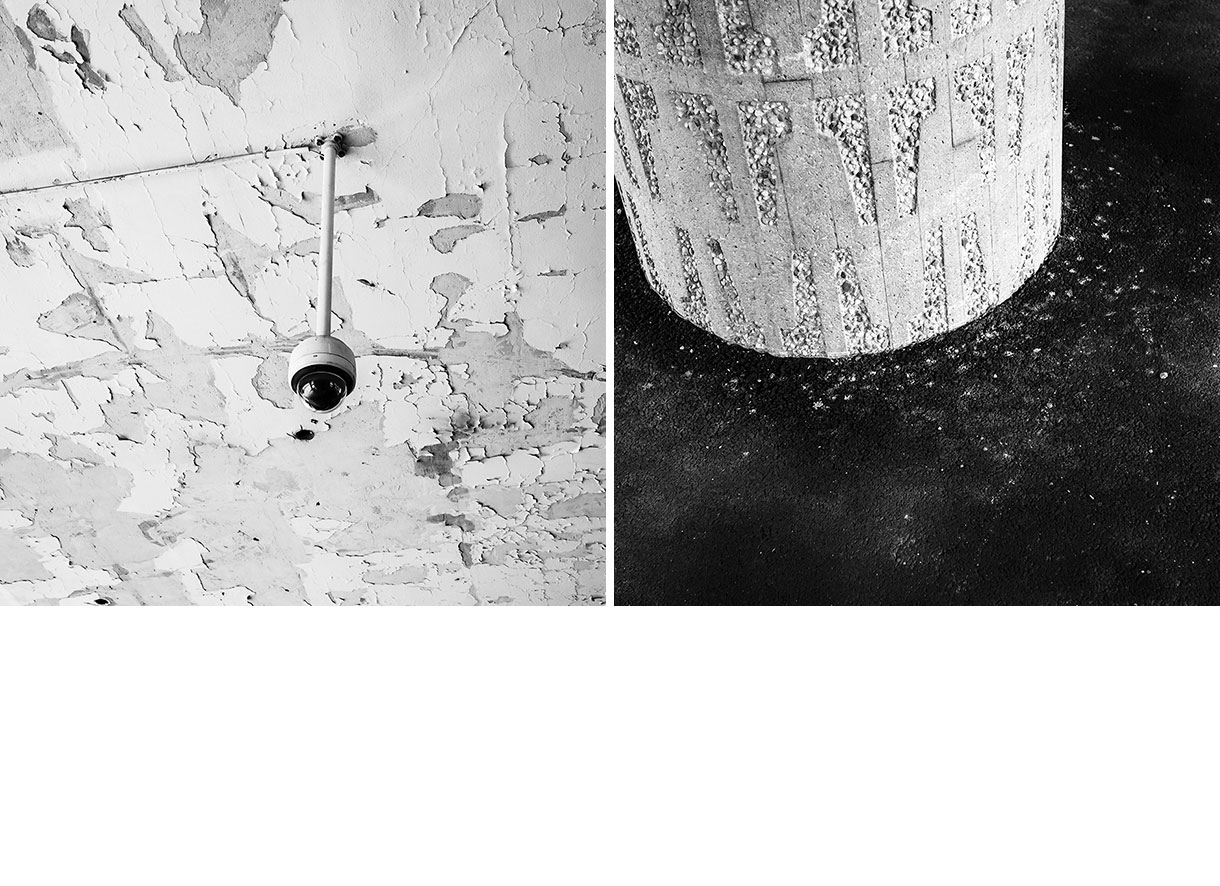

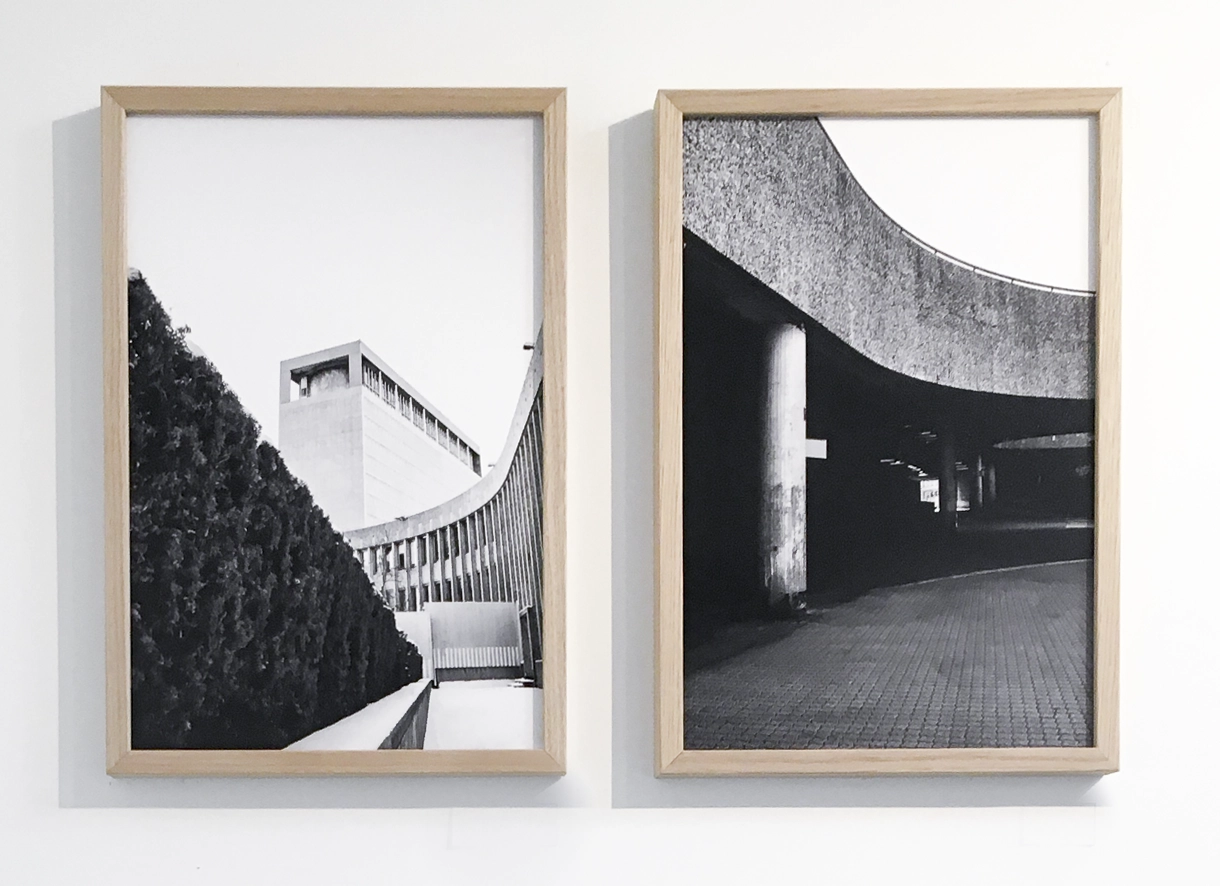
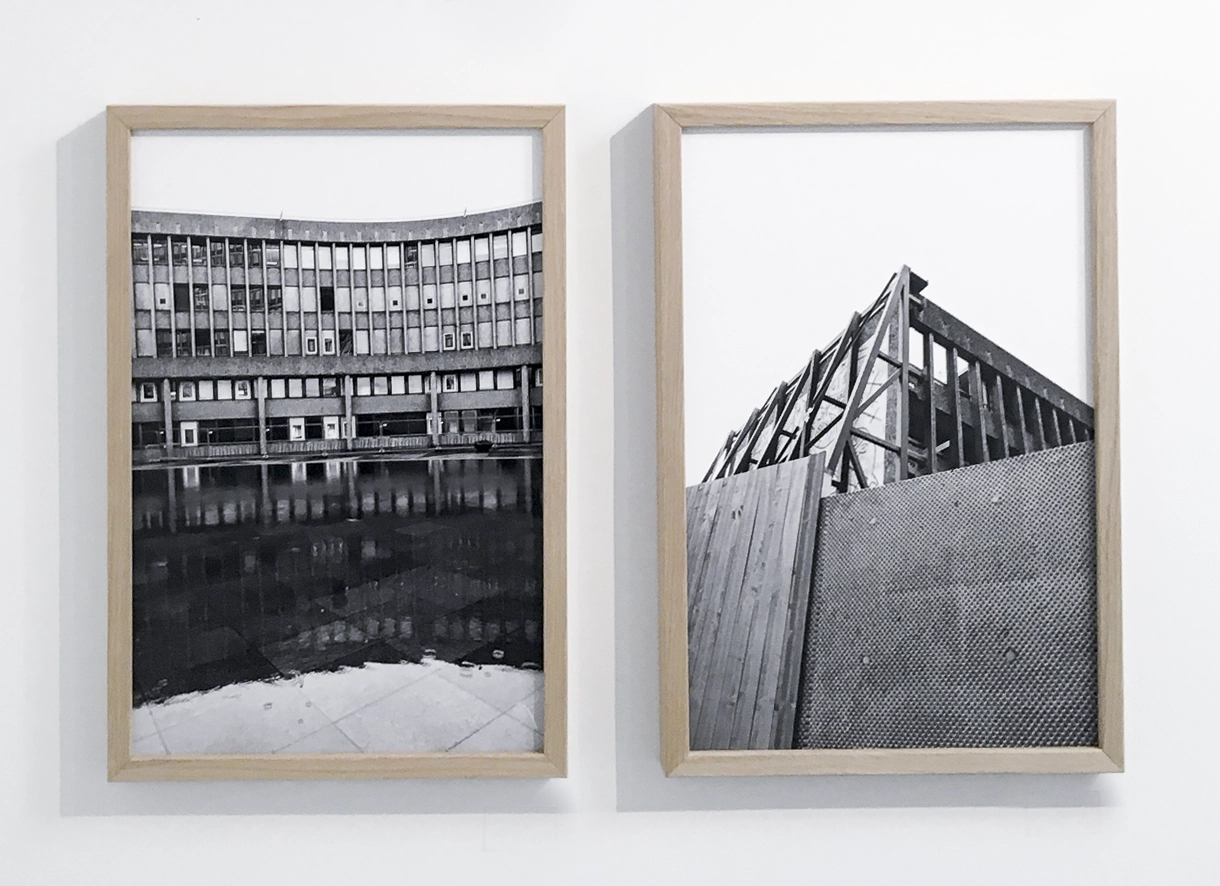

From 2016 until the demolition started and the integrated art was separated from the building body, Katja Høst has photographed the iconic modernist building, the Y-block. Designed by the architect Erling Viksjø and opening in 1969 it formed part of the Norwegian government quarter for over fifty years. The pictures show the building scarred by the 2011 terror bombings, addressing the lack of historical awareness in cultural policies allowing the demolition of this major monument to the Norwegian welfare state. This has resulted in a postcard project (2019), a publication (2020) and a poster (2021).
Since October 2019, 24 of Katja Høst’s photographs have been distributed around the city in the shape of free postcards. The public could find them, and still can, on various locations in Oslo, and take them home, send them, hang them on the wall, or do whatever they wanted to do with them. In this way, the postcard was in circulation in different public spheres and fostered new relations between the public and Y-blokka.
In the fall of 2020, Orfeus Publishing published more than 70 of Høst’s photographs in the book Y-blokka. At that time, the building was already history.
As a conclusion of the project, Katja Høst has made a poster from a photograph of the building taken right before the demolition started. The posters are presented at the National Museum – Architecture in Oslo as a footnote to the exhibition “Concrete in Transition. The architect Erling Viksjø and his artist collaborators”. The posters are free for the public to take home.
Y-blokka was produceed for osloBIENNALEN, first edition.
Sites for postcards include: osloBIENNALEN's information centre // Kunstnernes Hus // Munch Museum // Henie Onstad Kunstsenter // Fotogalleriet // Litteraturhuset // Aars // Grev Wedelsplass Auksjoner // Rommen kultursenter // Doga // Oslo National Academy of the Arts // National Library // Deichman public library - Hovedbibliotek // Deichman public library - Majorstuen // University of Oslo, the HF-library // NVE-library Department of Urban Development // Ark bookshop (National Museum) // Visit Oslo tourist information Østbanehallen // Kvinnesenteret // Barnesenteret // Kreftsenteret, vestibyle // Øye, poliklinikk // Glass gaten // Cafe Årstidene, Gaustad // Hydro Bygdøy Alle 2 // Quality Hotel 33
Dasein (2017)
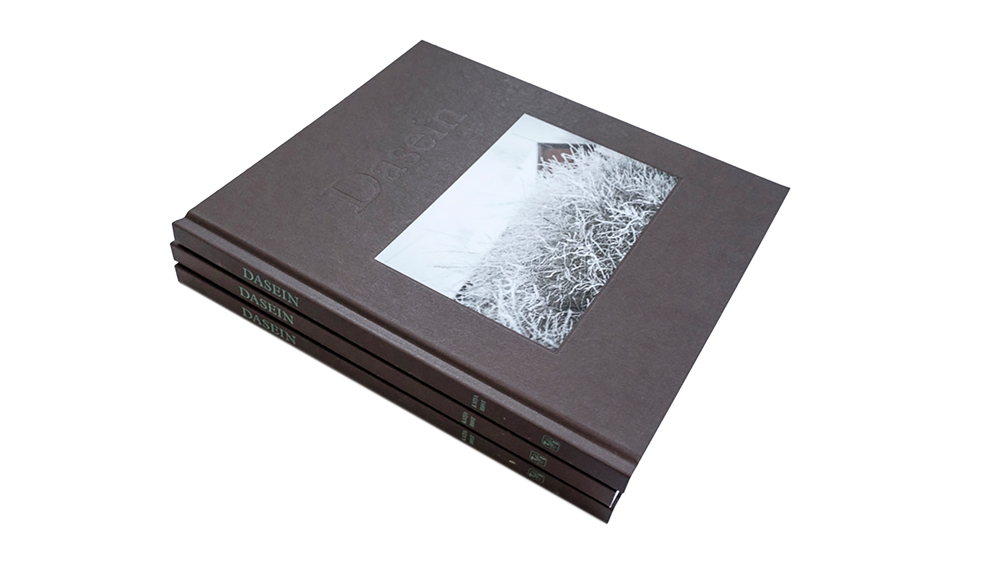
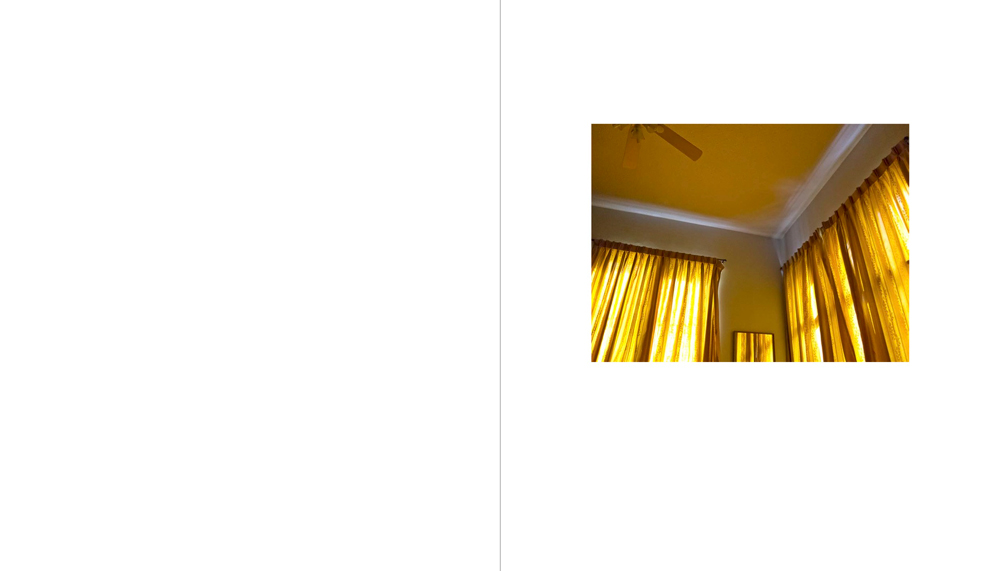
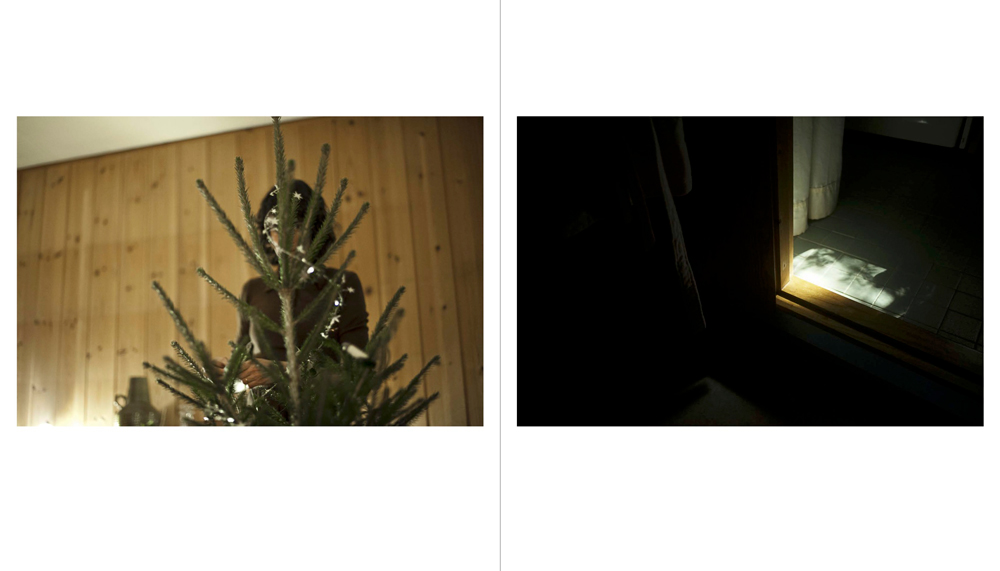
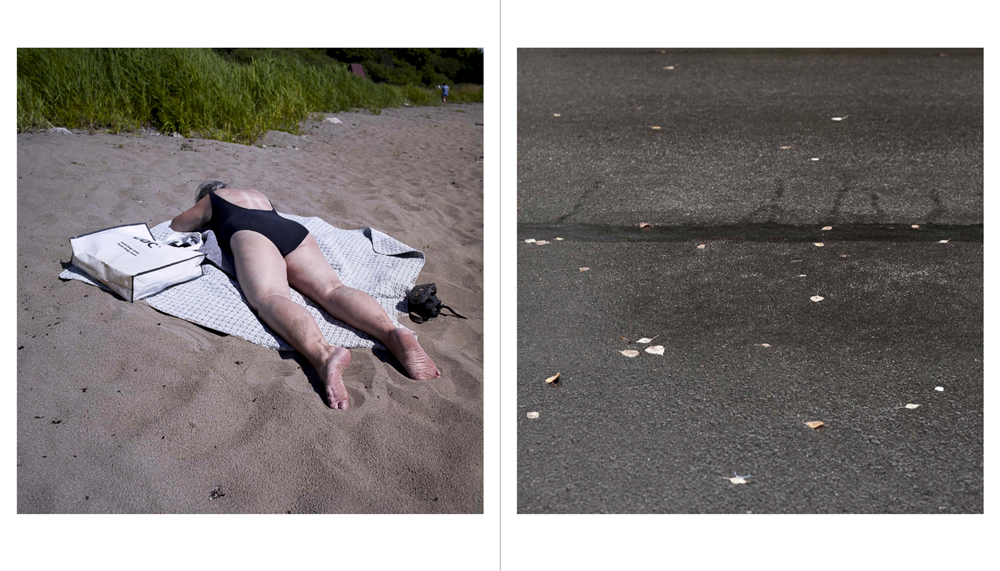
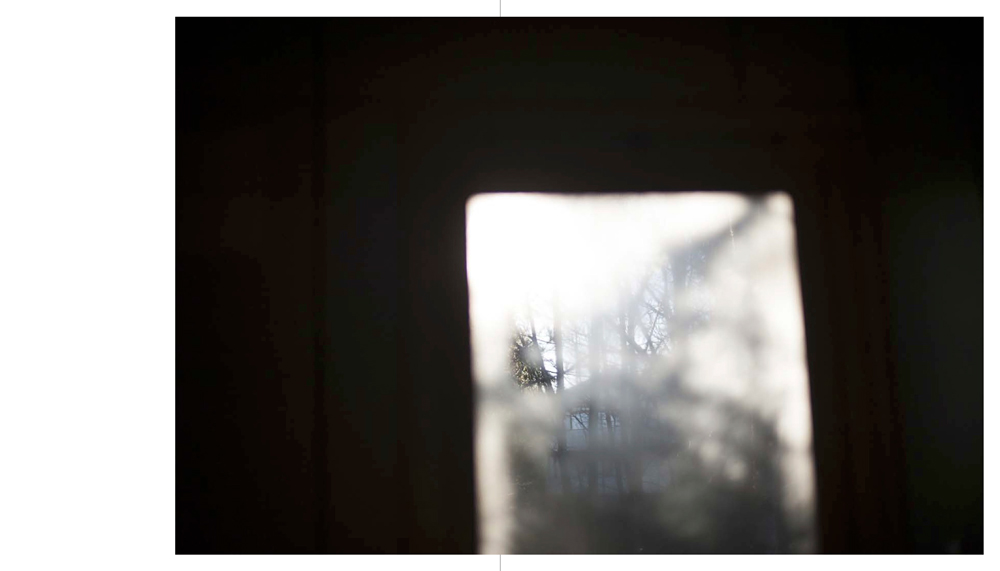
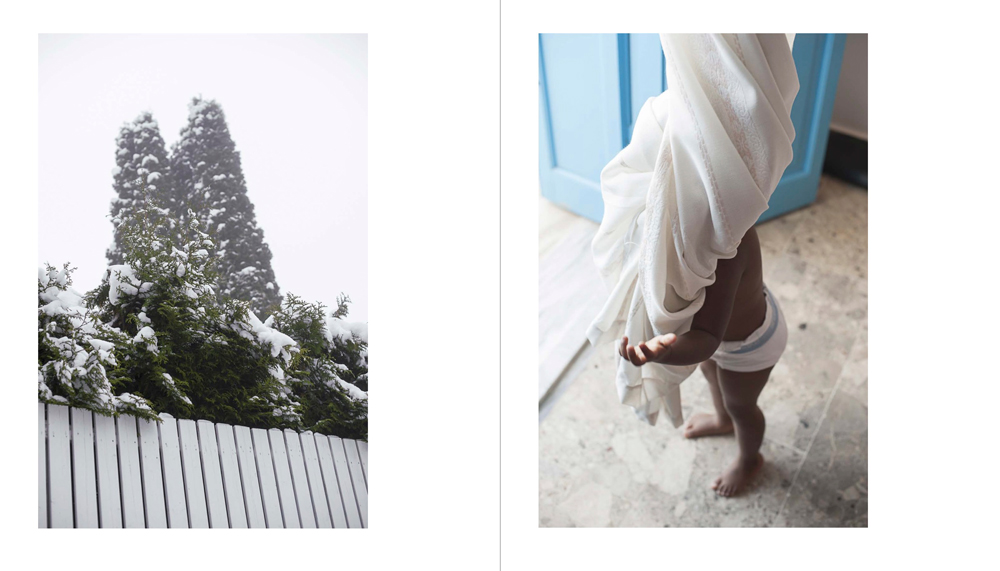

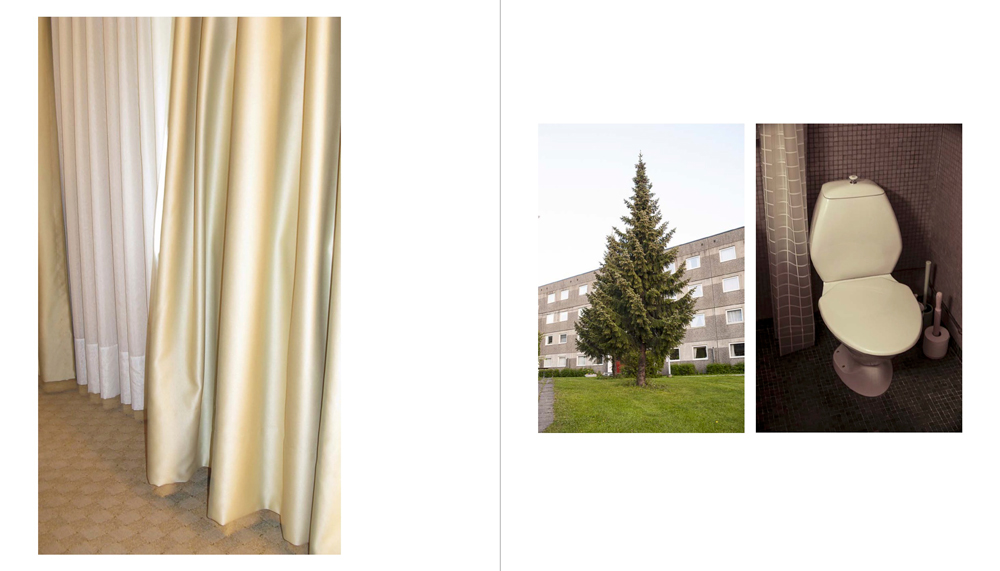
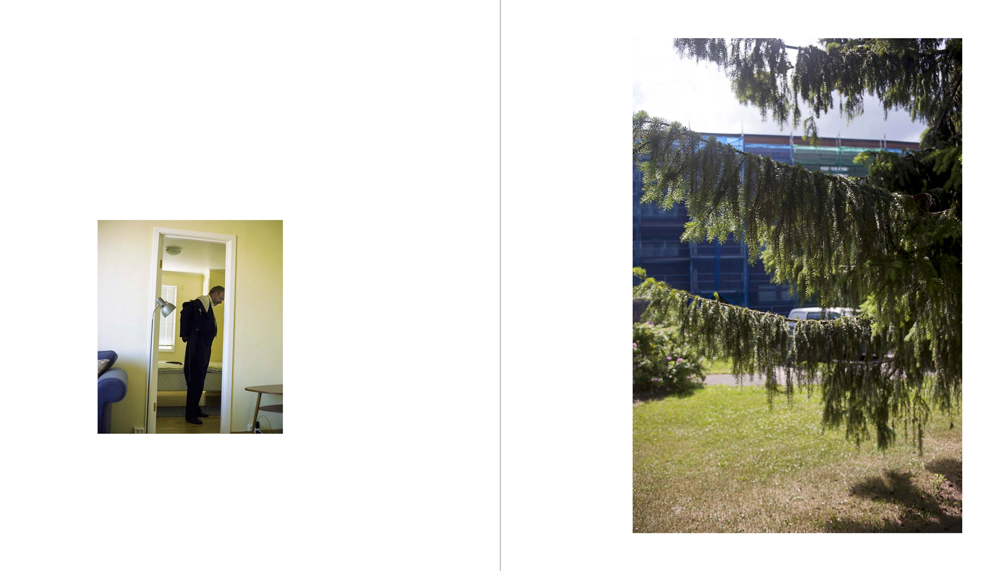
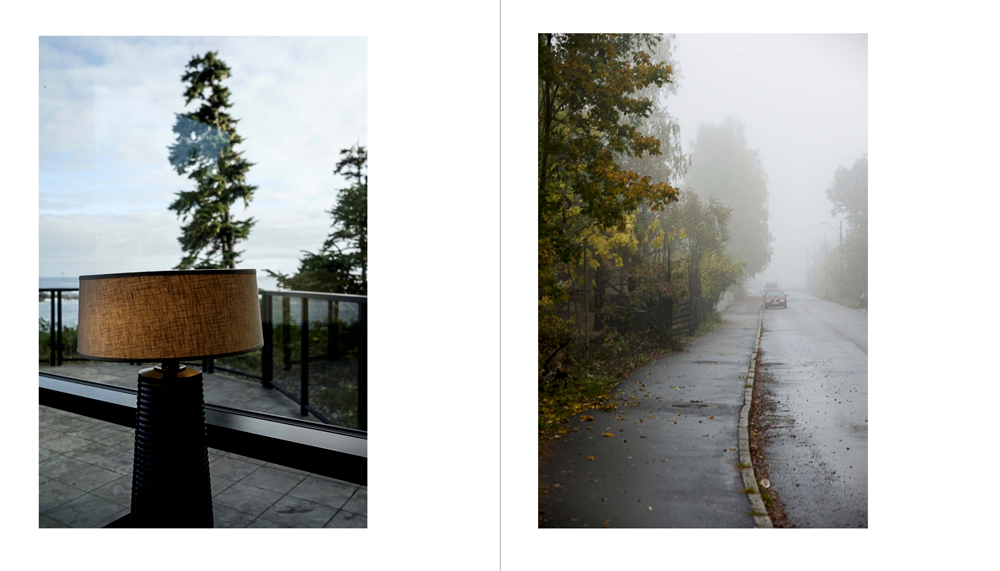
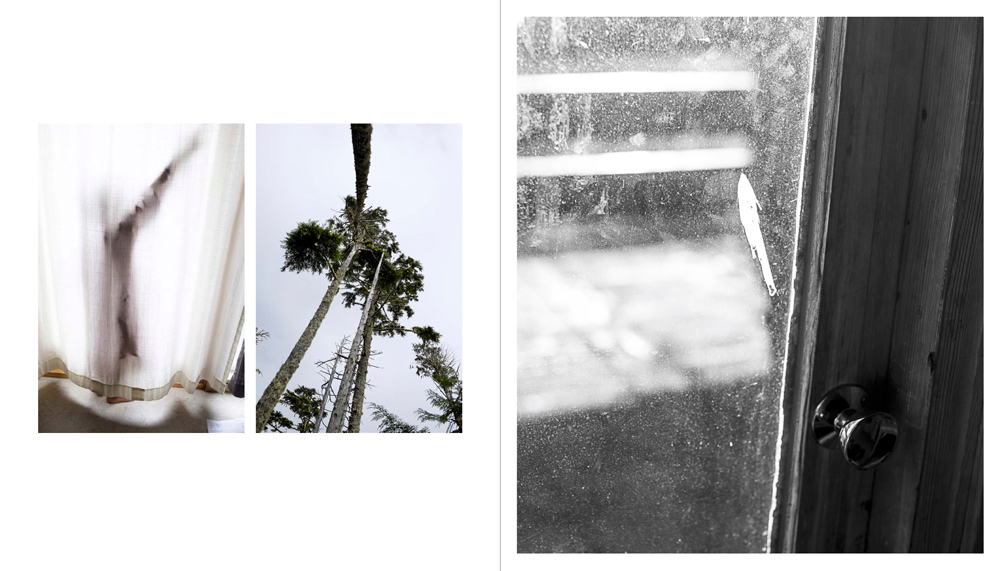
Photobook published by Teknisk Industri AS.
"That the familiar world is often unsatisfactory cannot be denied, but it is not, for all that, one we need abandon. Awkward though it might be, ours is a world that still confers upon the artist an energy and sometimes even a comfort. We need not refuse to recognize that world any more than we need blow it up. We need not be seduced into evasion of it any more than we need be appalled by it into silence."
Dorothea Lange & Daniel Dixon (1952). Photographing the familiar. A statement of position. Apperture, (2), 5-15.
Haugerudbekken (2016-d.d.)

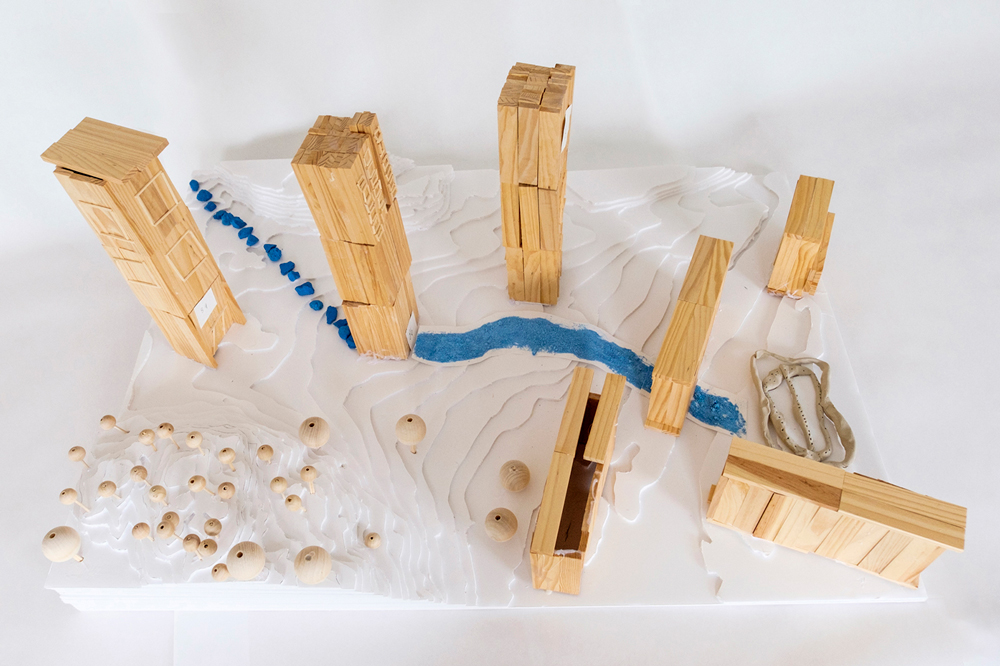
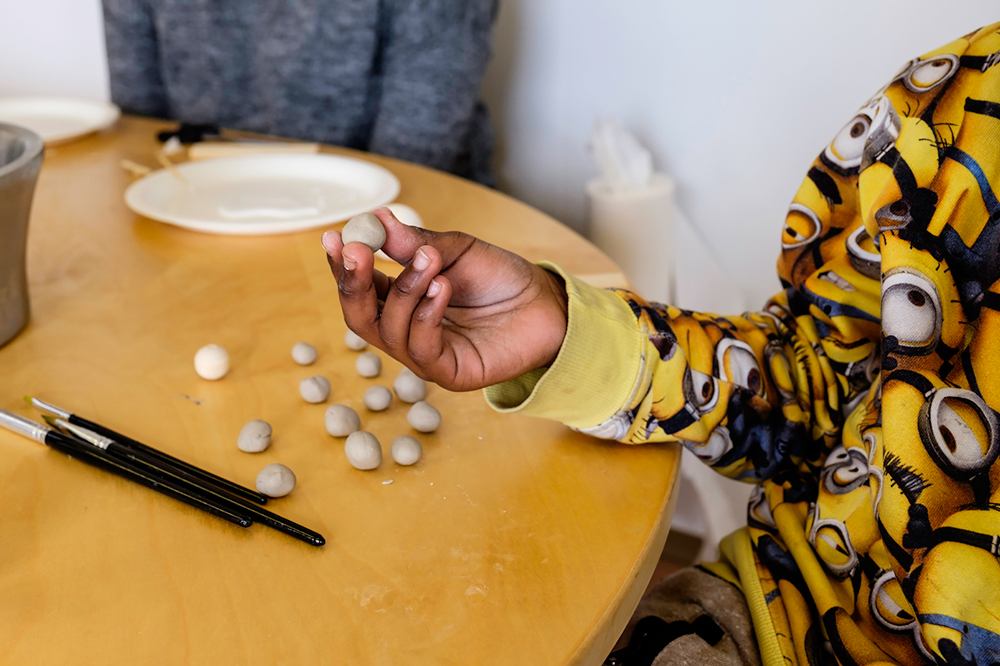
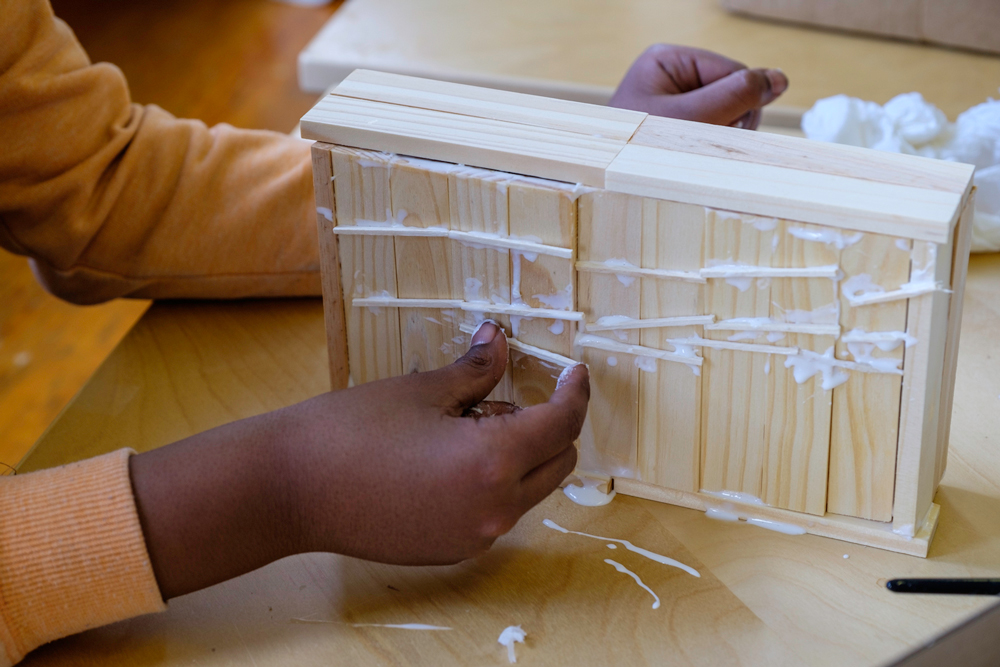
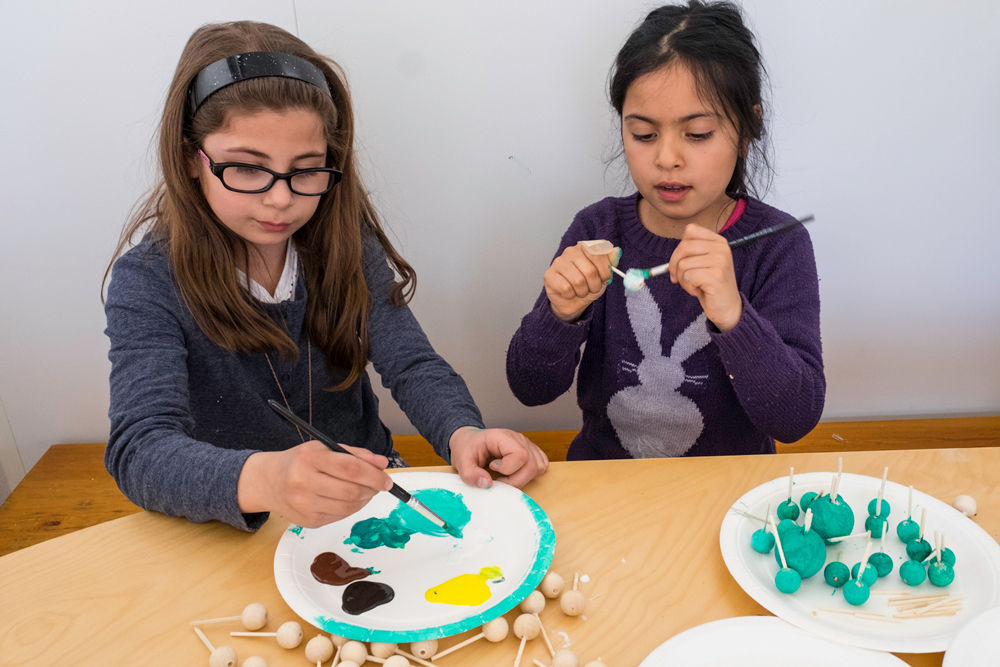
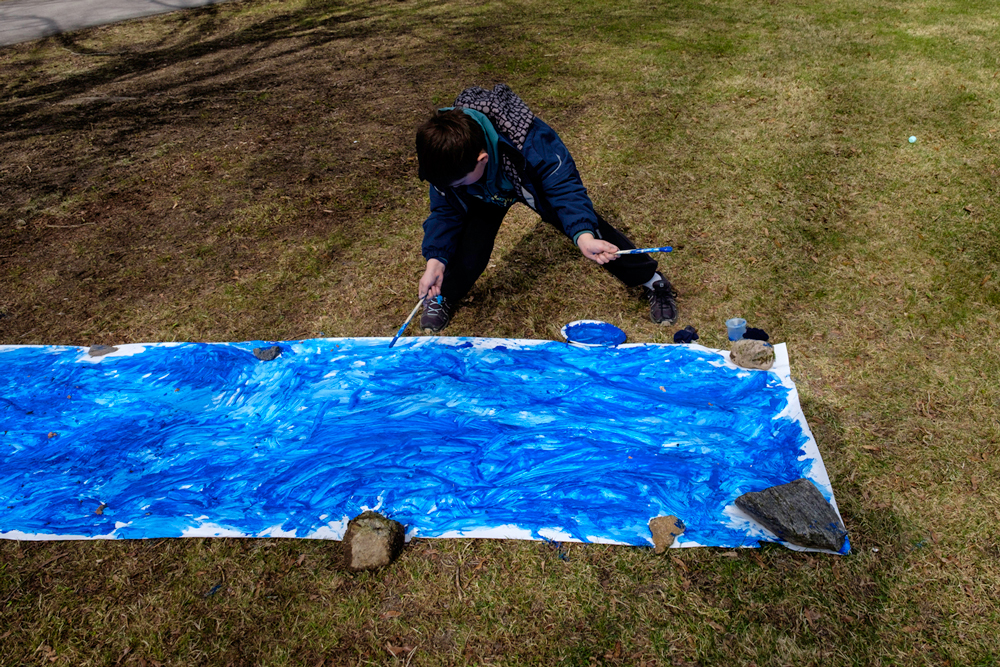

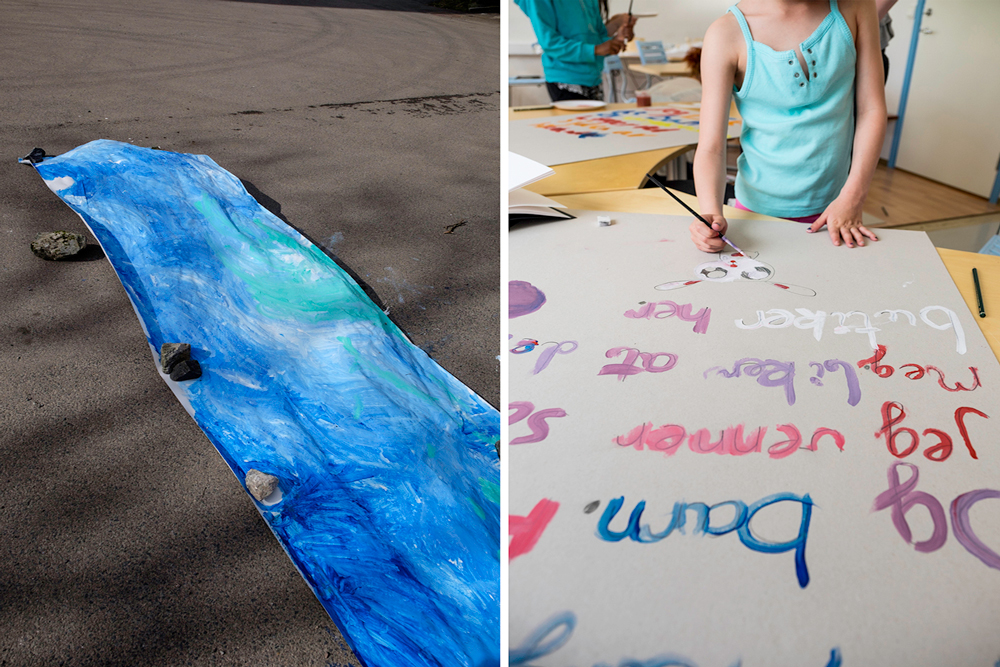



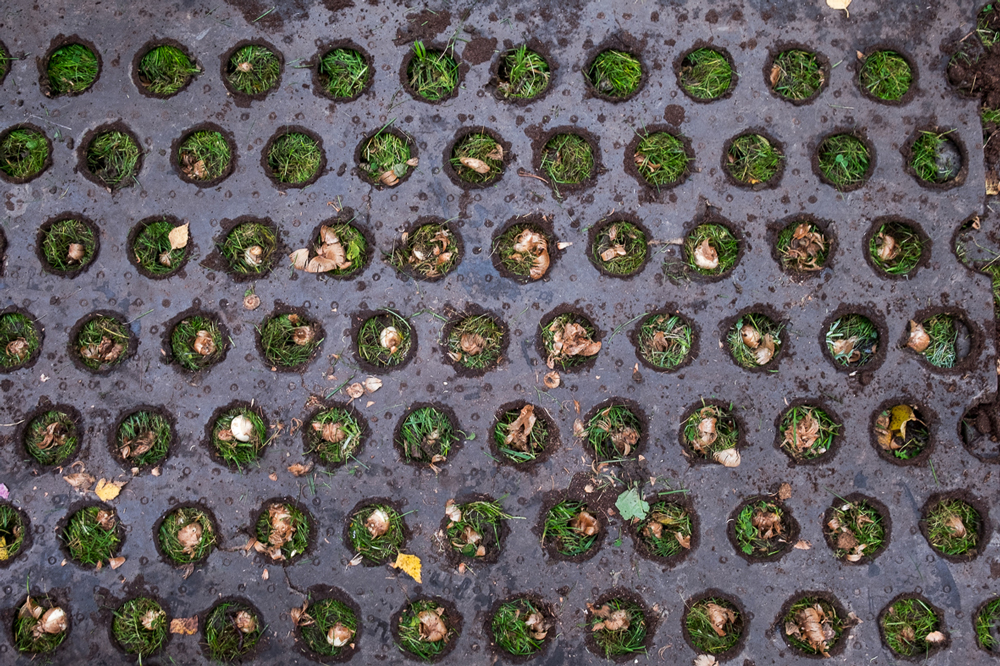
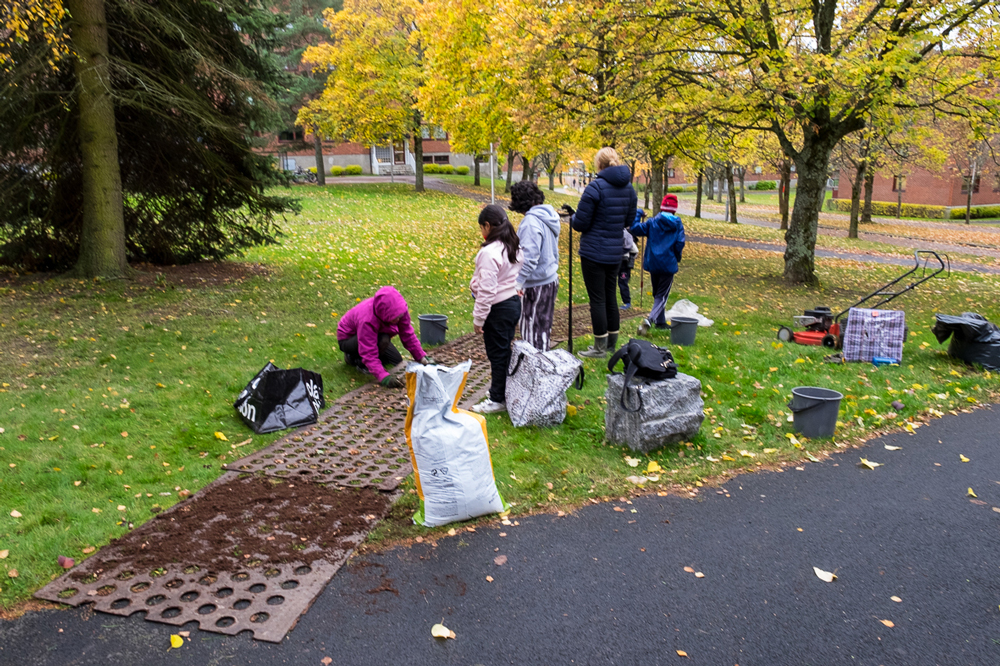
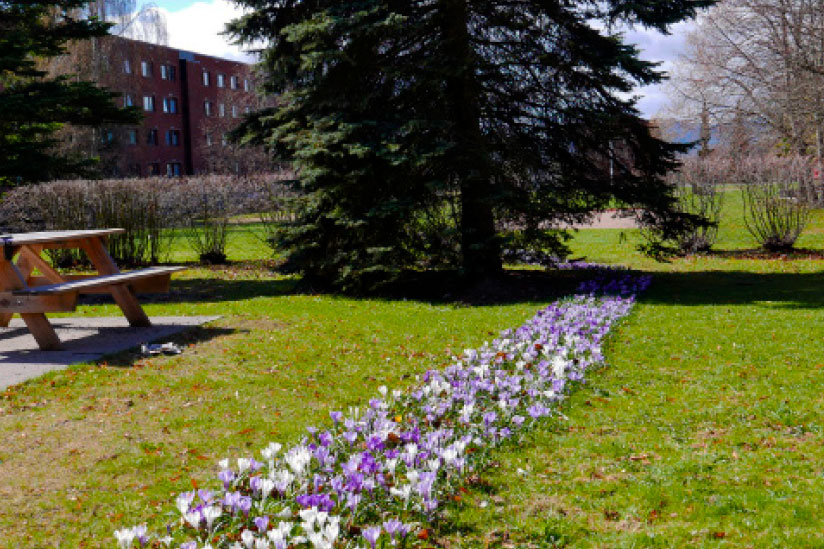
Haugerudbekken is a site-specific art project where the artists Katja Høst and Liva Mork collaborate with children at local schools in Haugerud / Trosterud to create public art installations in the neighborhood. It includes relational aesthetics, landscaping, photography, text and sound.
The project was originally based on Haugerudbekken, a stream unknown to most people in the area. It was dug down and hidden in pipes during the 60s and 70s when Haugerud was developed with condo-buildings, subway and a shoppingmall. Together with the children, Høst and Mork have explored the location and history of the stream, as well as developed ideas for how the streams original path can be visualized in today's suburbian landscape.
Haugerud / Trosterud is facing new major development with local area improvement initiatives as well as a new zoning plan. In this context, the artists strive to promote the children's voice in this development process, producing public art installations reflecting on the area's history, present and possible future.
So far, 5 sub-projects have been completed, of which 4 have been produced as public art (only the first presented here). In addition, a research article based on the project has been published in the Nordic Journal of Art & Research (special issue: Art in education).
www.haugerudbekken.no for more information on the project at large (NB: norwegain only).
Her et sted / Here somewhere (2013)
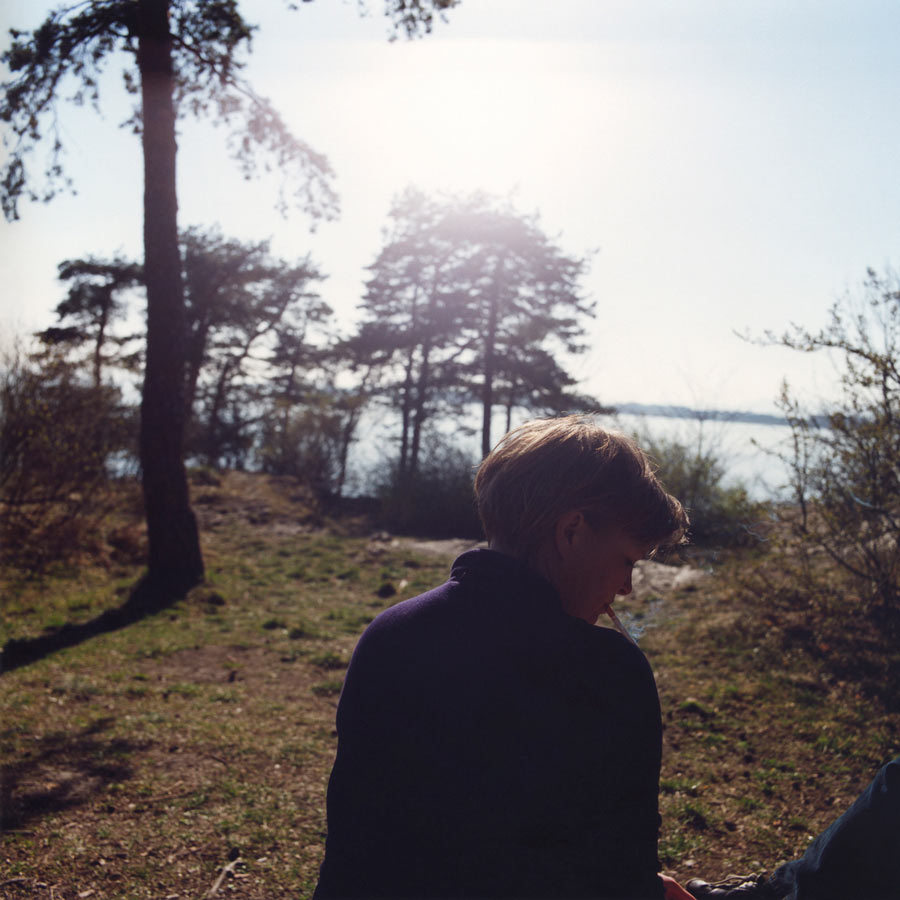

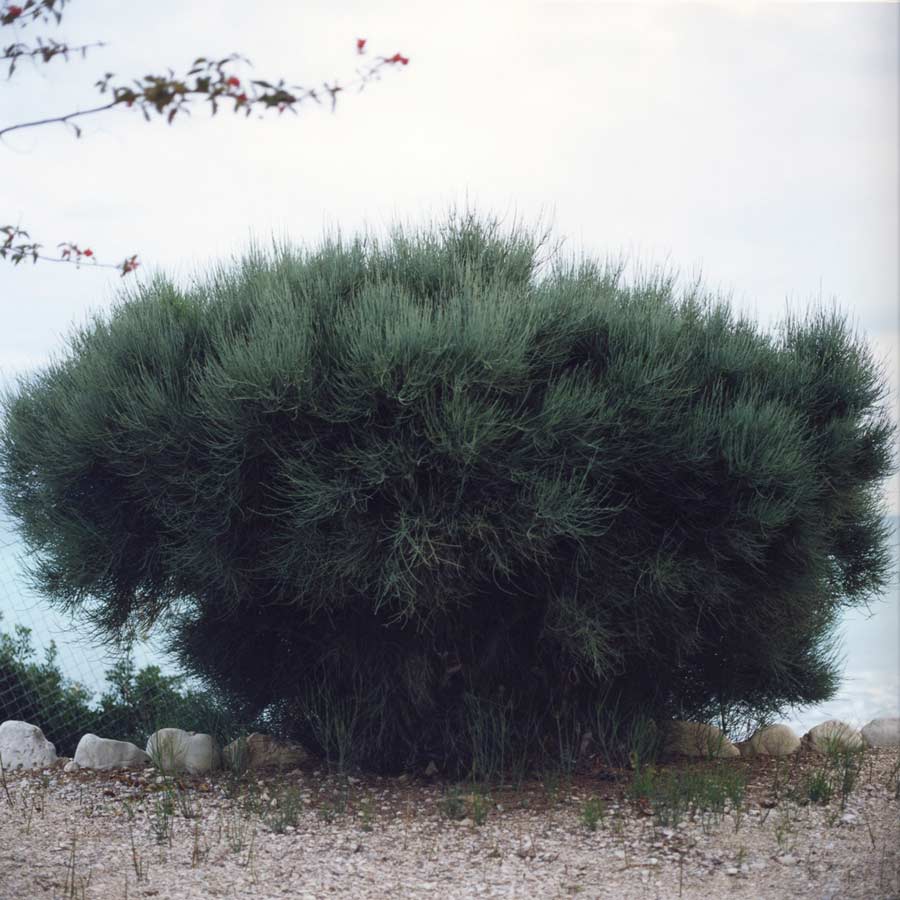
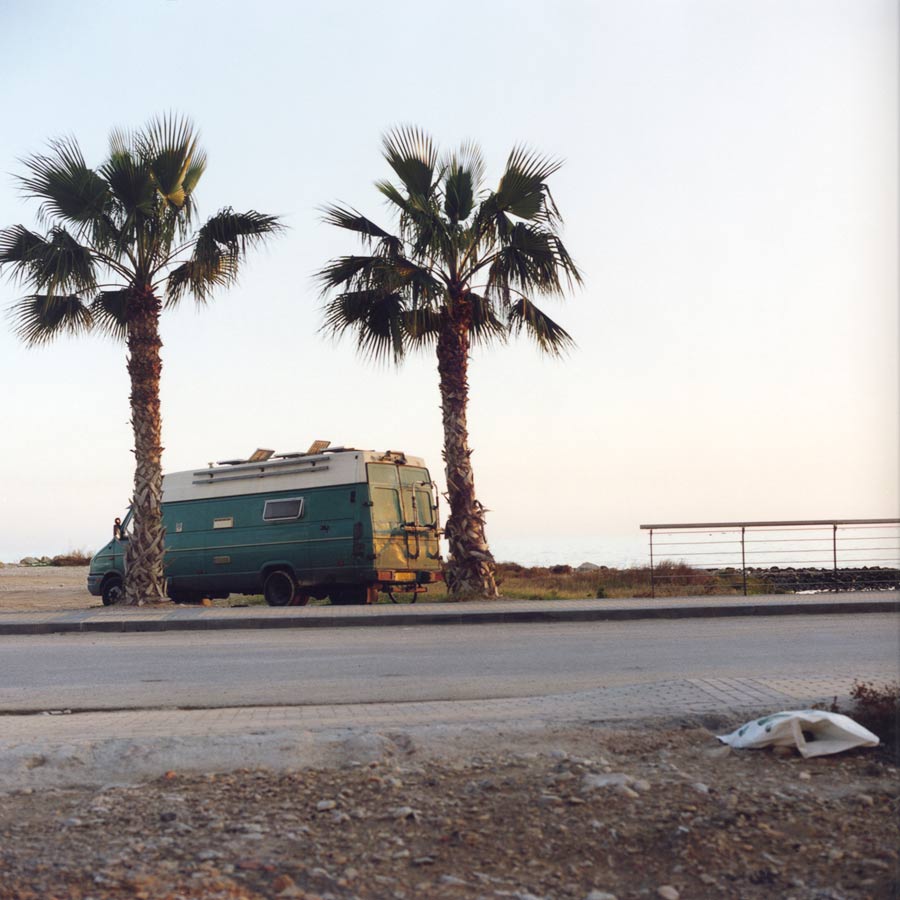
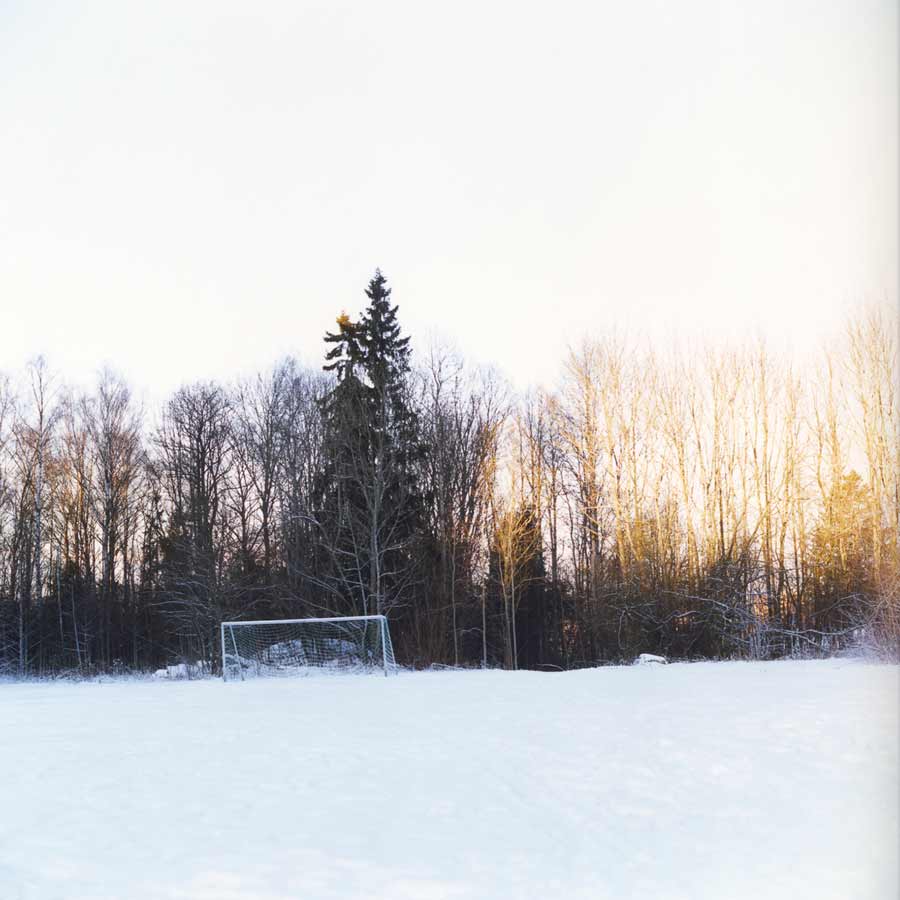
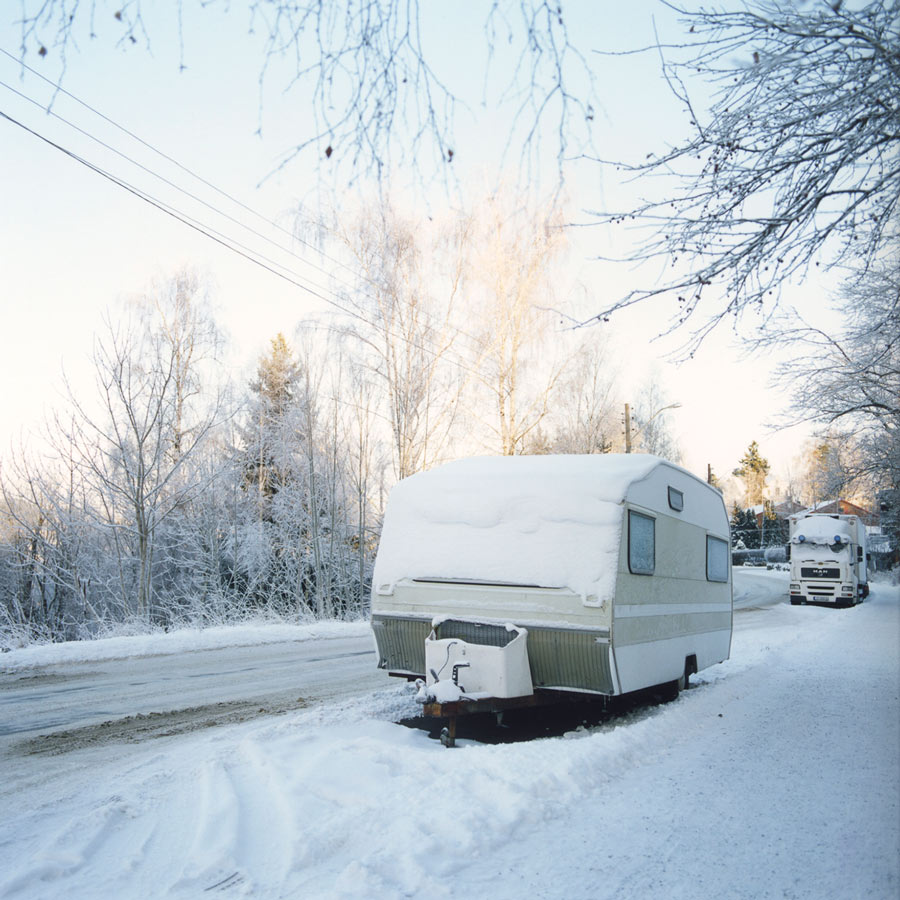
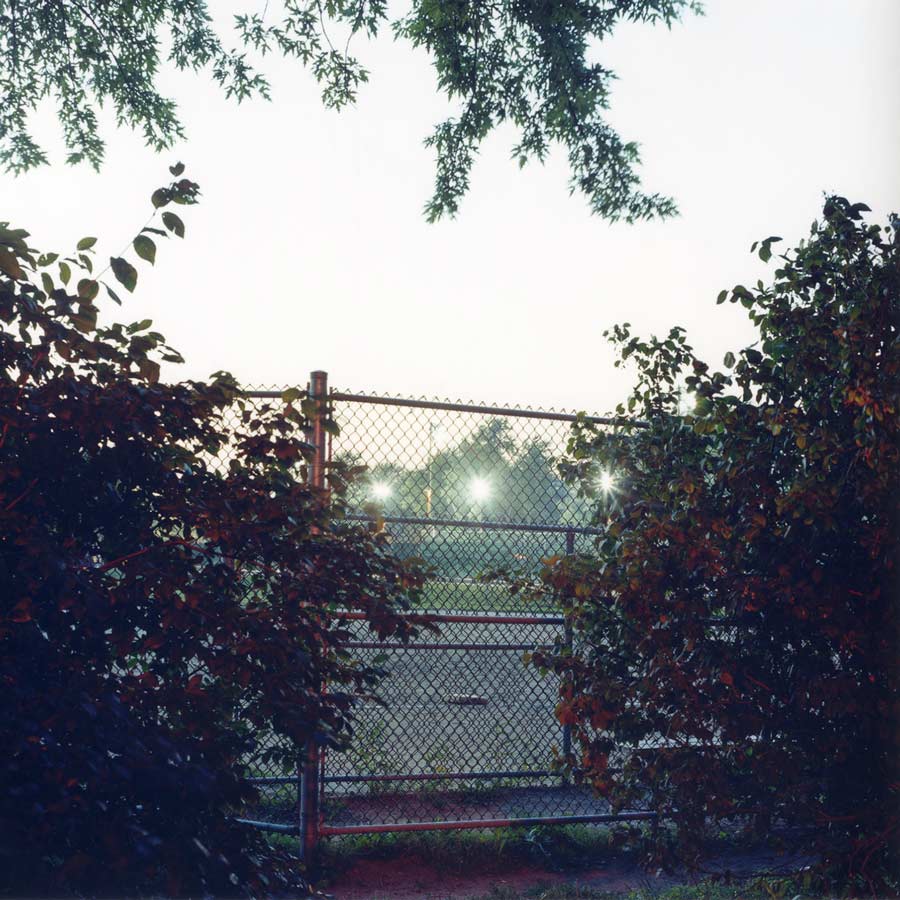
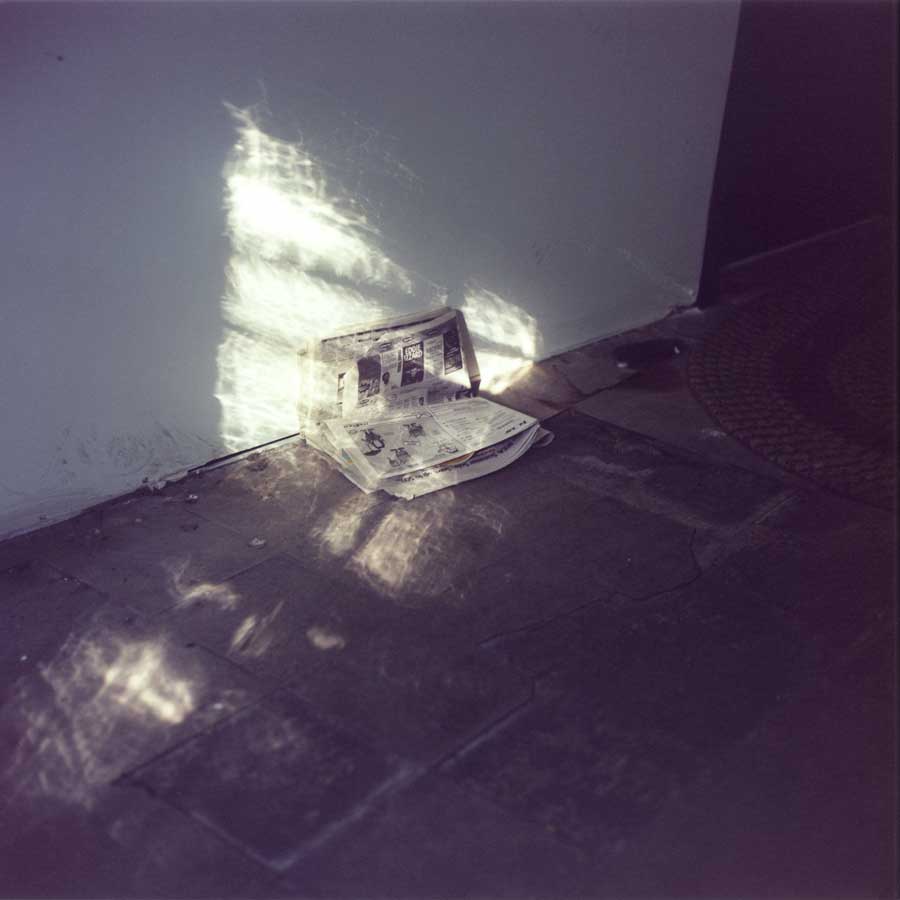
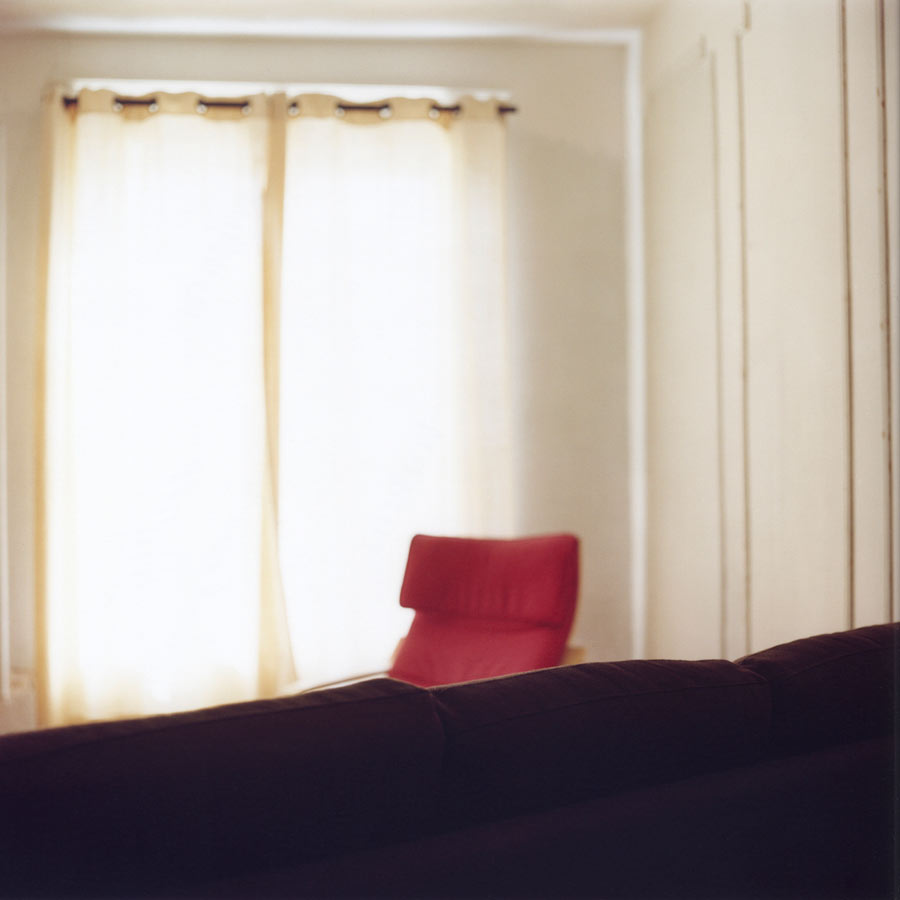
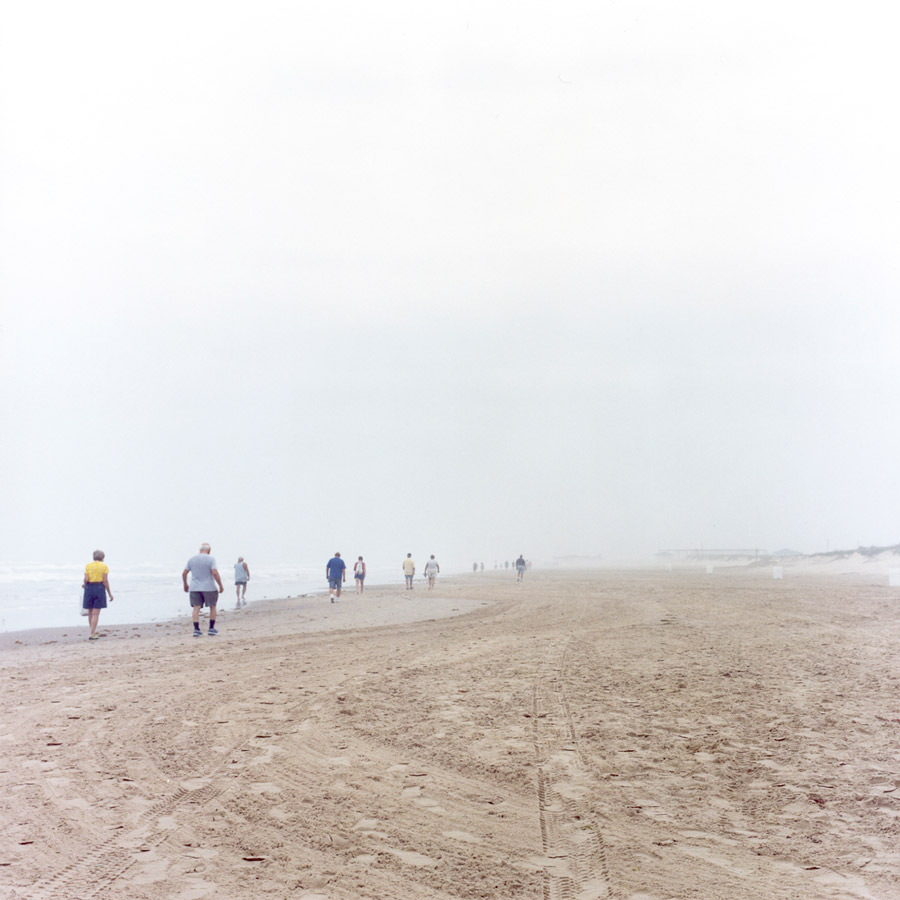
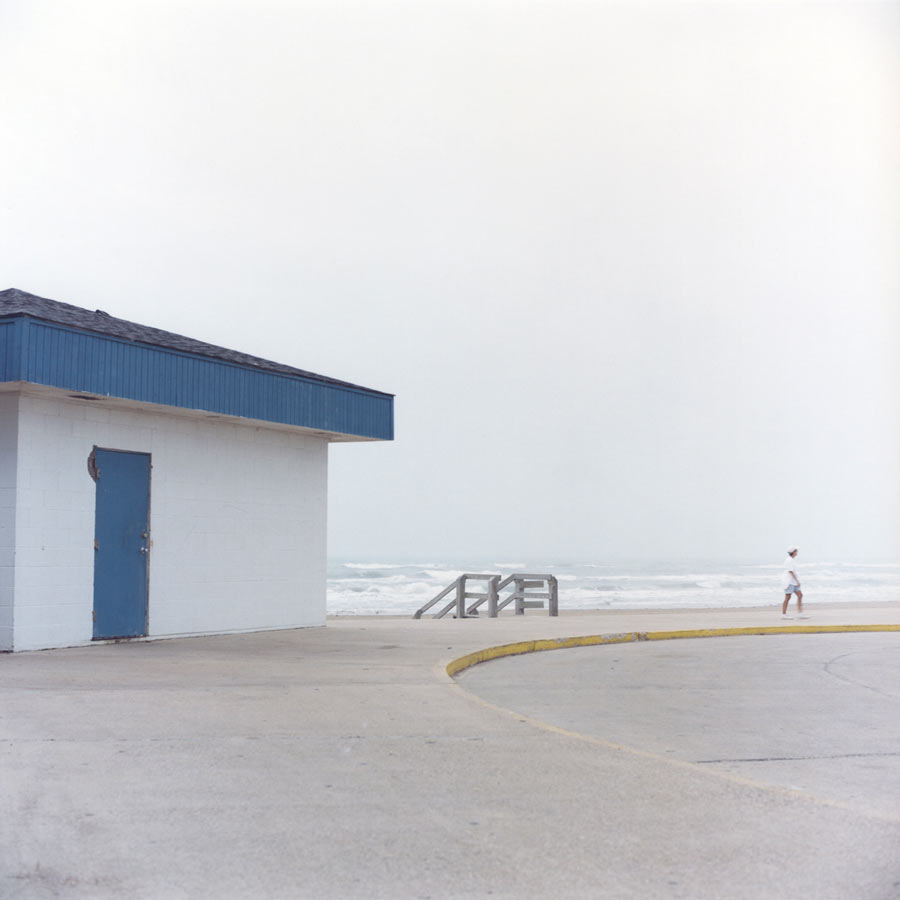
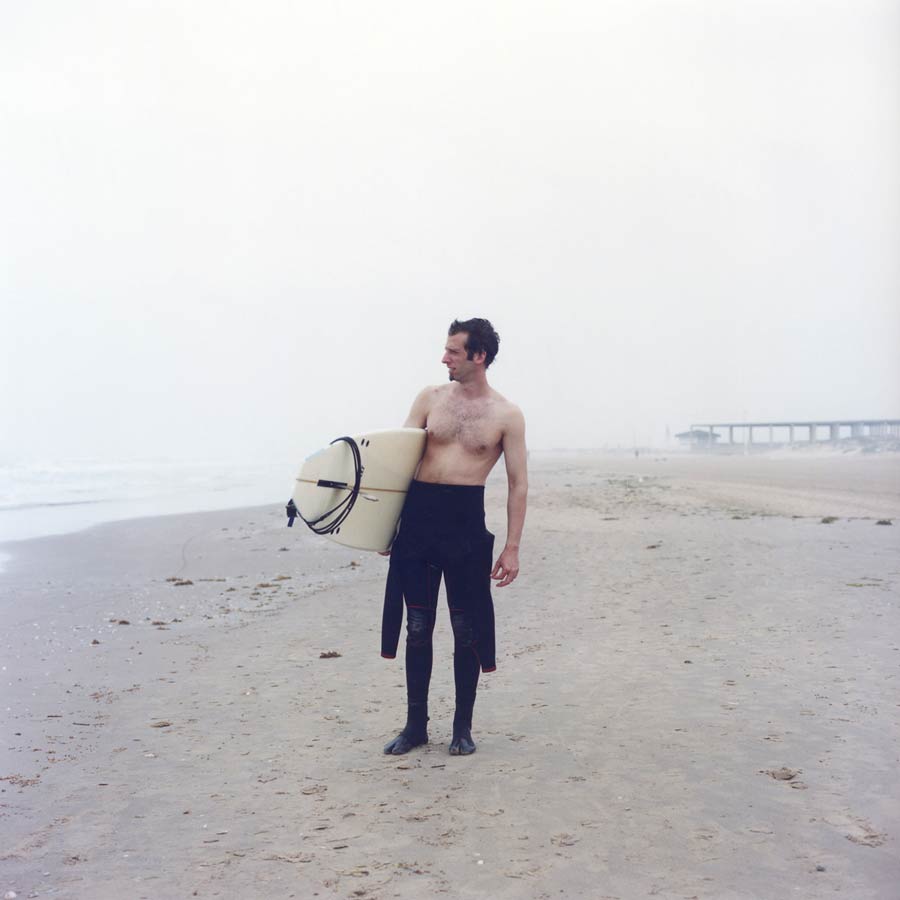
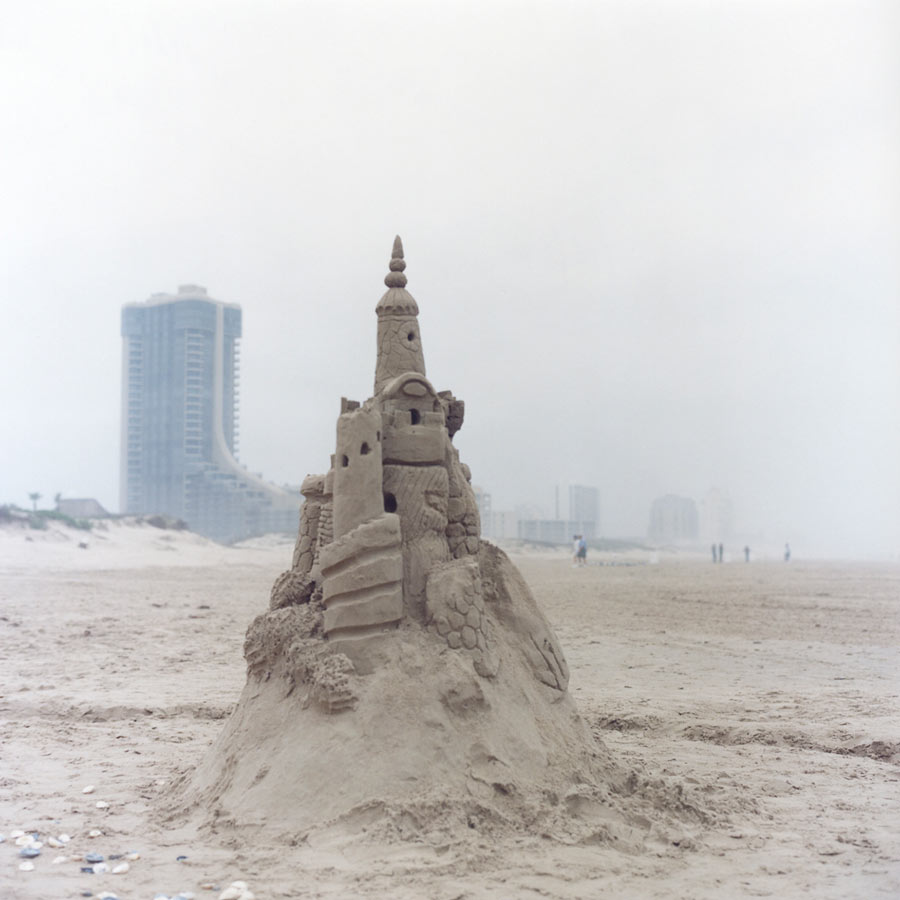

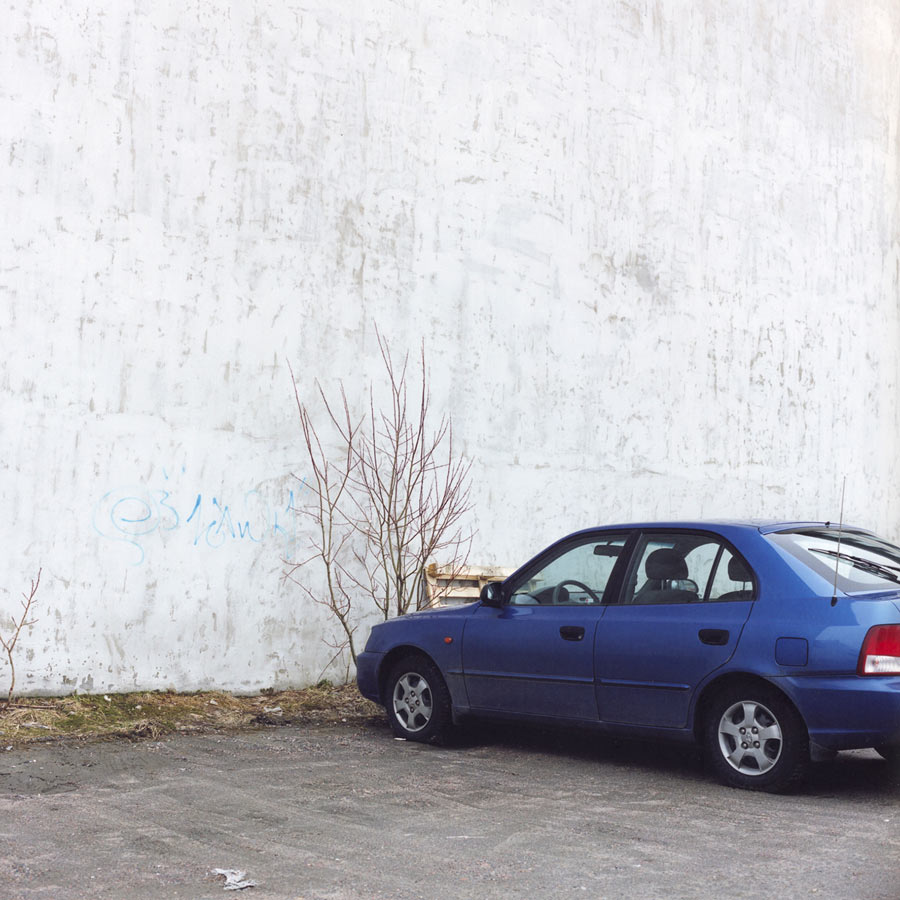
Photobook published by Teknisk Industri AS
"The photographs in this book display images of the world as a field – a field in which humans roam, leave traces in, are left alone in, each surrendered to his or her sole existence. The photographer observes her species and the landscapes it has created and inhabits. Some of the photos found here are not unlike those we might have taken ourselves; the beach close to the hotel, a city view, an aerial photograph of a fjord in the North of Norway. But we also find images that we would not have taken ourselves – of a man, partly turned away, of a structure that is probably a cabin, a section of a hotel room, an empty football field somewhere in Norway, a car parked by a hedge, a couple of legs (those of a sleeping man?) on a bed. Parts of familiar surroundings." From the book text written by Janike Kampevold Larsen.
Kunstnernes hage (2010)
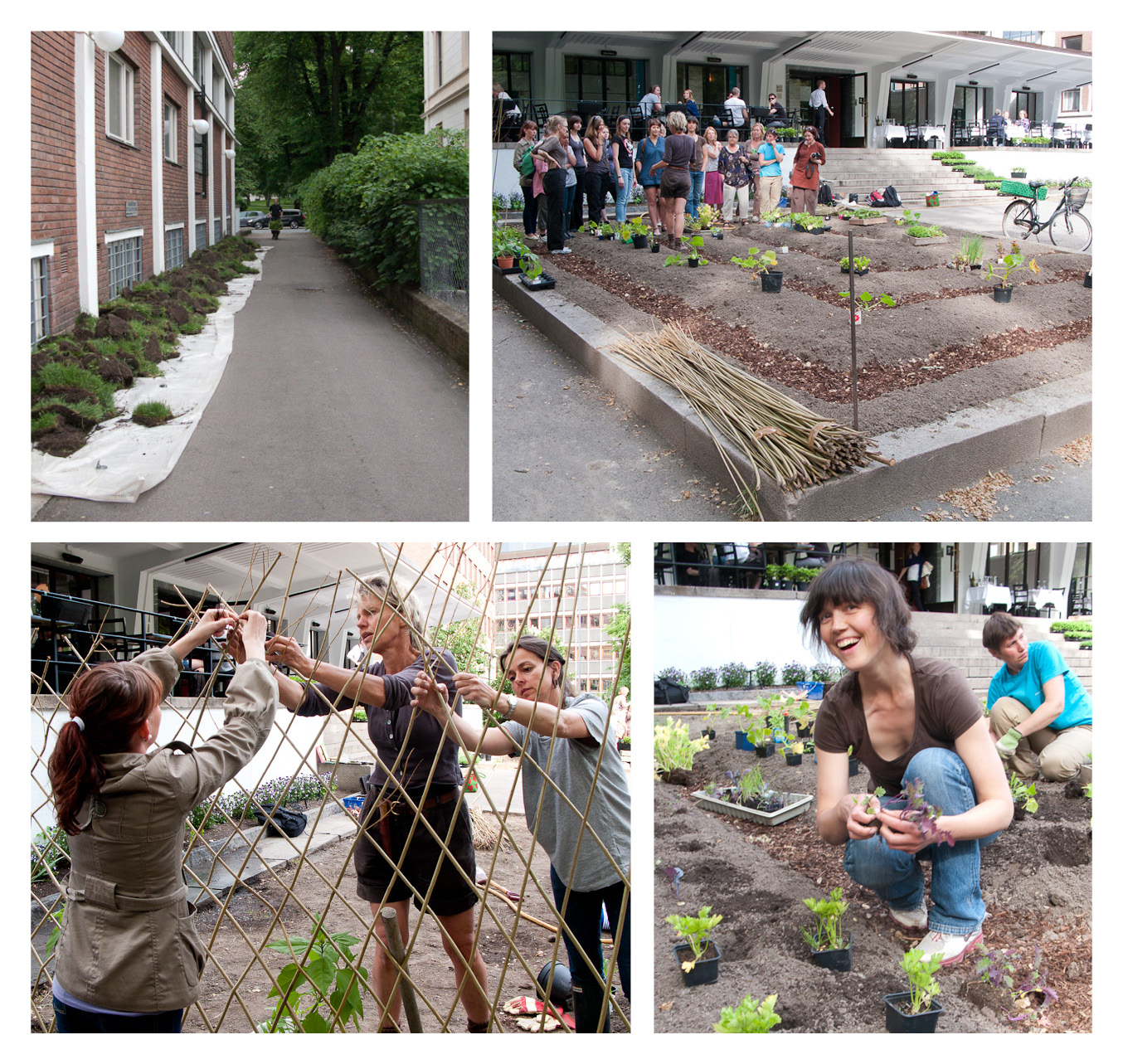
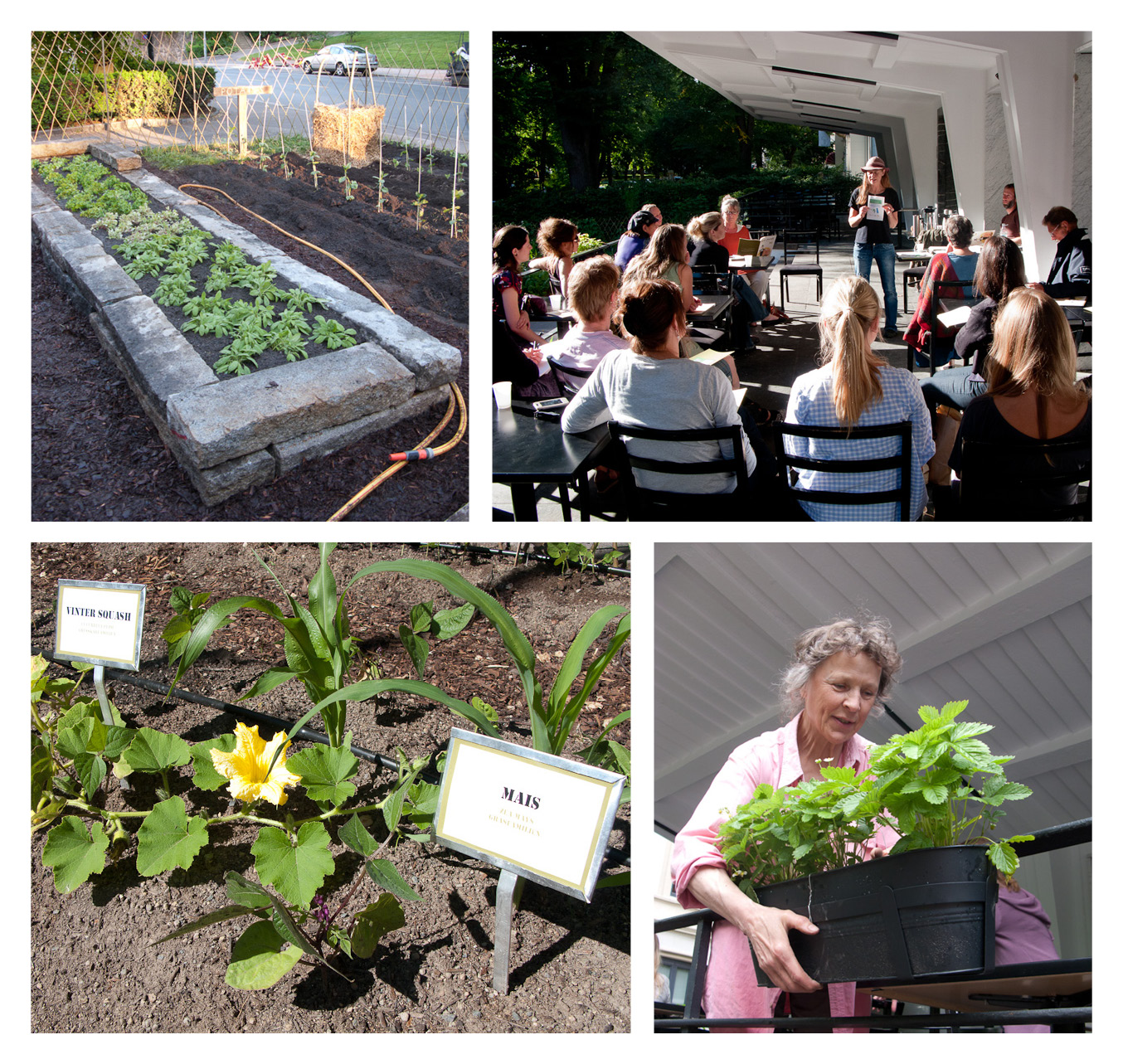
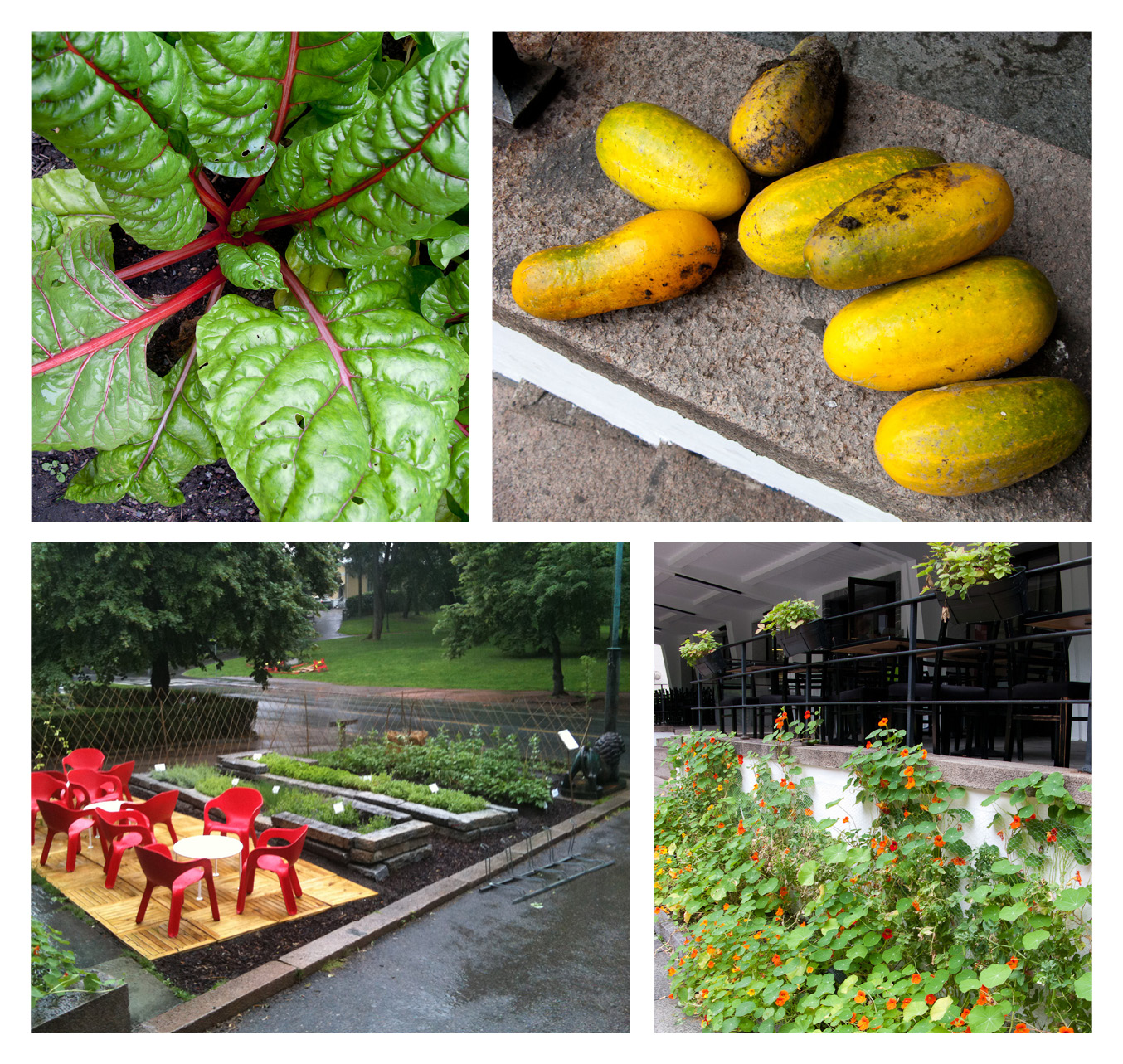
An organic garden was artist Katja Høst's contribution to the art & ecology happening Gentle Actions
The second sex (2009)
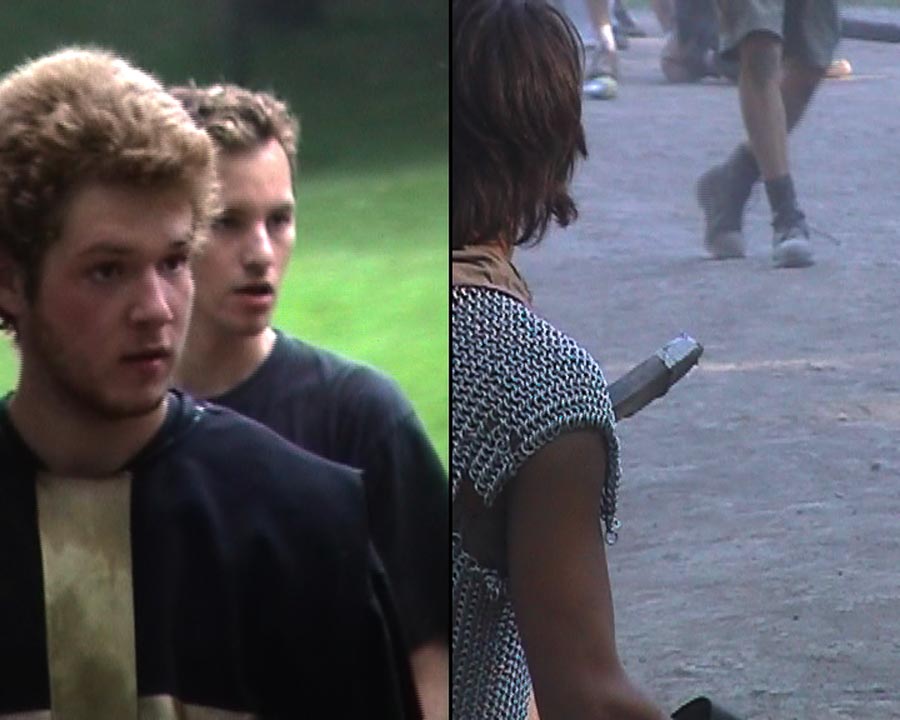

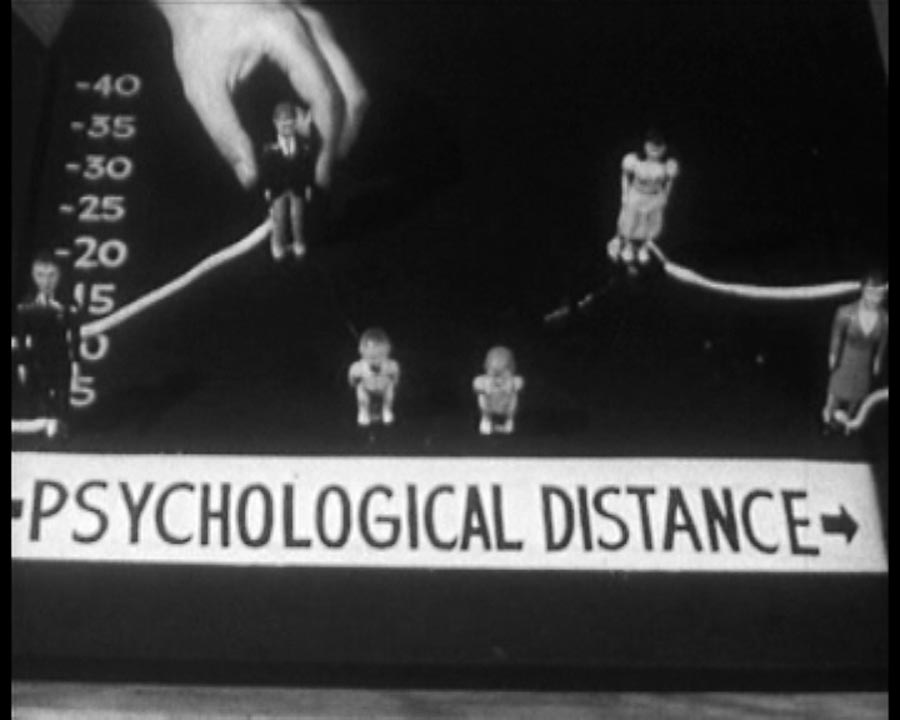
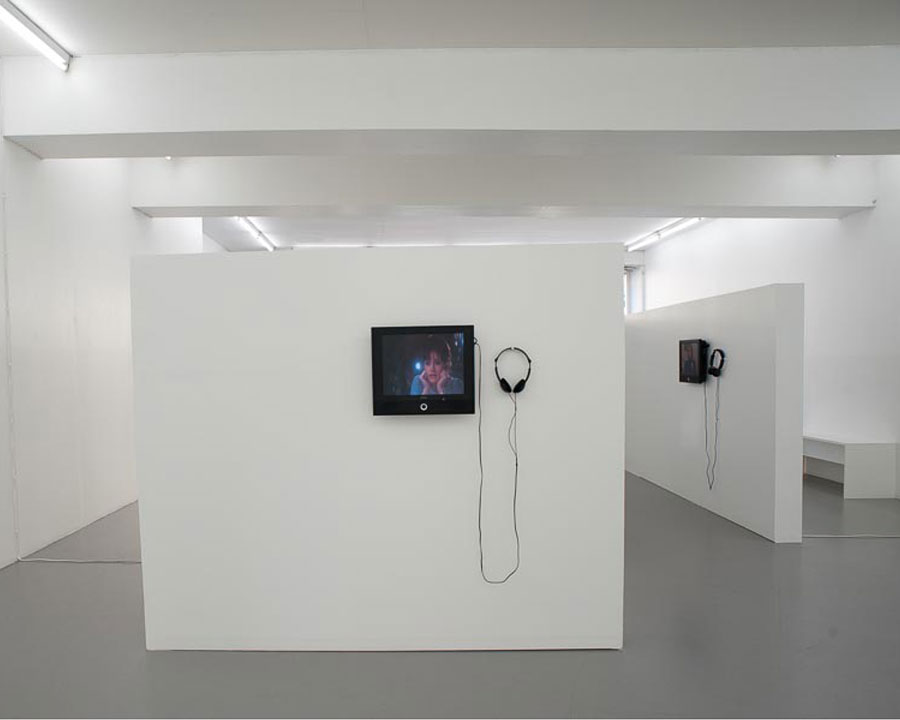
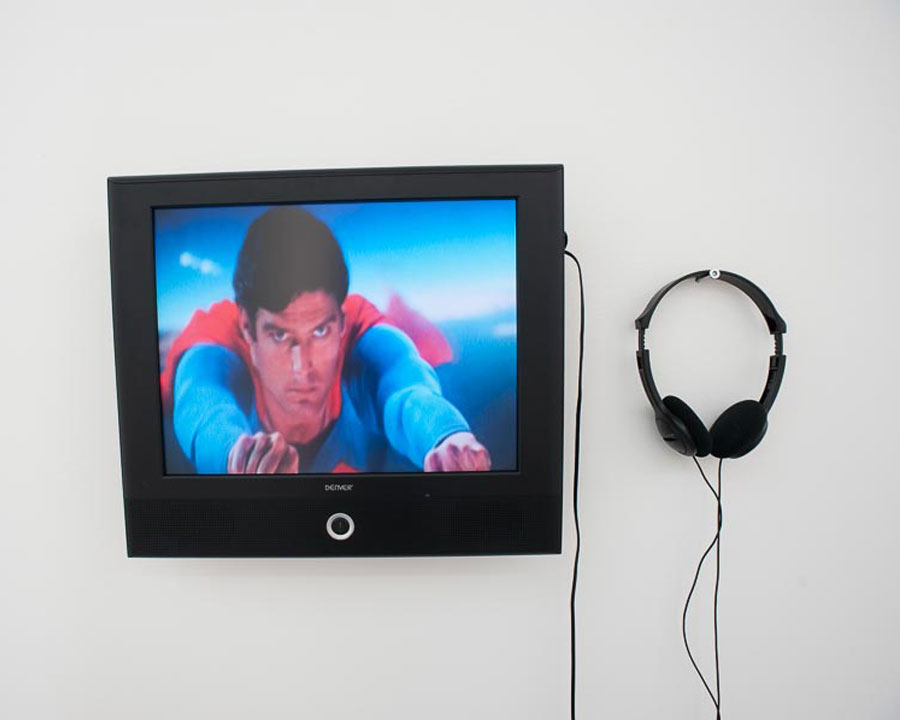
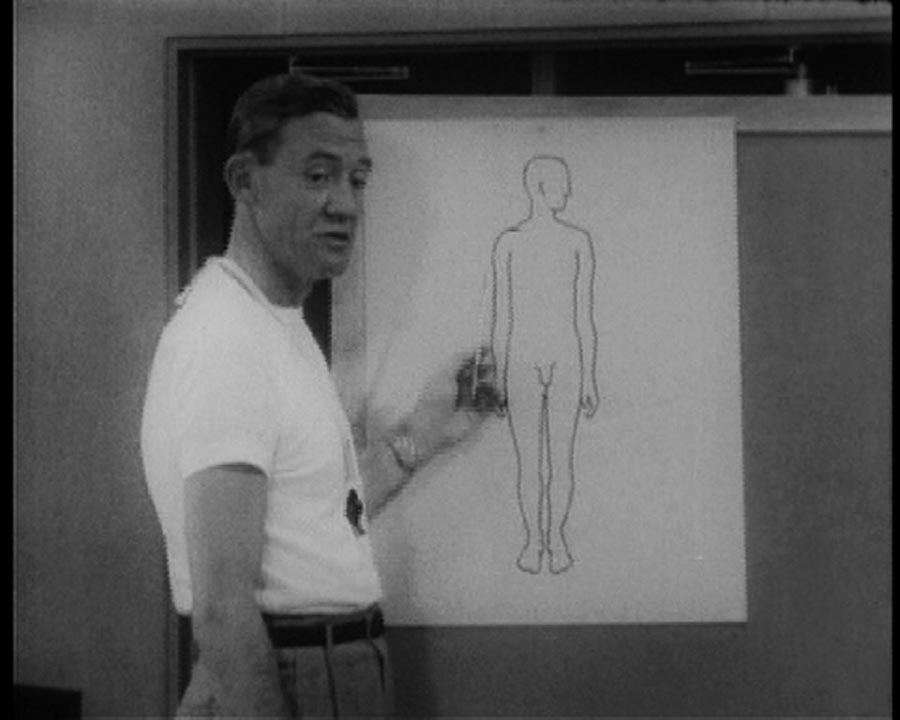
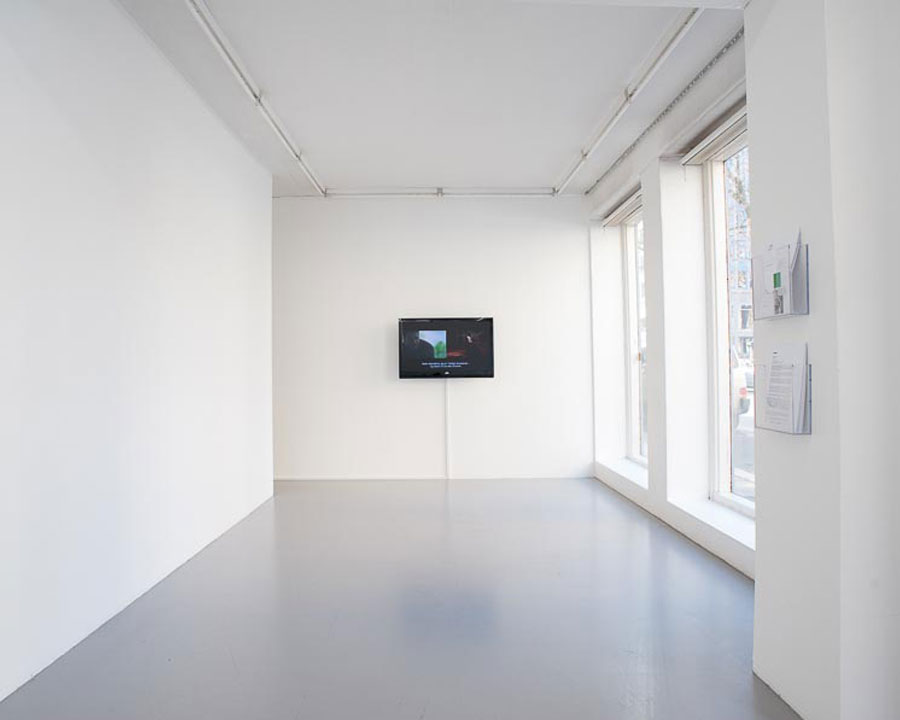
Pressrelease
The first solo show of 2009 at the Fotogalleriet is Katja Høst’s project: The Second Sex. The title of the show derives from the classic book by Simone de Beauvoir carrying the same title, but in Høst’s work the male sex is the target of investigation and humoristic comment.
Women’s liberation has made the modern woman more conscious of the construction of her gender role, but the question remains whether she is equally aware of the impact she has on the construction of the male social sex role, a role she influences through her choice of partner. Women now have the power to define their “other” sex, but how is this power exercised?
Using her own experience as a starting point, Høst combines scientific theories with mass media’s representations of gender and a woman’s point of view on gender issues. These multiple reference points are juxtaposed in an installation where seven videos shed light on different aspects of the male social sex role.
In the video Hangman we experience how the man is the first sex to be “hung” in a stereotype description when a woman is to answer on the man’s behalf as well as her own. Instructual Interviews I and II presents a group of women’s thoughts on gender questions edited into the footage from two Instructional Film’s. These films were produced in large numbers during the 50’s in the USA to promote moral etiquette and guidance on family values.
The works in the exhibition share one clear hypothesis; women participate in defining the male sex role. What remains unclear and open for discussion is how this power is put to use.
Operaen / The Opera (2010)

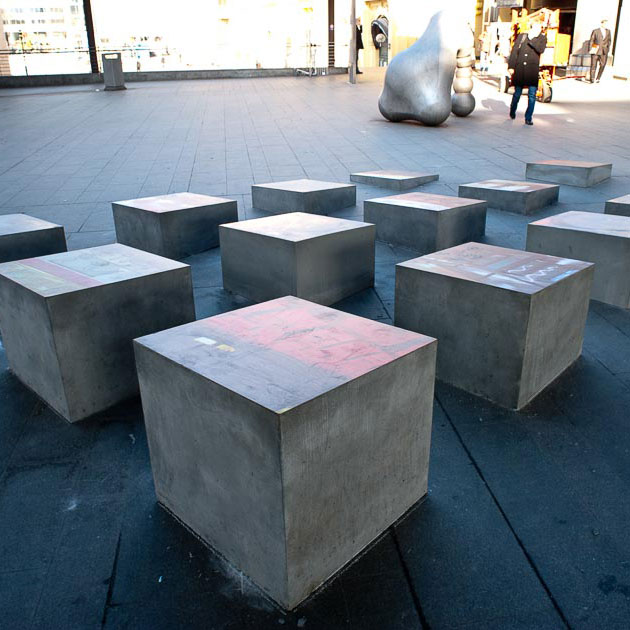
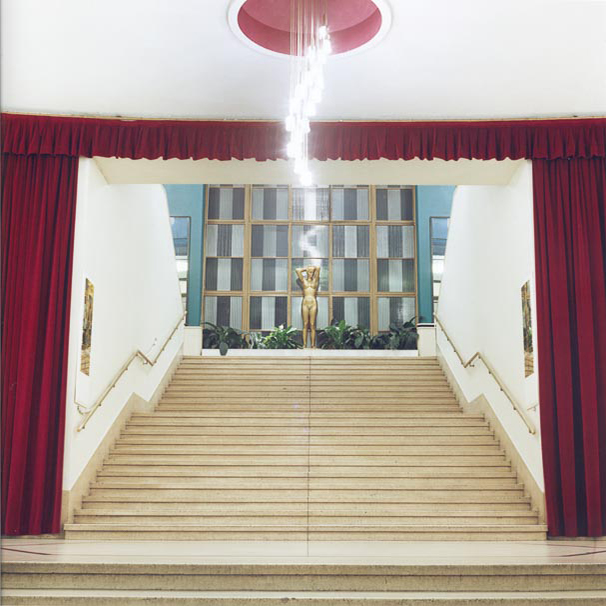
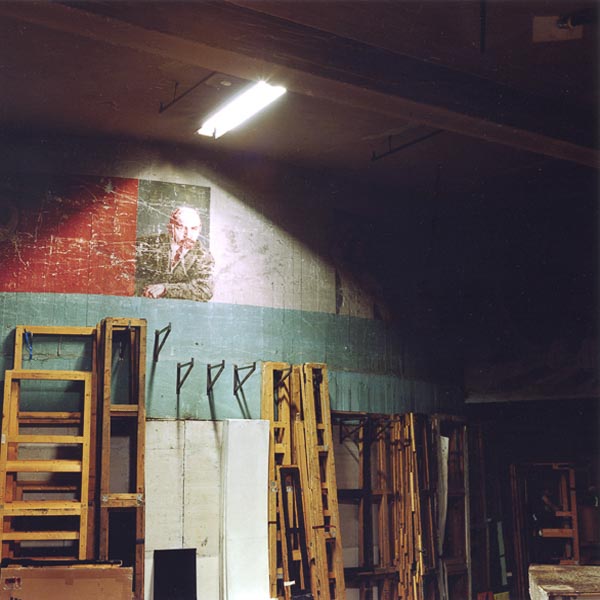

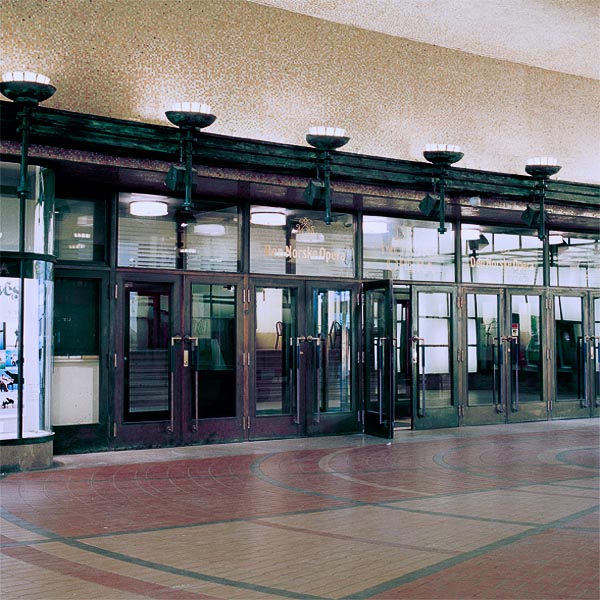

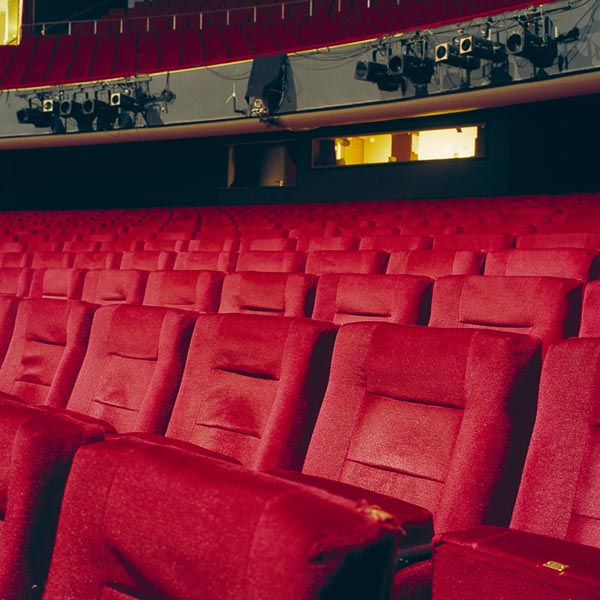
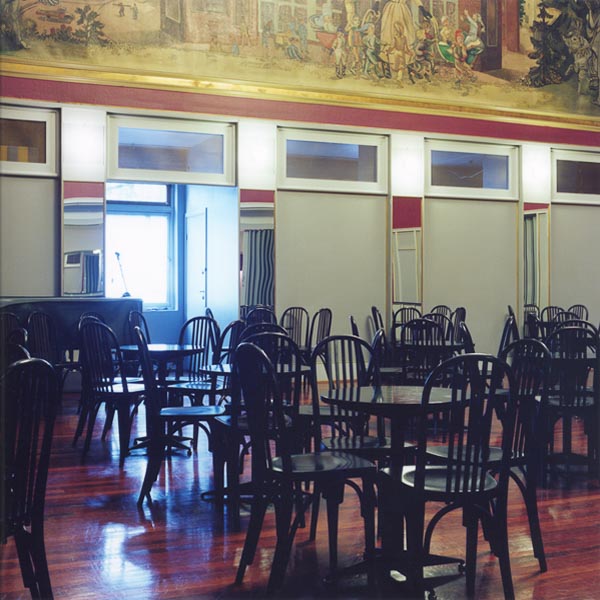
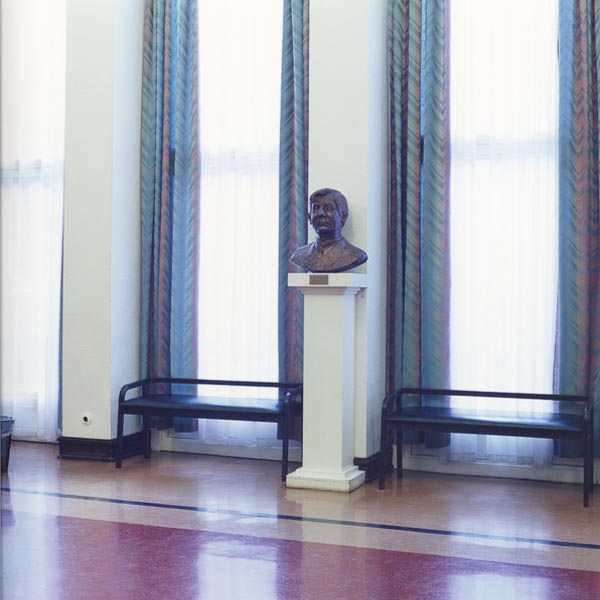
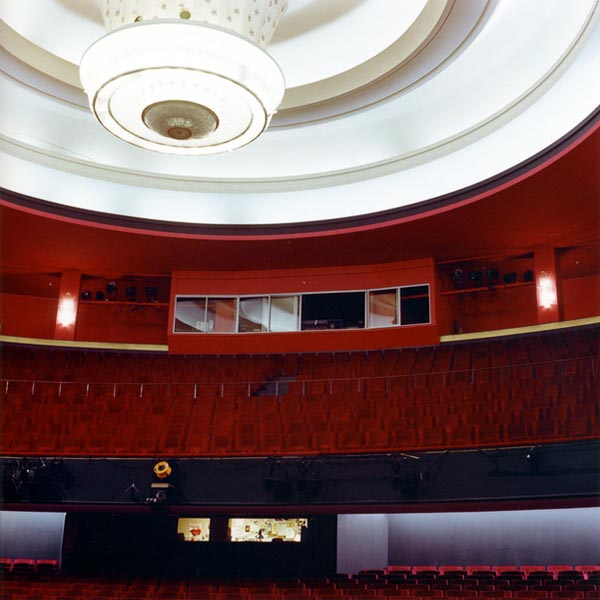
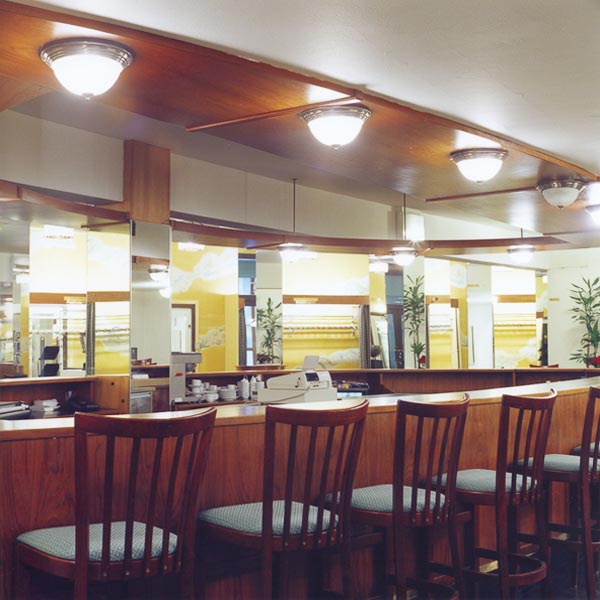


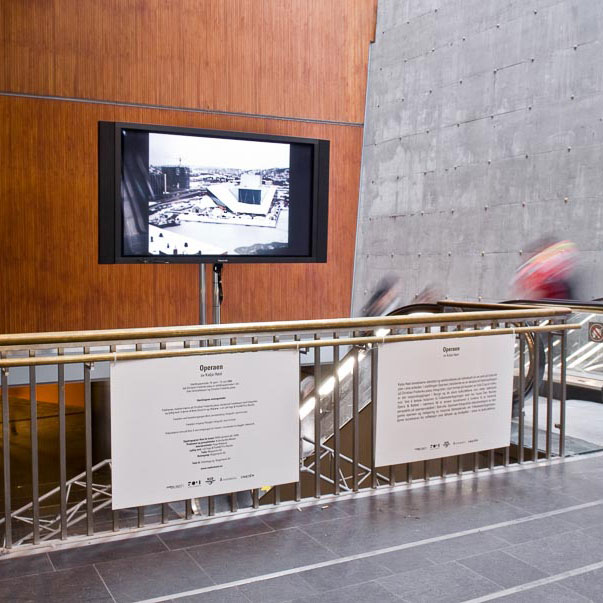
Photoproject at Oslo Central Station. Photos mounted on a concrete sculpture and the fasade of the central station.
Folketeaterbygningen in Oslo is a symbol of an era in Norwegian history. Built during the 30 and 50’ties it represents the Norwegian Social Democracy coming into being. More specifically it was built to provide a theatre for the workers (Labour Union). After 4 years the theatre went bankrupt, and the Opera moved in, staying until today. Now, with the new Opera house rising in Bjørvika, the building was sold to a private entrepreneur. Meanwhile, the new Opera house seems to reflect the nation in a different era. Growing older, the Social democracy of Norway is turning self conscious; preoccupied with creating it’s image. Norway’s growing international consciousness are reflected in this iconic building; the facade is facing the waterfront - greeting visitors to the city.
By photographing Folketeaterbygningen in a sober documentary fashion, as if the building were brand new, I am hoping the project will reflect on both the fading ideological heritage, as well as point to the ideology behind current public projects like the new Opera house in Oslo.
The private eye (2008)
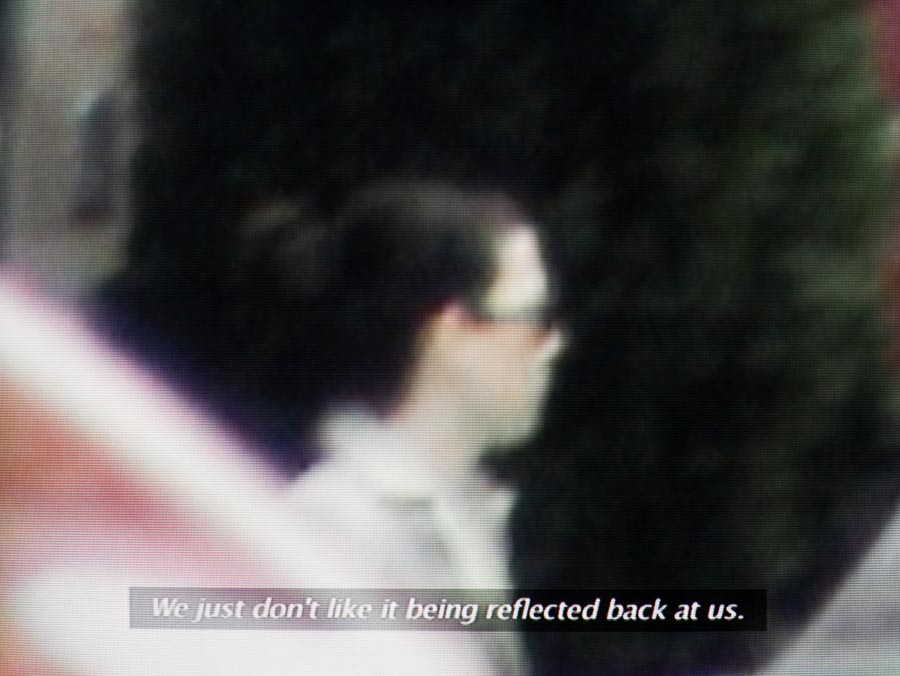
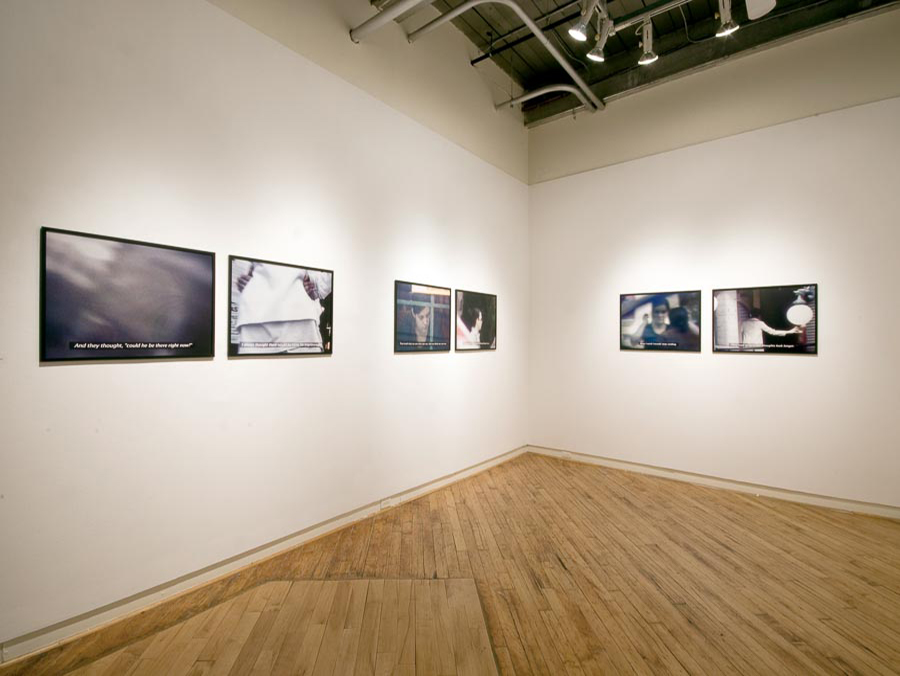
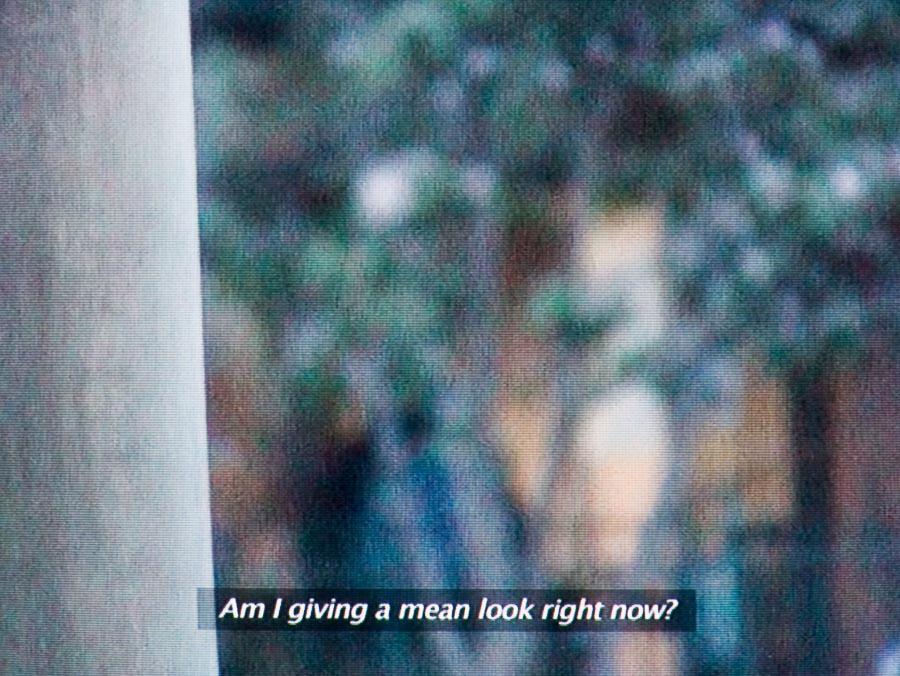
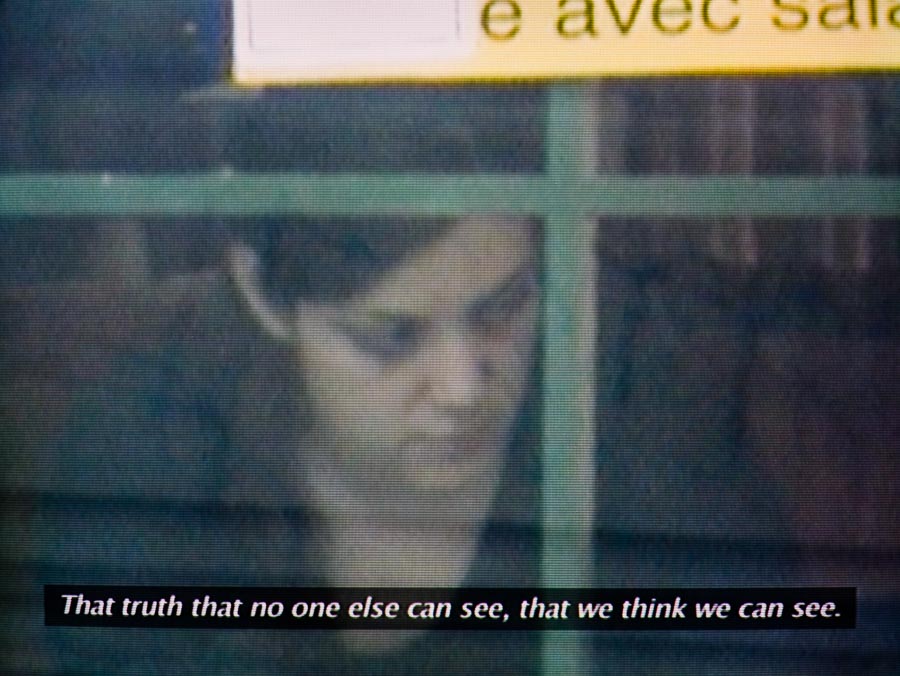
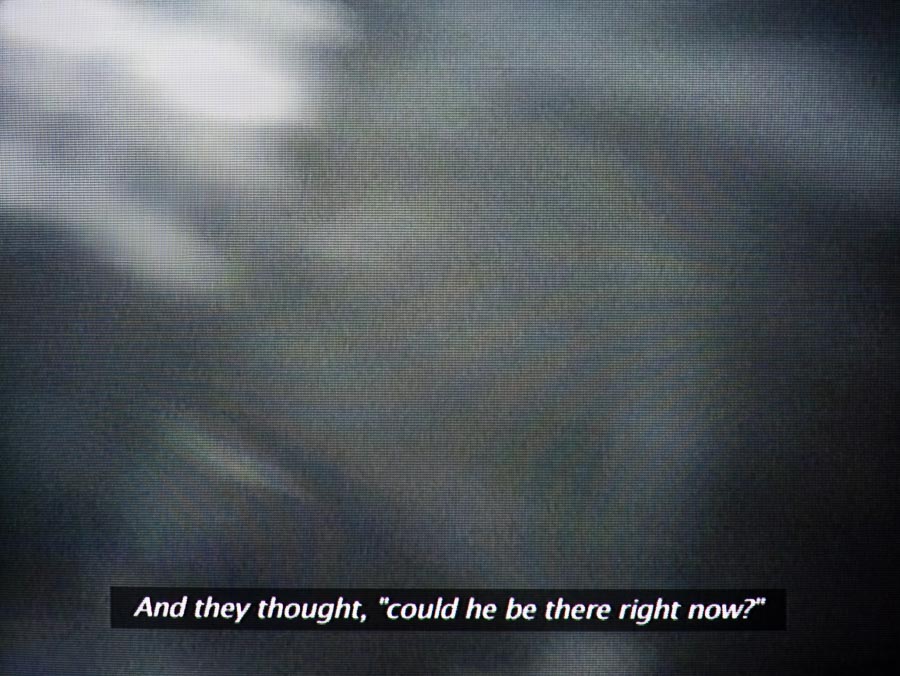
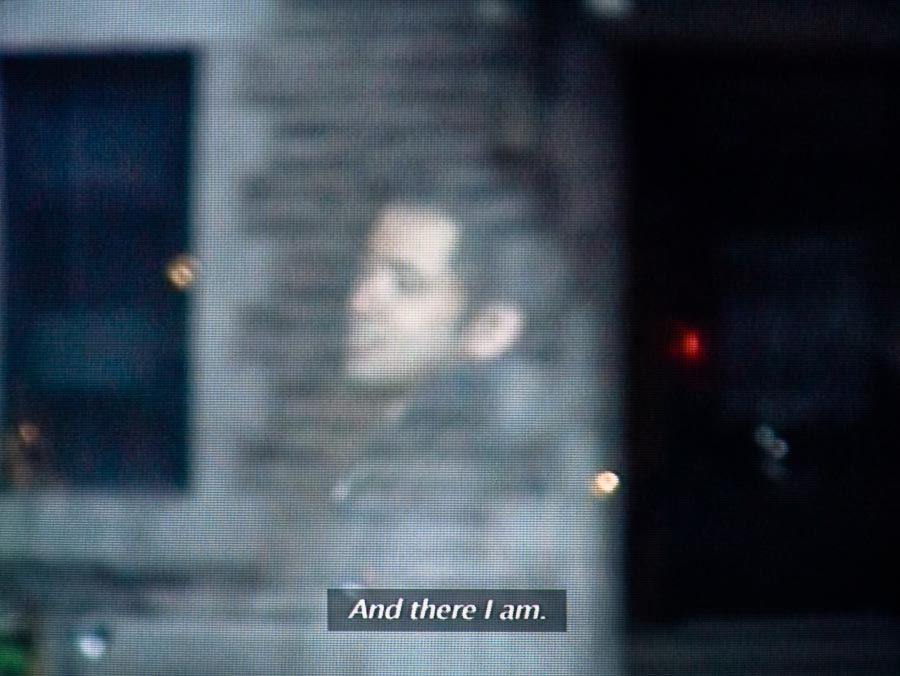
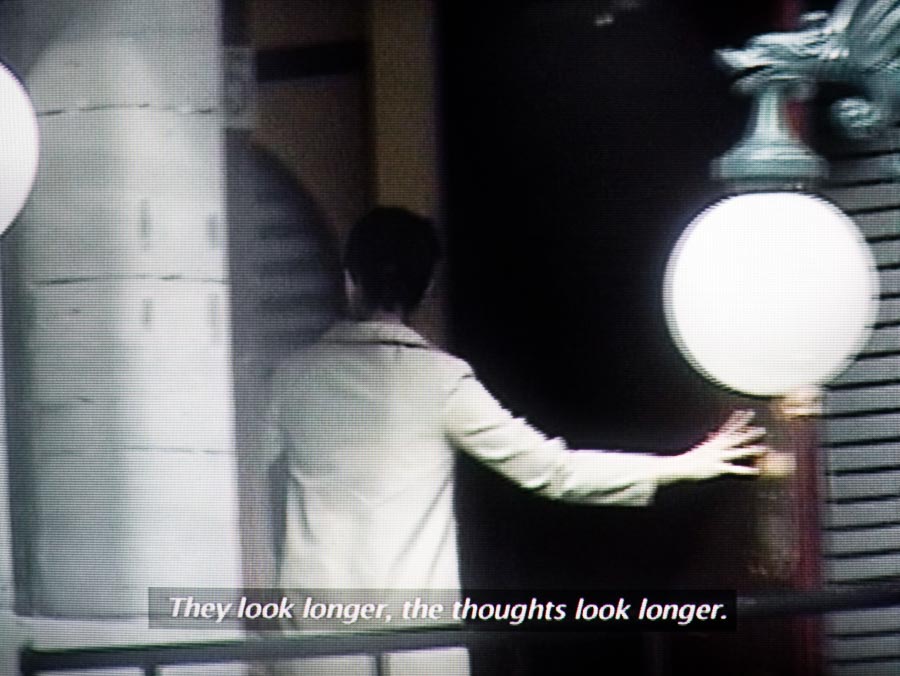
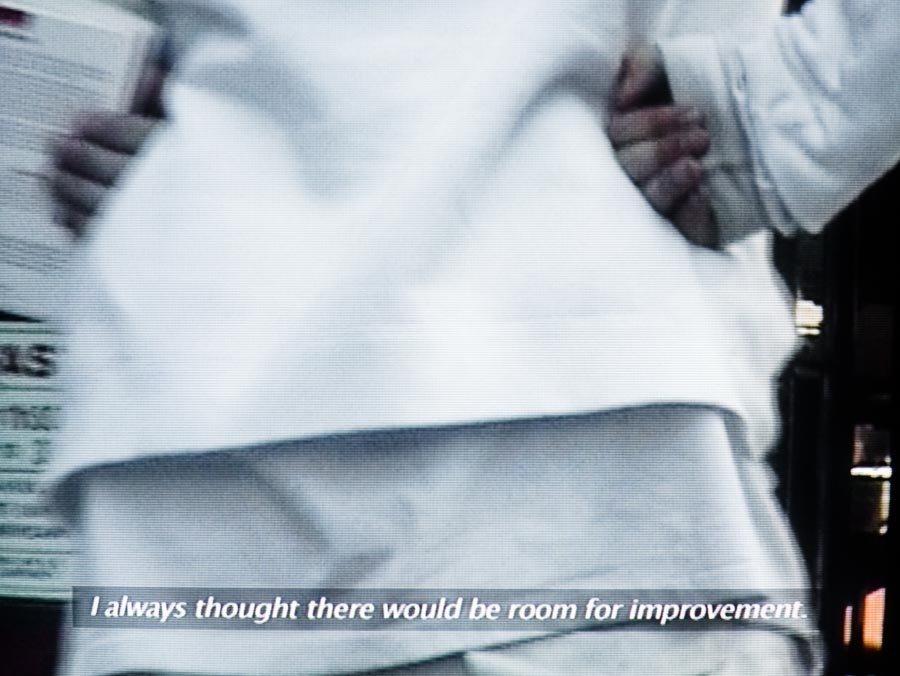
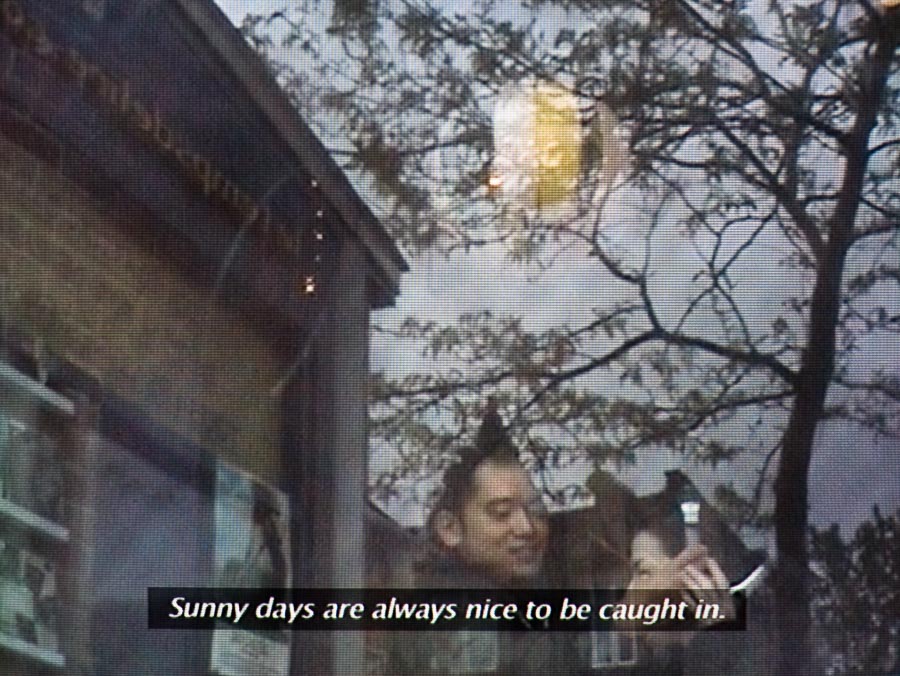
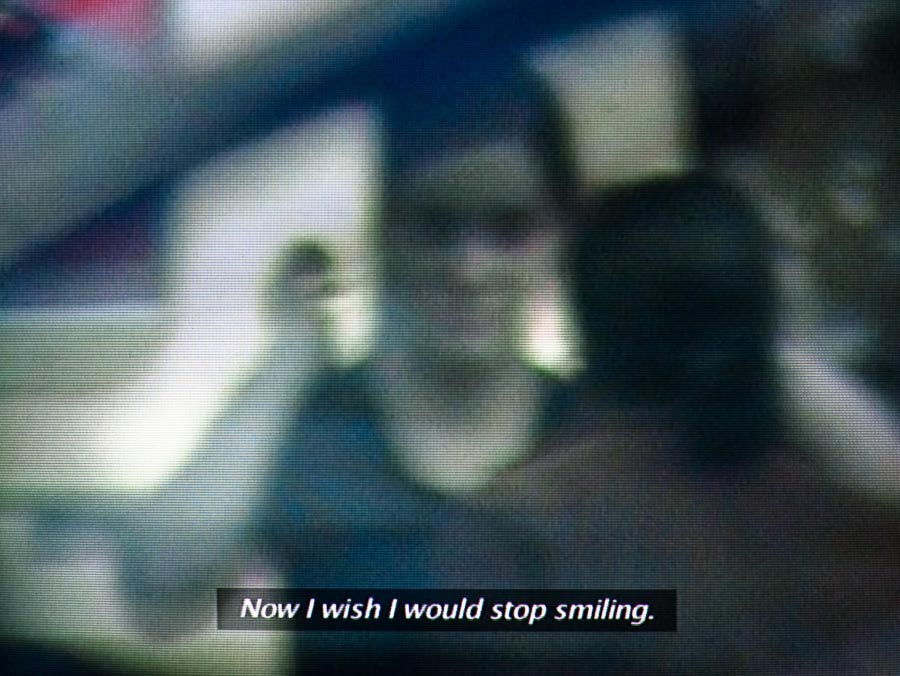
[...] These stories are central to Høst’s third piece in the exhibition, Private Eye, which is a series of stills from the documentation made by the private investigator of The Detective. Text from the audio interviews is superimposed on candid images, creating another interpretation of subjecthood and objecthood. Instead of pairing the image and text of a single person, Høst has mixed these, showing the text of one person with the image of another. The artist seeks to create narrative, to push the limits of documentation and the perceived truth in such. Her intention is to augment the paradox of knowing oneself as an object.
“There is no objective truth to be found in a short glimpse in the mirror or the documentary image, we know that, but the longing for it keeps lingering on. The longing for a unifying objective truth – pulling us into the same universe and out of our subjectivity. The title of the exhibition reflects on this by pointing out the part of the eye that is blind. There are areas not covered – they just seem to be.” – Katja Høst
From the exhibition folder for Blind spot, at Gallery 44 in Toronto, written by Melissa Bennet.
The detective (2006)
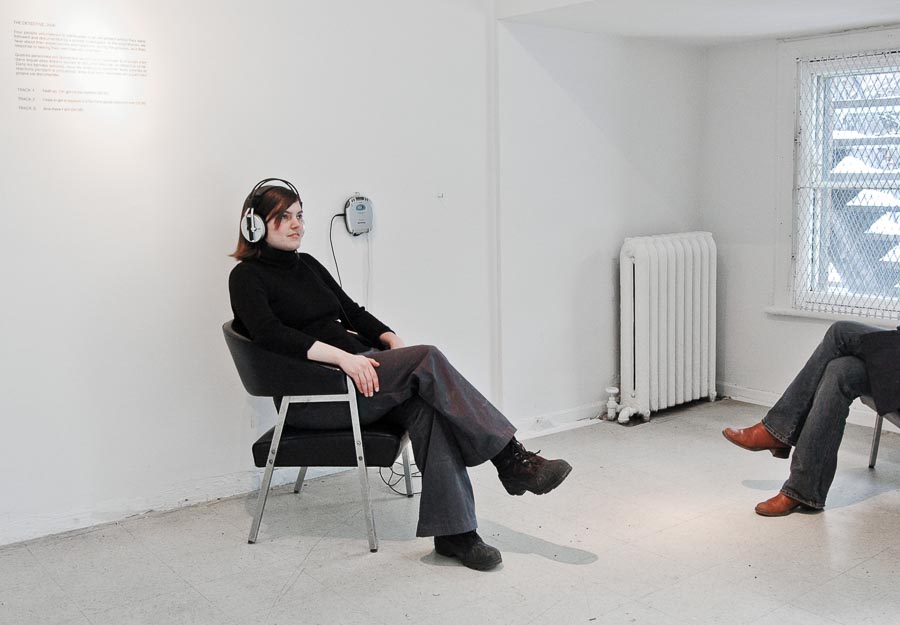
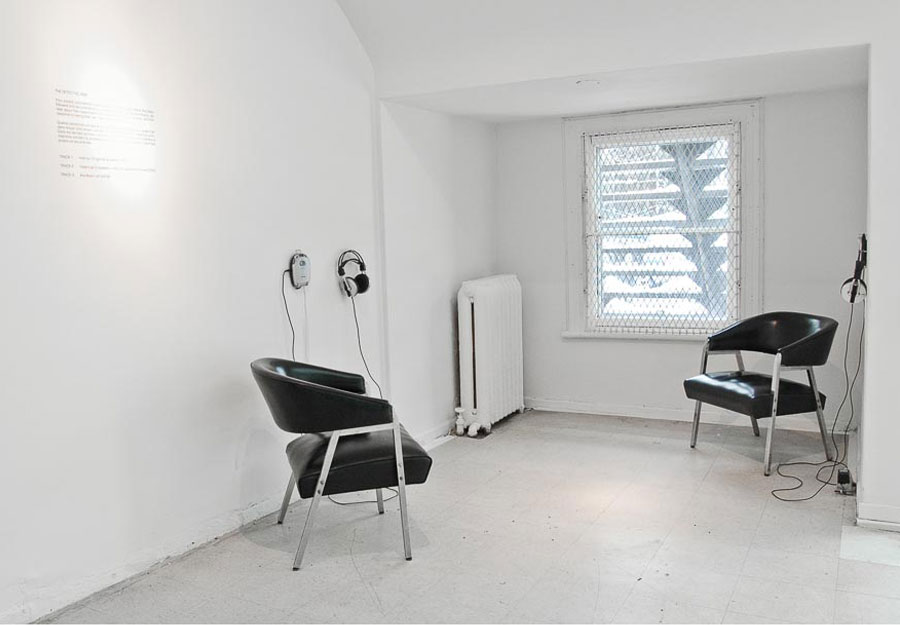
Installation view, Gallery Articule, Montréal, Canada.
4 people have volunteered to participate in an art-project where they will be followed and documented by a private investigator. In 3 soundtracks we hear about their expectations, reactions during the process and their response to seeing their own life documented.
Perfect devotion (2005)
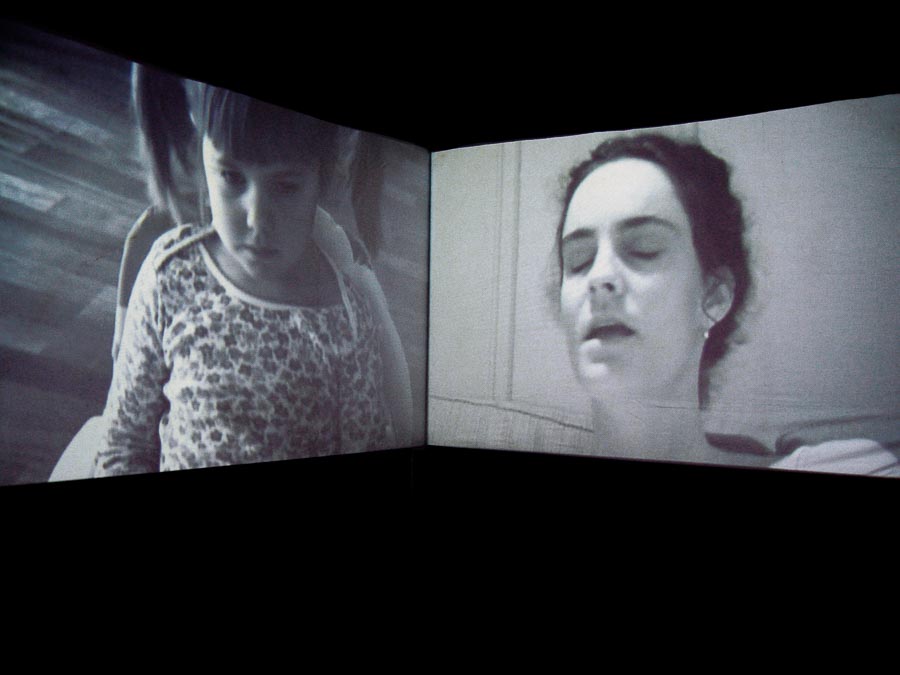

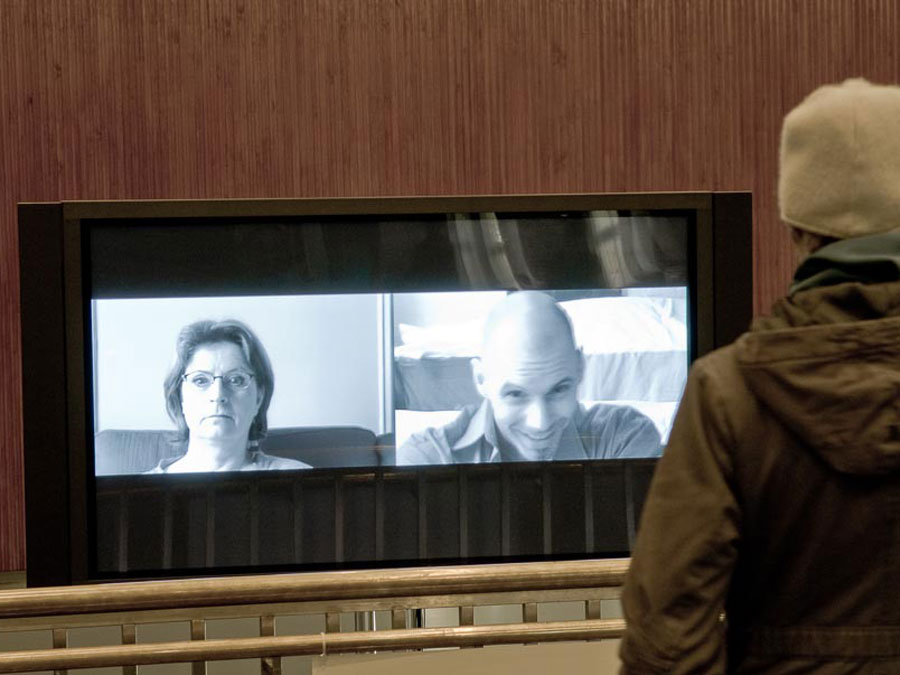
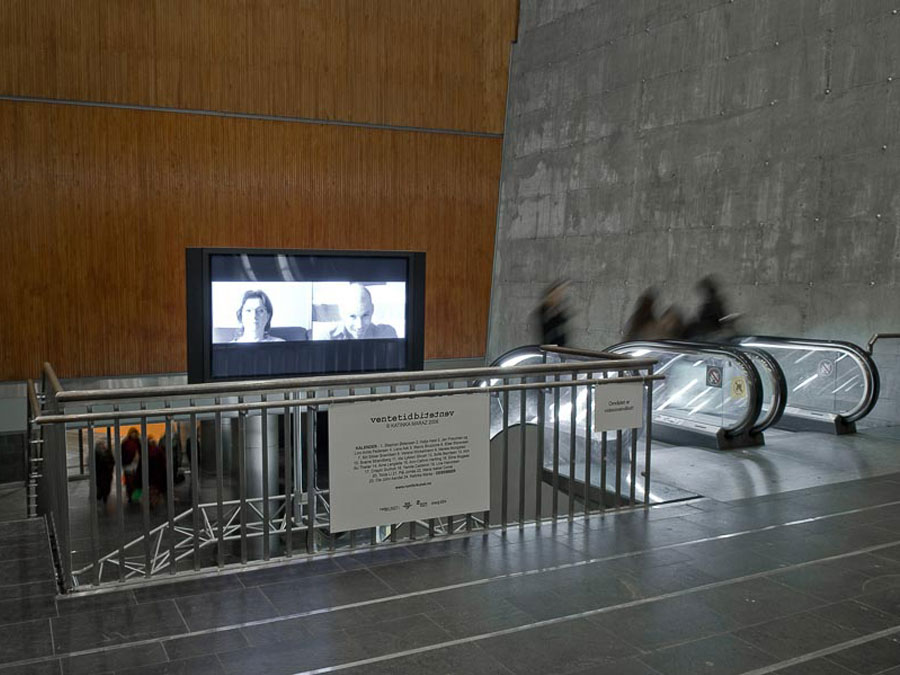

The installation consists of one soundtrack, and two projections playing in sync. The projections make two sides in a triangle (corner-projection), creating an illusion of actual interaction between the TV-viewers. This situates the gallery-visitor on the third axis of the triangle, contributing with his or hers expressions in response to the faces in the installation. The piece was comissioned for the exhibition Fait à - Montréal - Made.
Quelques arpeints de neige (2005)

The project involves the translation of a passage from Voltaire’s novel Candid: "Vous savez que ces deux nations sont en guerre pour quelques arpents de neige vers le Canada, et qu’elles dépensent pour cette belle guerre beaucoup plus que tout le Canada ne vaut”.
The passage has been, through a history of misinterpretation and detachment from it’s original source, the base for the expression ”a few acres of snow” regularly quoted by Canadians, and particularly Quebecois, who want to prove that Canada is worth much more than Voltaire’s dismissive perception. (See Wikipedia for more information on this).
First the quote is translated to English, by an English-Canadien. The next person, a French-Canadien translates the new quote back to French, etc (the principle of “broken telephone”). This is repeated 10 times, involving 10 Canadiens living in Montréal. Along the way, the quote, originally reflecting the war between England and France, changes, showing the flexibility of our understanding based on our current life and knowledge.
The lonely crowd (2004)


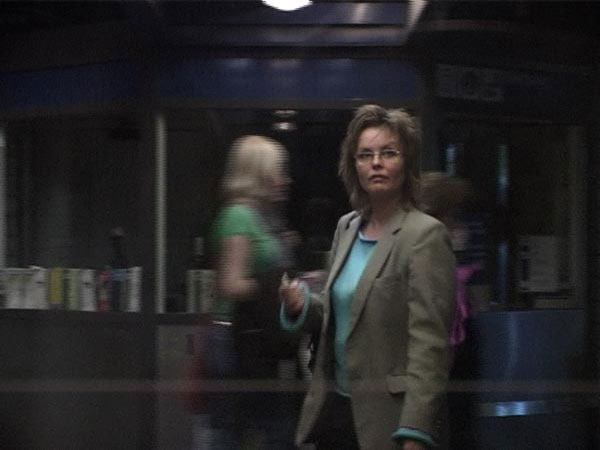
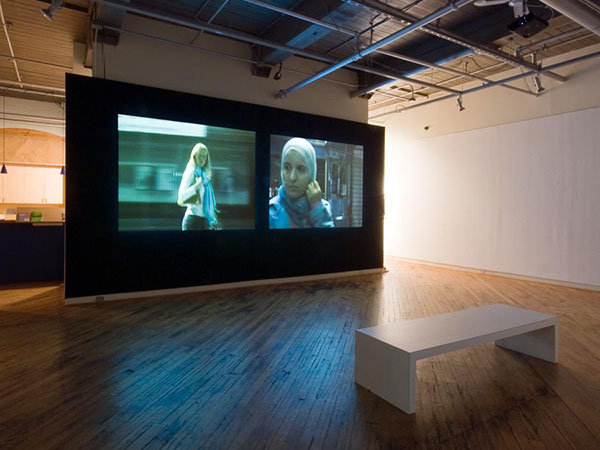
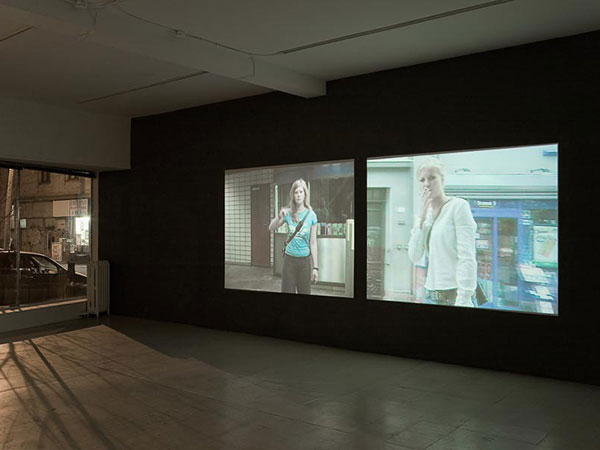
"In the video-piece The Lonely Crowd, she focuses on people's attempt to catch a glimpse of their own reflection in the windows and surfaces of the city. Through an argus-mirror we watch people passing by, meeting their own gaze in the mirror surface. The situation draws the bypasser out of the collective stream, giving them a moment of individuality. The work focuses on the ambivalent experience of being both subject and object in the public sphere; of seeing and being seen at the same time." (From the UKS Biennale catalog, written by the curators Ida Kierulf and Helga Marie Norby)
Presentation of self in everyday life - The fitting room (2004)
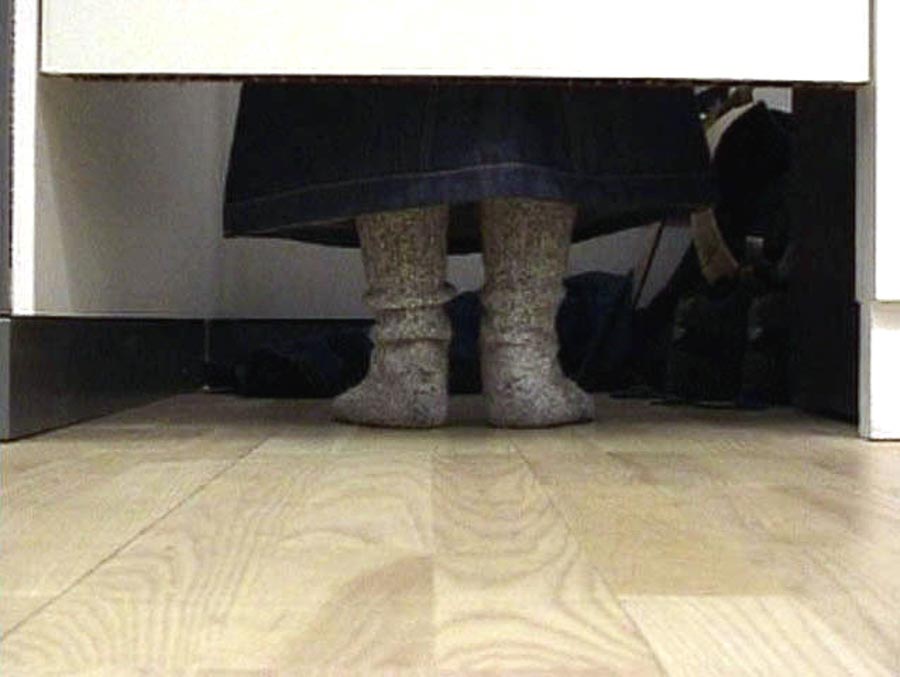
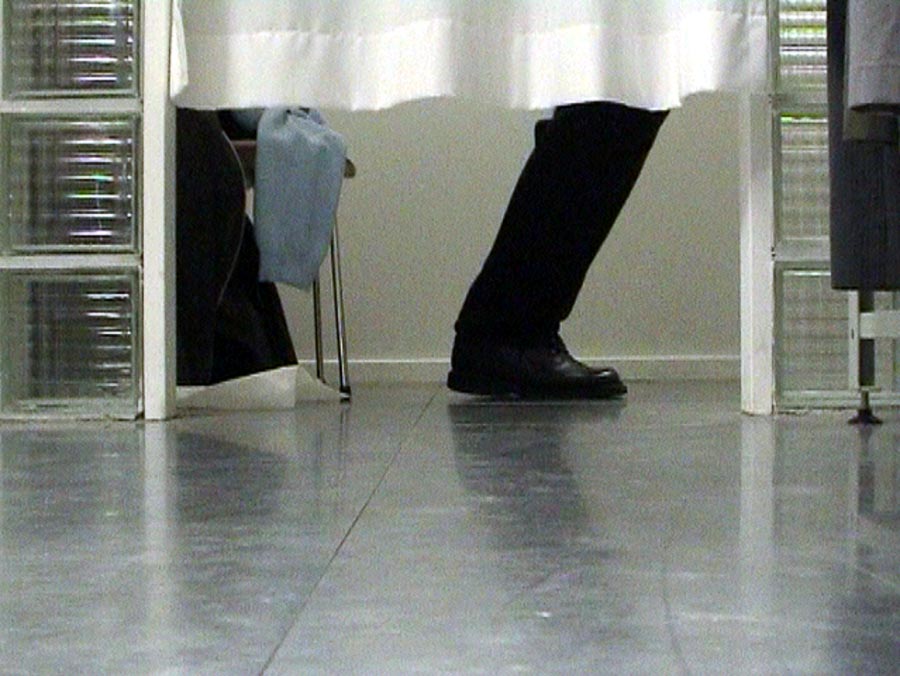
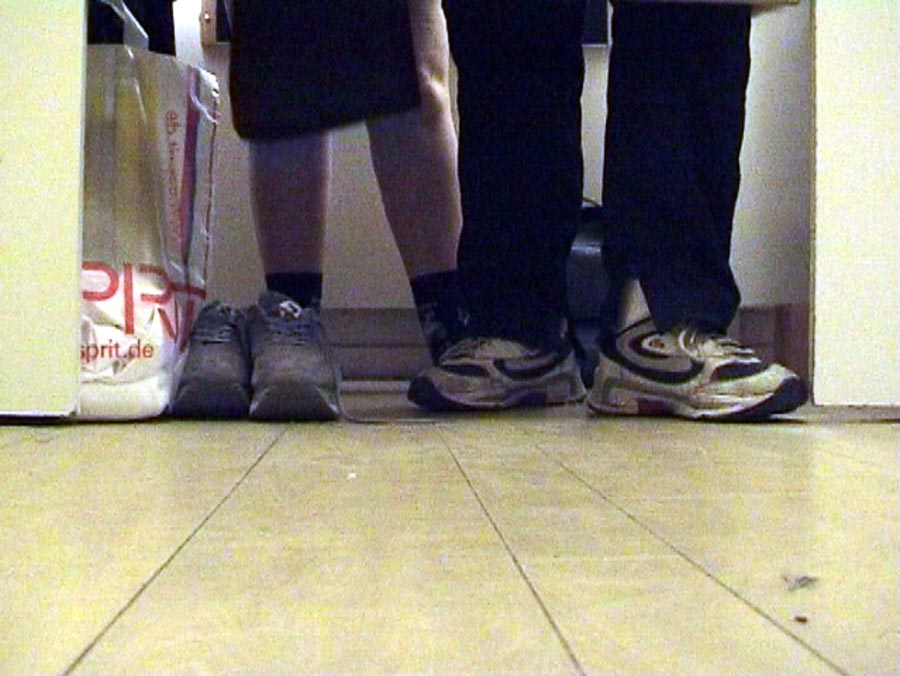
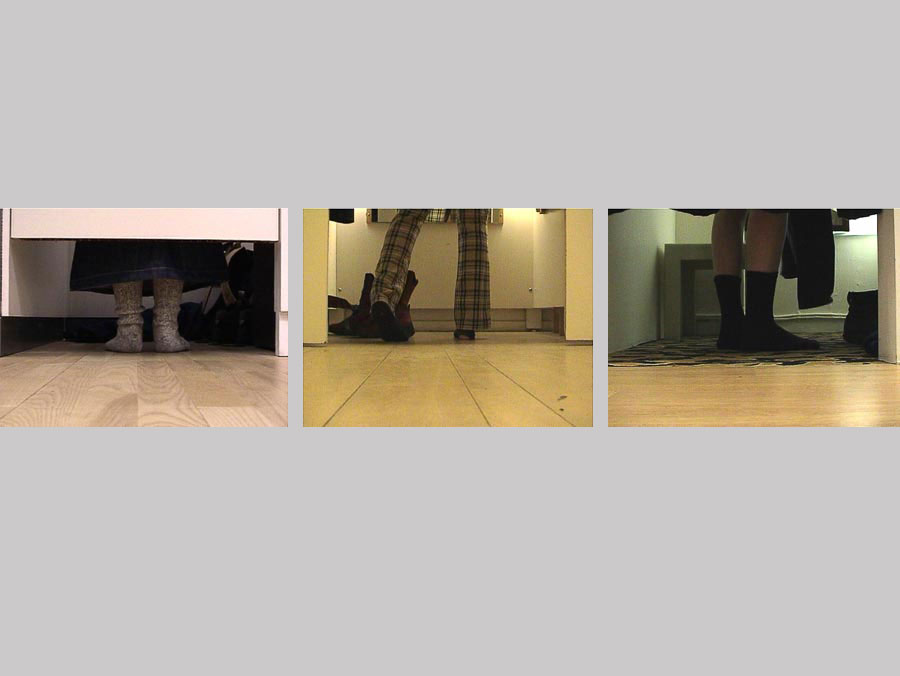
4 videoprojections looping, 1 soundtrack with dialogs in Norwegian, duration 20 min.
In the video series "The fitting room", the gaze comes from the one who just toggling along. Those falling into mild trance of repetition. Contemplative shopping while looking at the traders and tryers; almost naked in the middle of the city, just hidden by a curtain. How to be captured by your own staging; seduced, amused or disappointed. The contrast between the high-heeled lady and the knee socks underneath. Or he who always gets too long and she who always gets too short pants.
The everyday. Always.
(excerpt from text by visual artist Beathe C. Rønning, translated by Katja Høst)
Diffusion (2003)
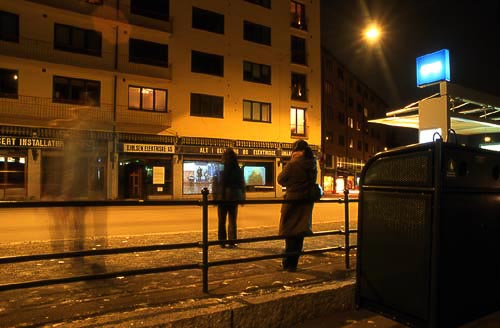
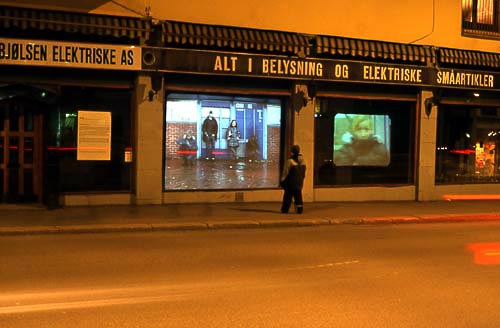
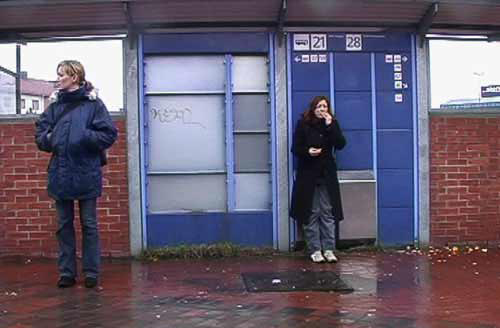
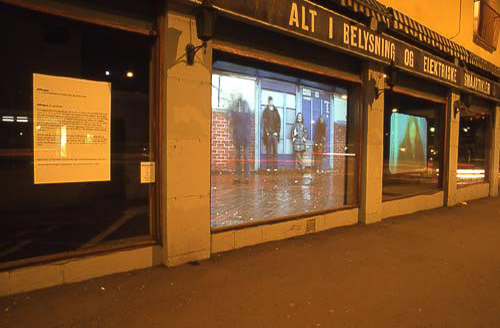
also called migration. An intermingling of molecules, ions, etc.,resulting from random thermal agitation, as in the dispersion of avapor in air.
The installation consisted of two videos projected on a windowsurface, facing a buss-stop in Bentzebrugata 34 in Oslo. The video was shot at another buss-station, and was a short history of chainreaktions, with one new event occurring each day during a full week. A text spinning around the word "diffusjon" was presented in a window alongside the wideos. The installation was part of the project "window-shopping".
2003 © Katja Høst & Miriam Sogn
Rannveig, Martin, Heidi, Torkel, Annette, Hege, Stephan, Else and Anne-Sophie (2003)
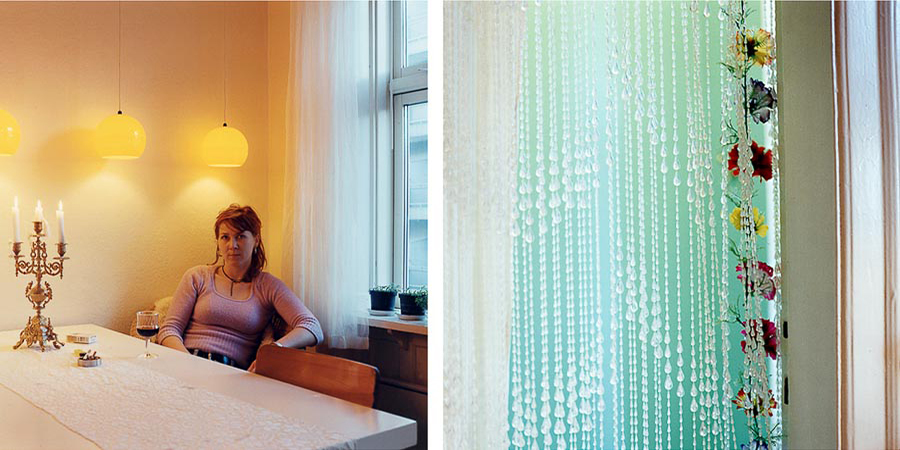
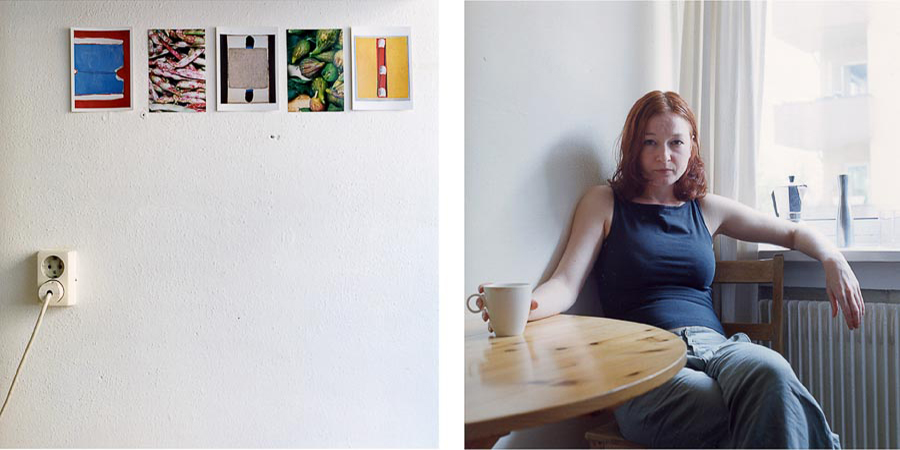
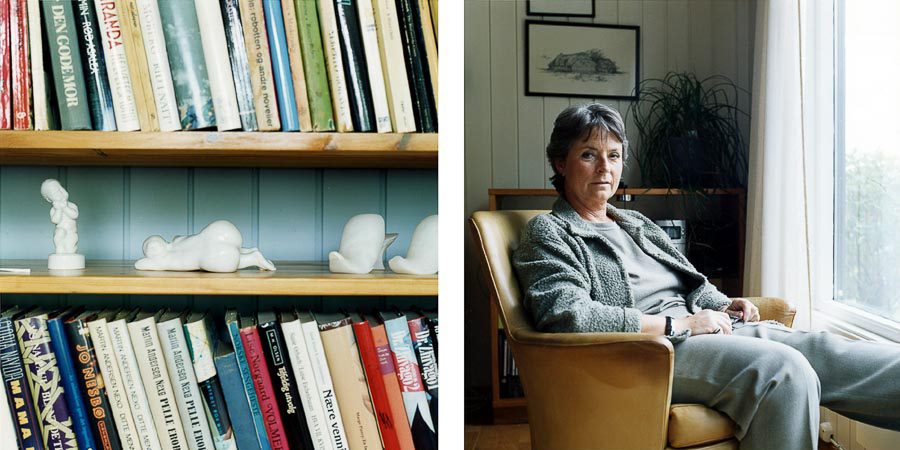
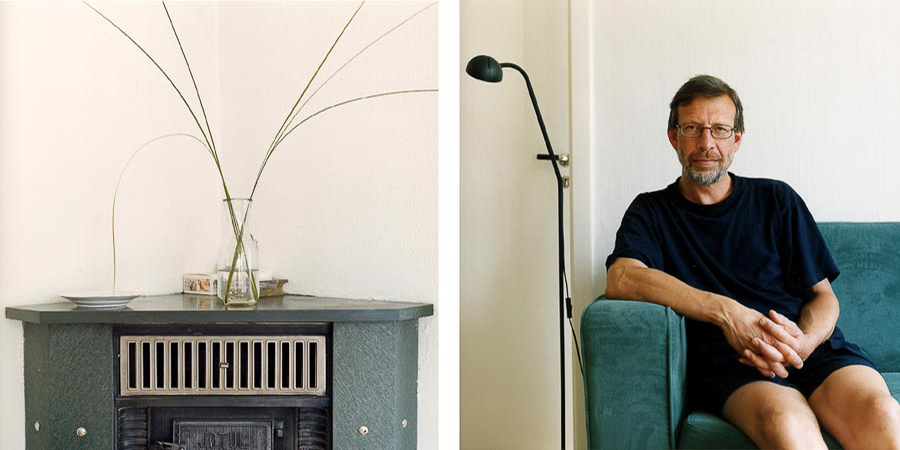
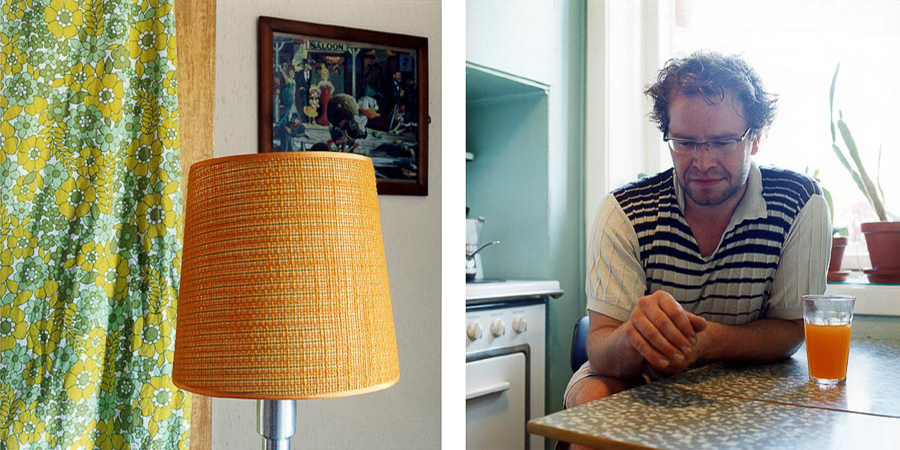
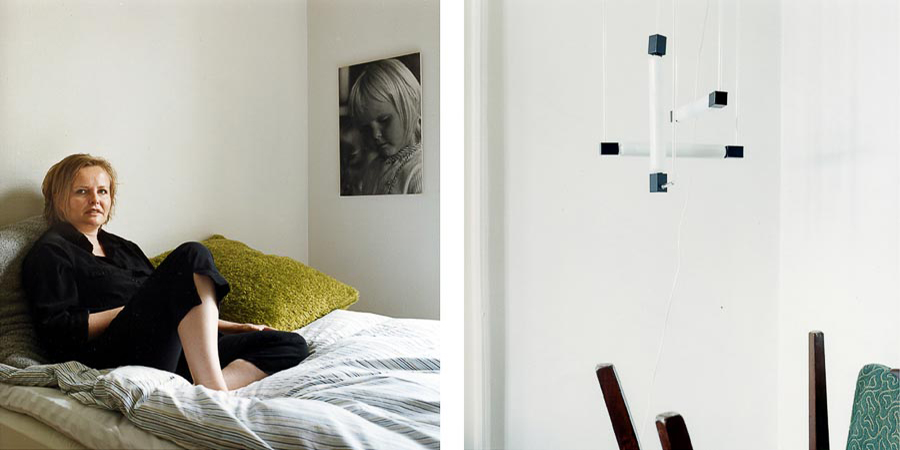
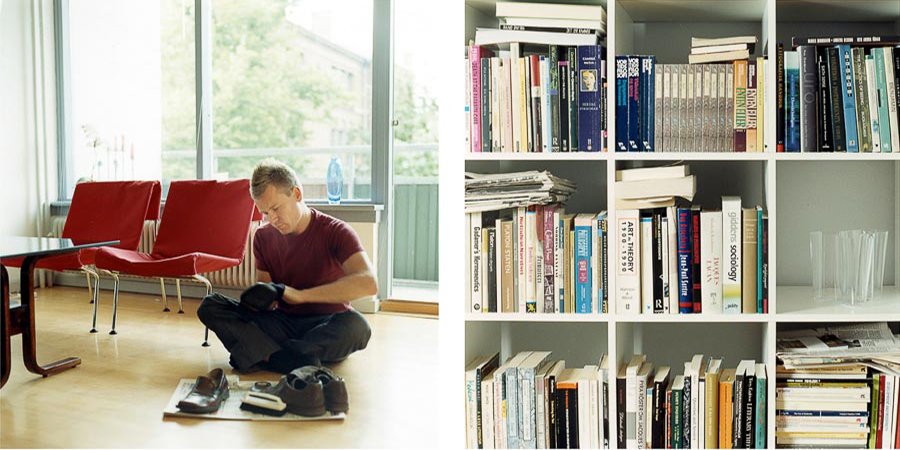
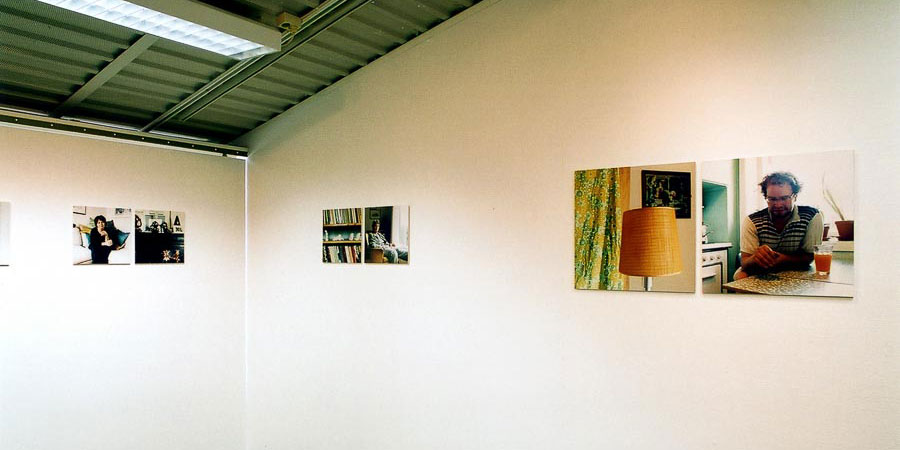

A series of protraits. Installation view from Lørenskog Kunstforening, Norway.
Signpainters (2003)

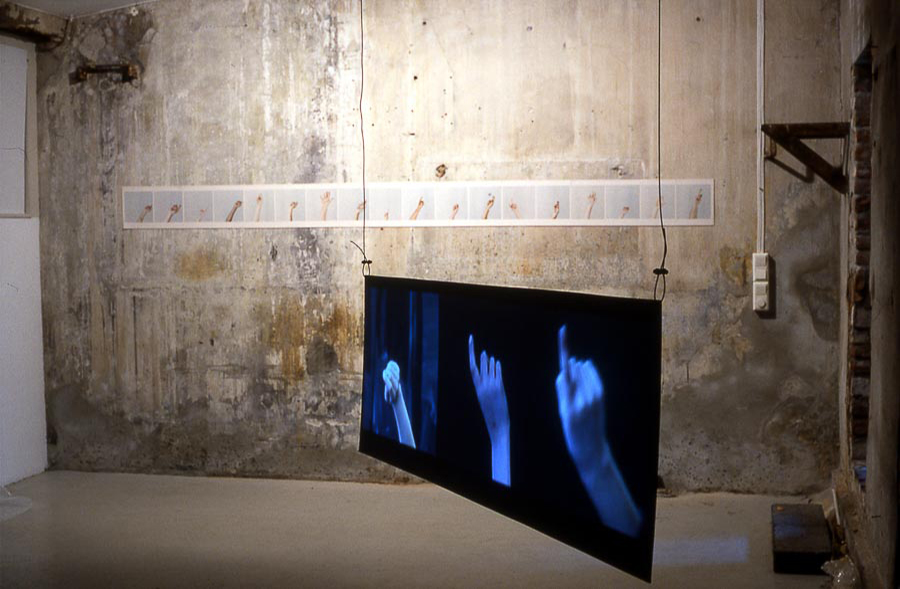
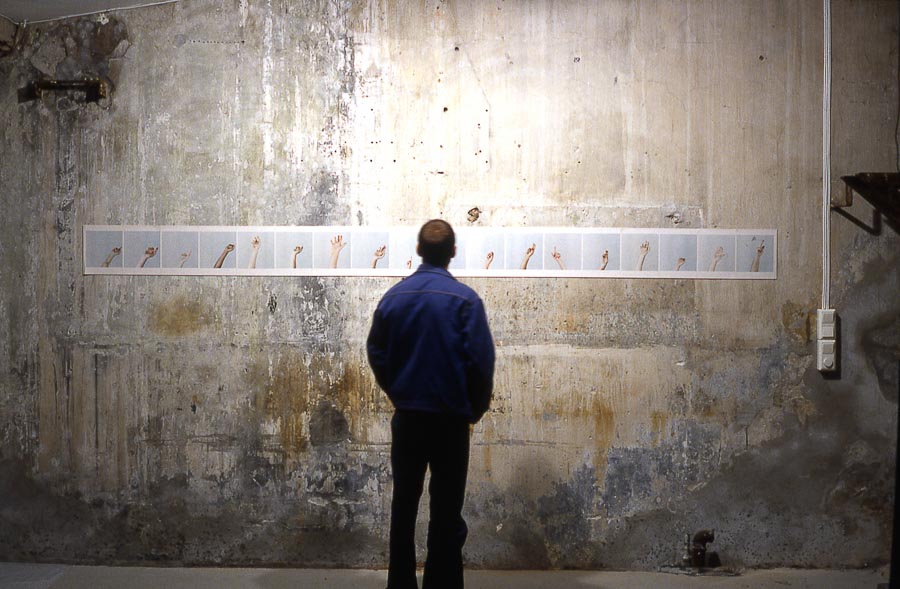
The work is based on the universal sign raising your hand, known across different cultures and contexts. In addition to reflecting on an incorporated convention related to utterance, the work examines the individual expression as it appears within the framework of a clearly defined convention. The hands extending in the air highlight the different approaches to speaking in a larger context. Some are eager but lose interest quickly, others may be slow but persistent.
Every devotion to expression is also a participation in shaping / influencing the world. Here, the hands that fly up in the air become physical signs of the desire to grab the word and participate in shaping the conversation. Art fits into this movement, and the title reflects on this by connecting "sign" with "painters". Power of definition is, whether symbolic or concrete, a real factor in the world. Hence, the freedom of expression must always be free.
Installation views from Articule Gallery in Montréal (2007) and Bjørka Projectroom in Oslo (2003).
Drawing on a fictional line (2002)

In the piece Drawing on a fictional line (2003) the triptych is playing with time and space as well as underlining perspective as a function of the eye and the image. In the 3 images we see blue ocean and blue sky, with the horizon washed out as blue meets blue. Yet a boat moving horizontally through the images leaves a trace drawing up the contour of a horizon. The title refers to the horizon being a visual effect of the eye (as well as the image). In reality there is never a clear line as to where the two meet - a horizon is an optical illusion, occurring in the eye (or the image) only.
If we follow standard reading in the west - from left to right - we read the images as they where shot. It is the same frame shot at three different moments in time. Yet, the boat and the trace it leaves pulls the eye to read from right to left - as if the tree images represents a panorama the boat is traveling trough. It seems like there is a battle between the representation of time versus representation of space in the 3 photographs. Due to the composition of putting the images next to each-other, form is pushing to override time.
Sofia (2001)

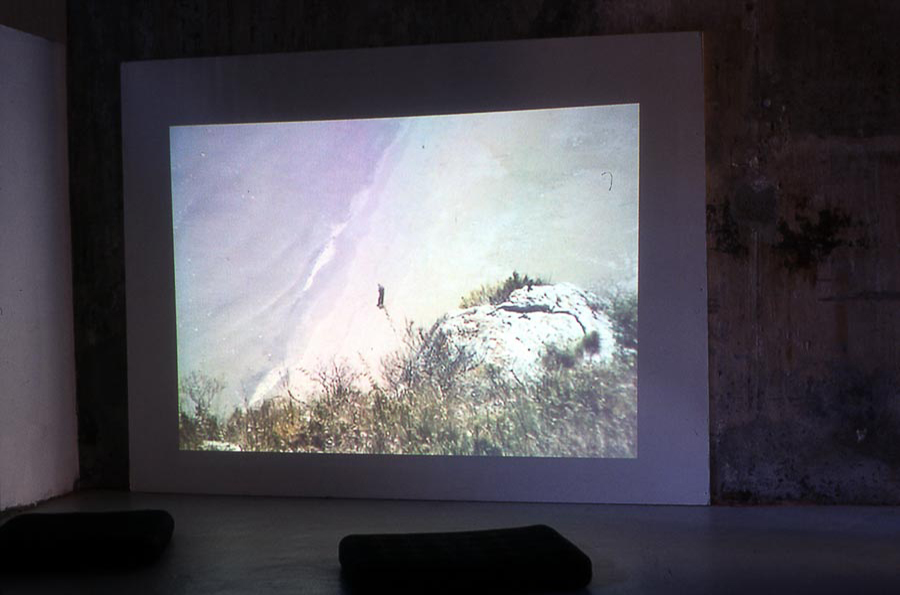
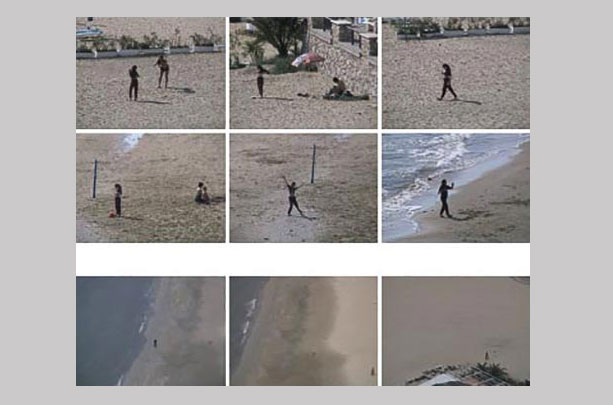
Pausekomma Bjørka Prosjektrom, Oslo © 2001
Two videopieces (Sofia and Walter) playing in loop.
Marienlyst school (2000)

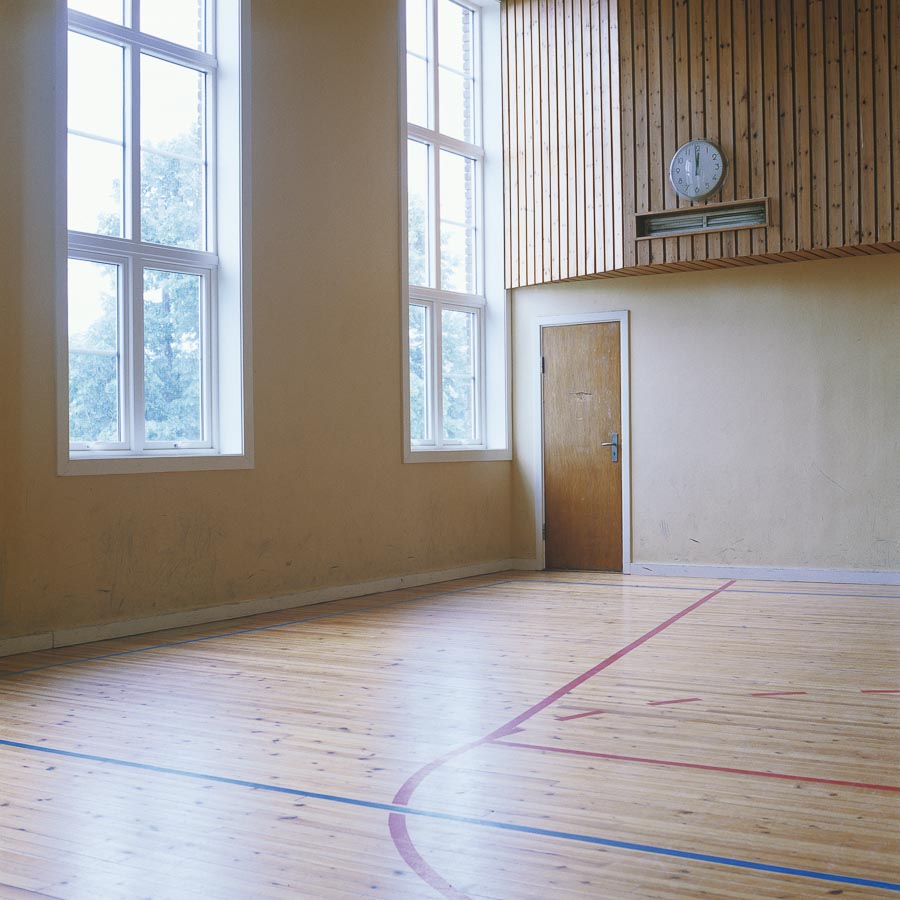
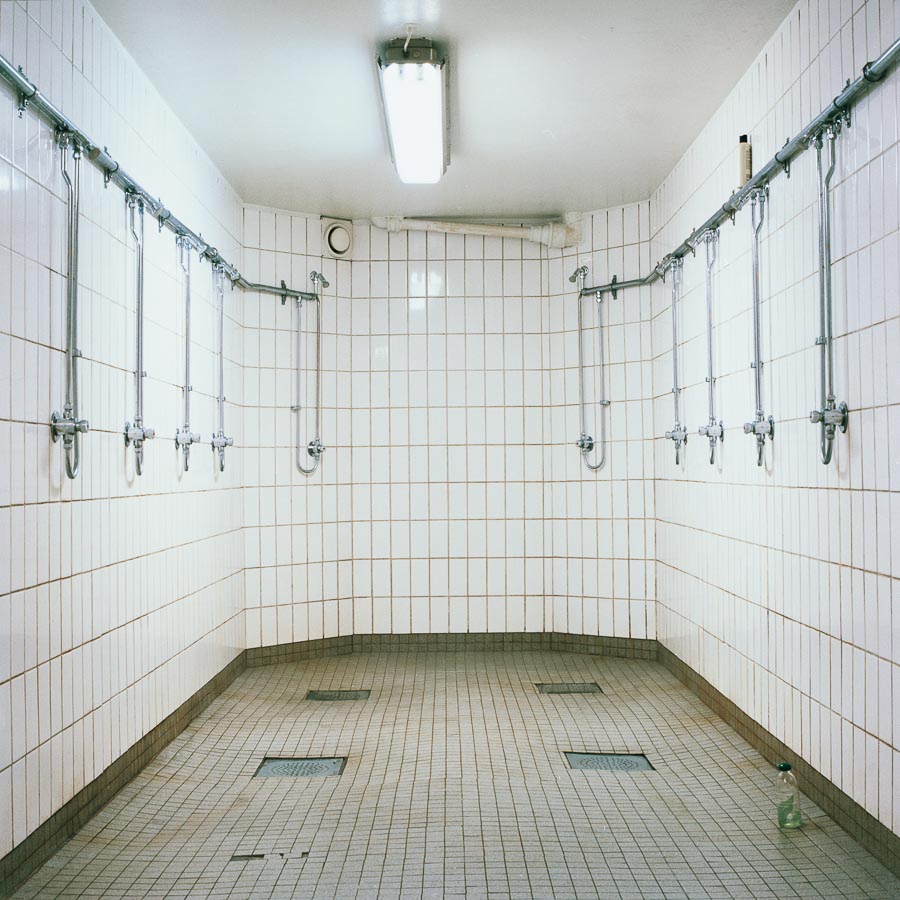

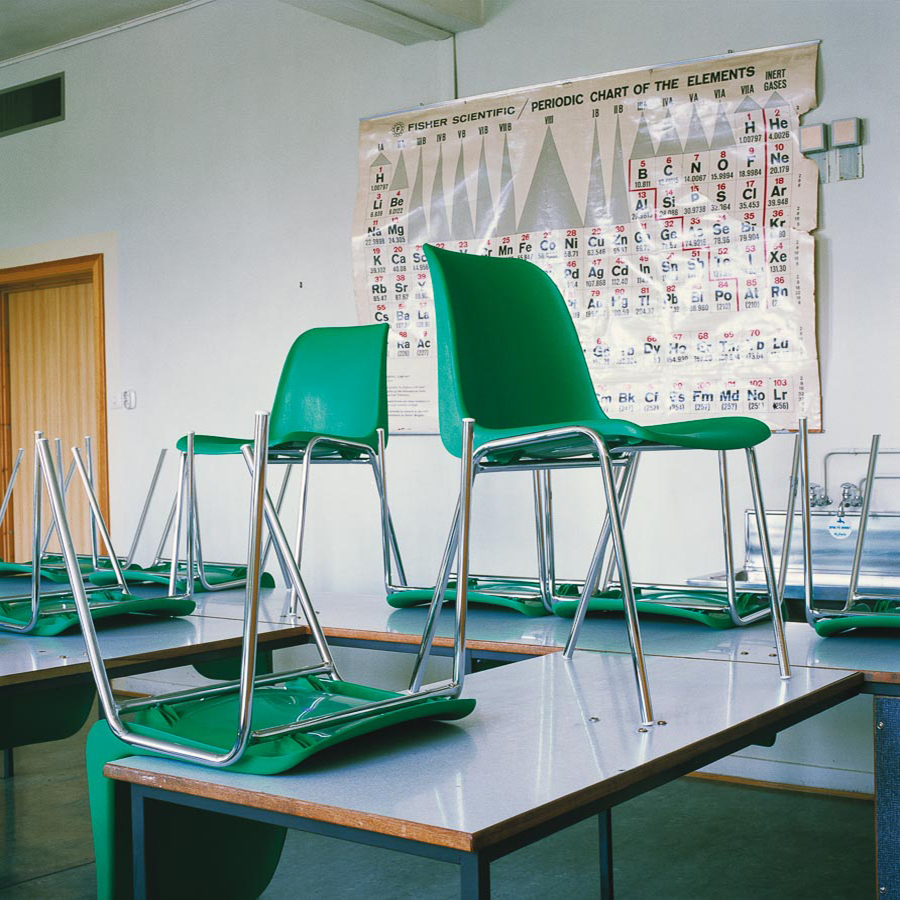
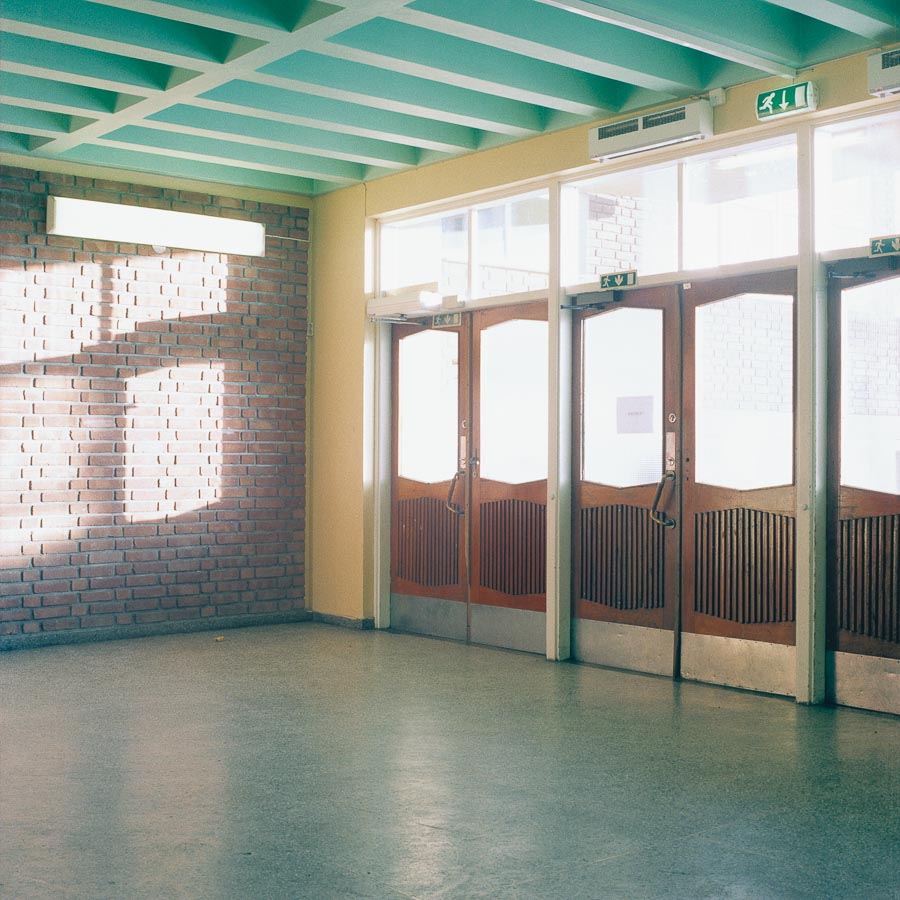
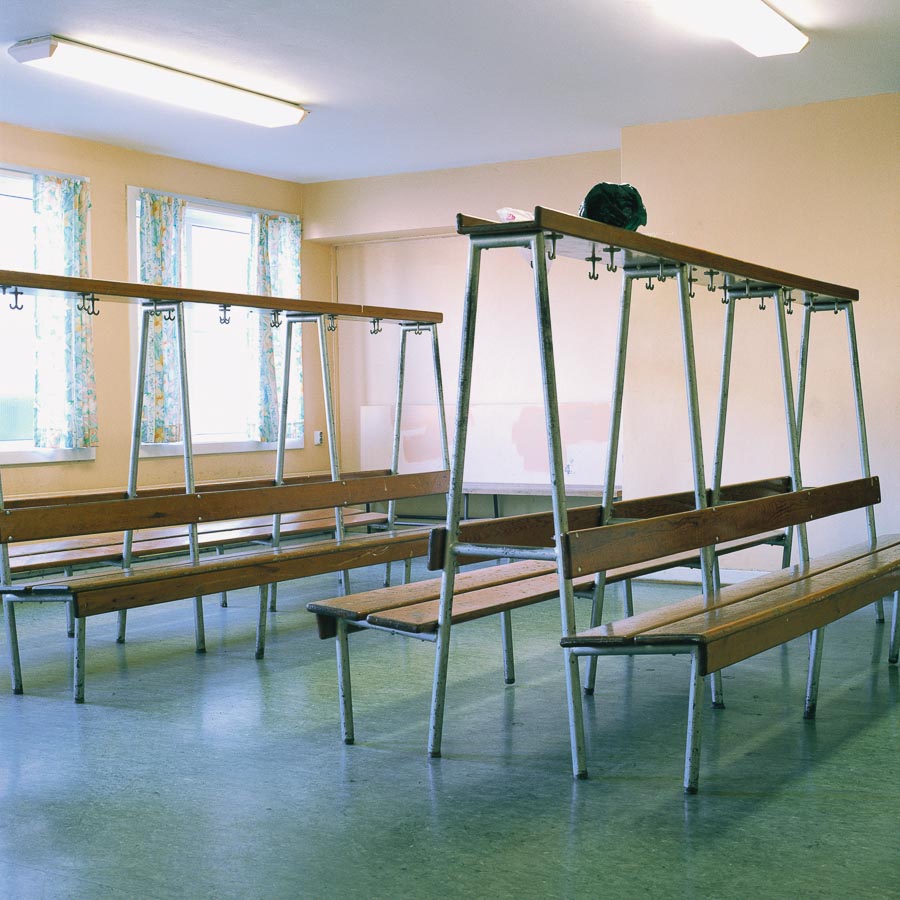


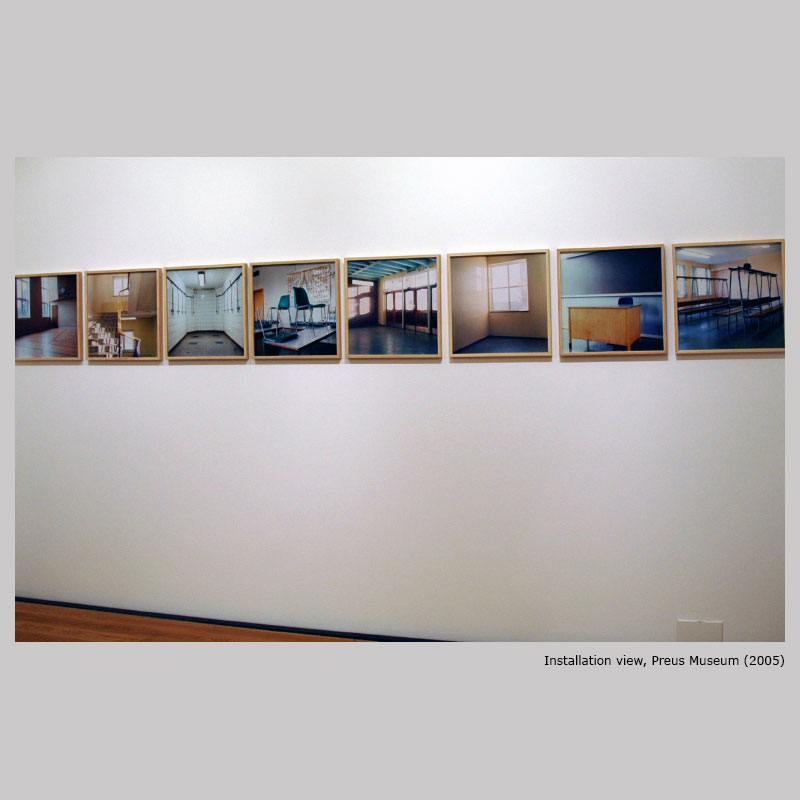
"Katja Høst’s series Marienlyst skole (Marienlyst School) (2000) presents the artist’s childhood school, its rooms, emptied by the summer recess, bathed in sunlight. Although this may sound like a recipe for a sentimental journey back in time, it is in fact a stringent analysis of social-democratic institutional architecture. Høst photographs the school in a classic manner, emphasising light and functionality, almost as if the building were new and she were documenting it for an architecture journal. The series thus becomes a commentary on postwar Nordic social ideology and the ambivalent mixture of freedom and control that forms the heart of this heritage."
(Jonas Ekeberg, Director of Preus Museum, in “Om fotografi”, Journal for Preus Museum.)
Presentation of self in everyday life - uten tittel (1999)
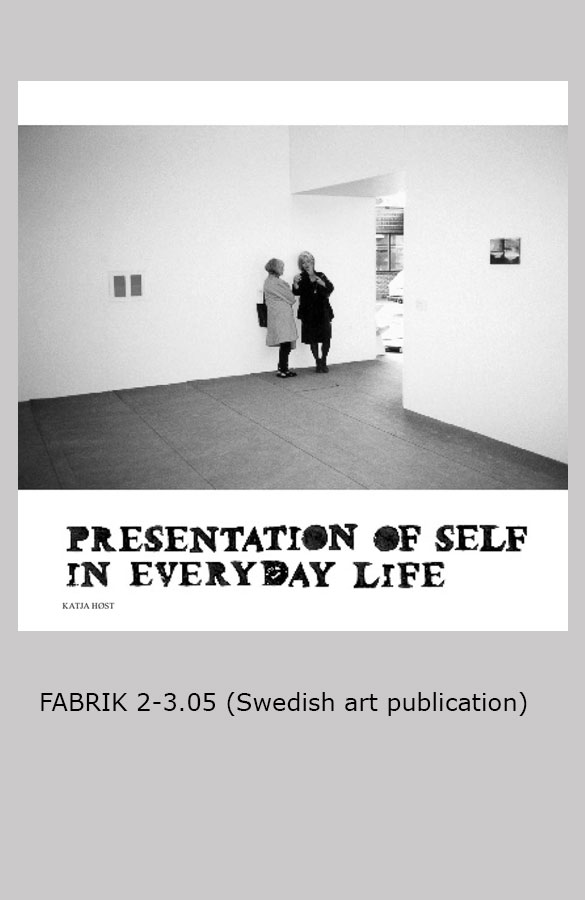
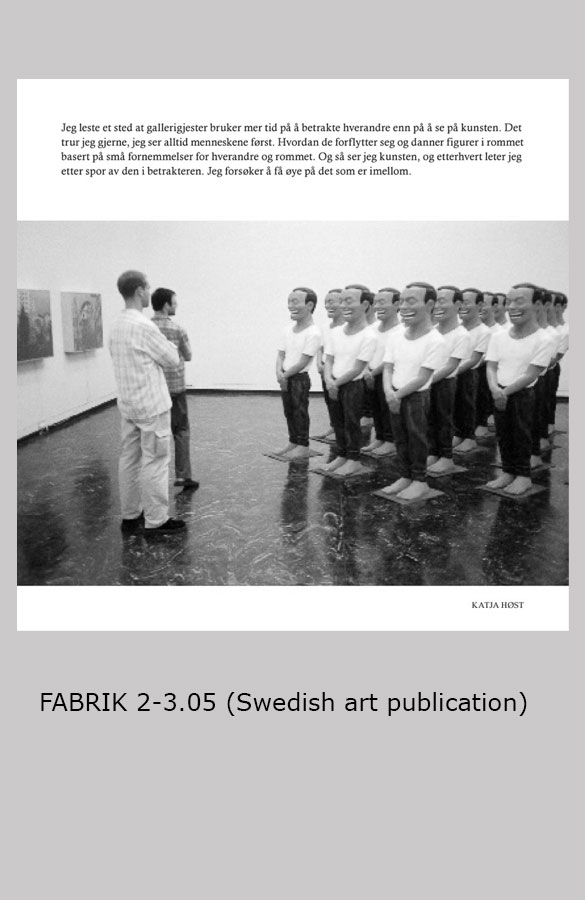
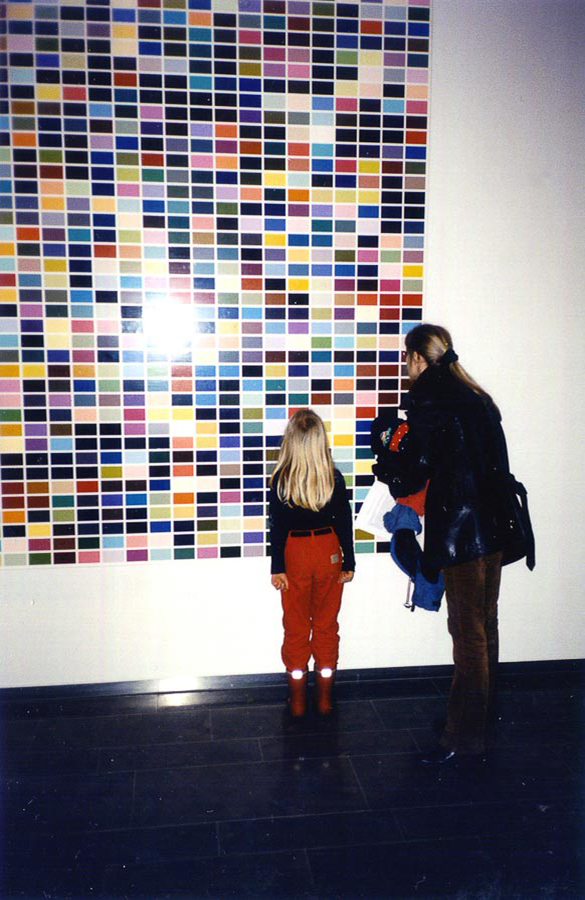
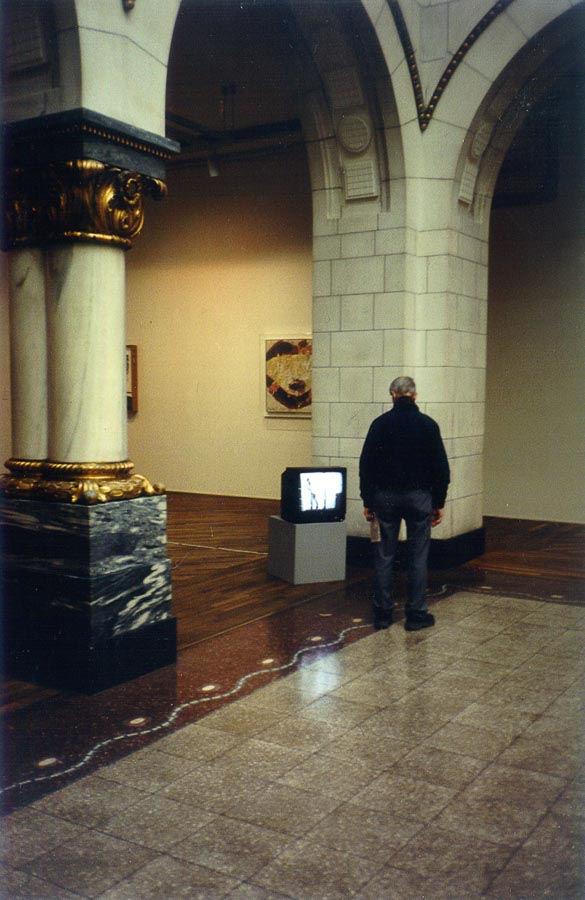
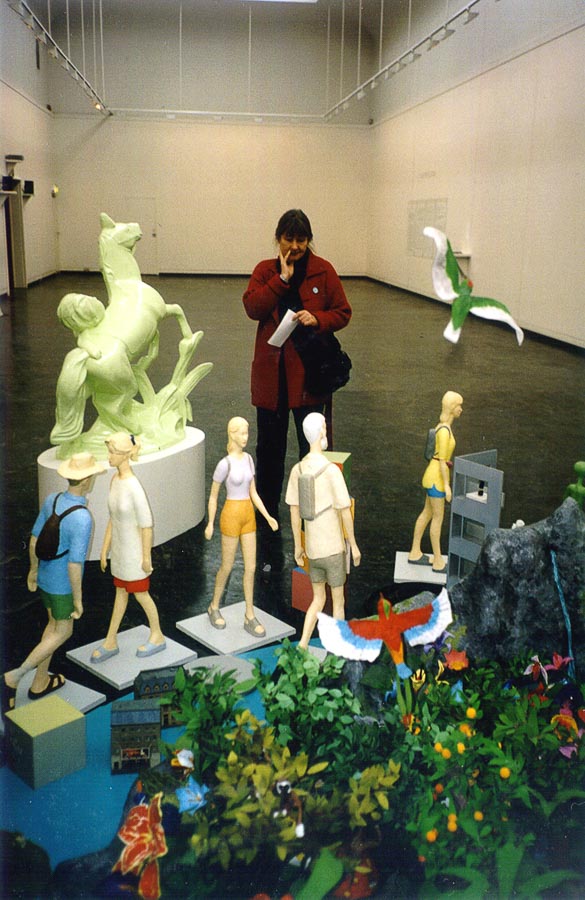

Investigation of the gallery room as social context and the wiewer in interaction with the work.
Read my face (1997)
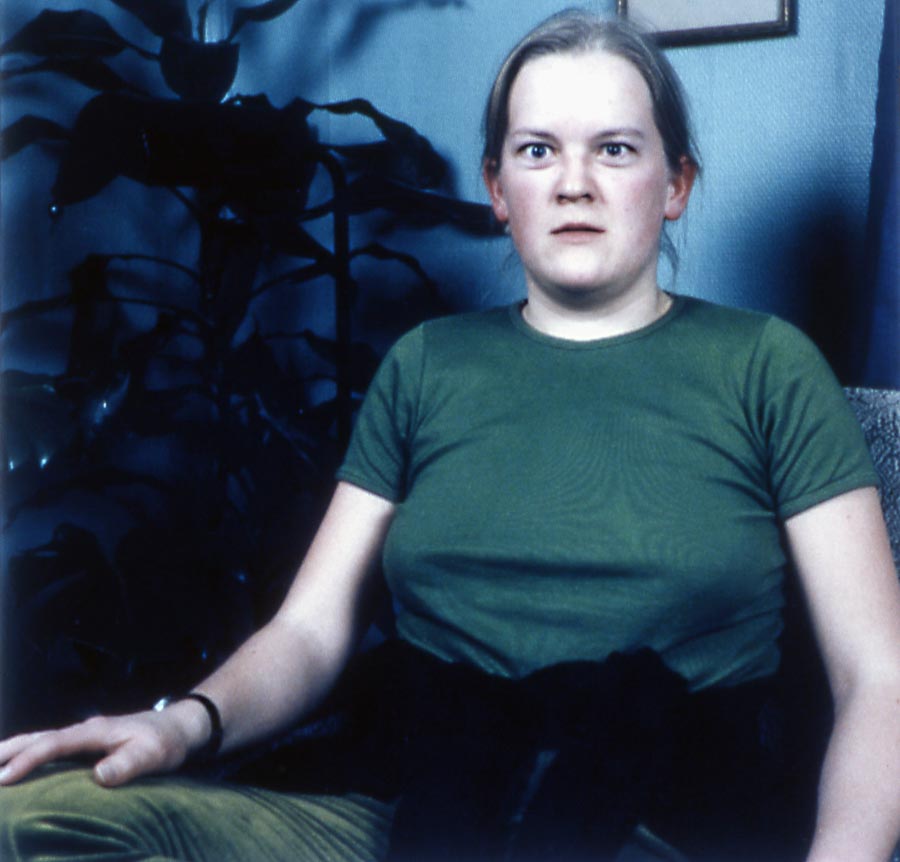
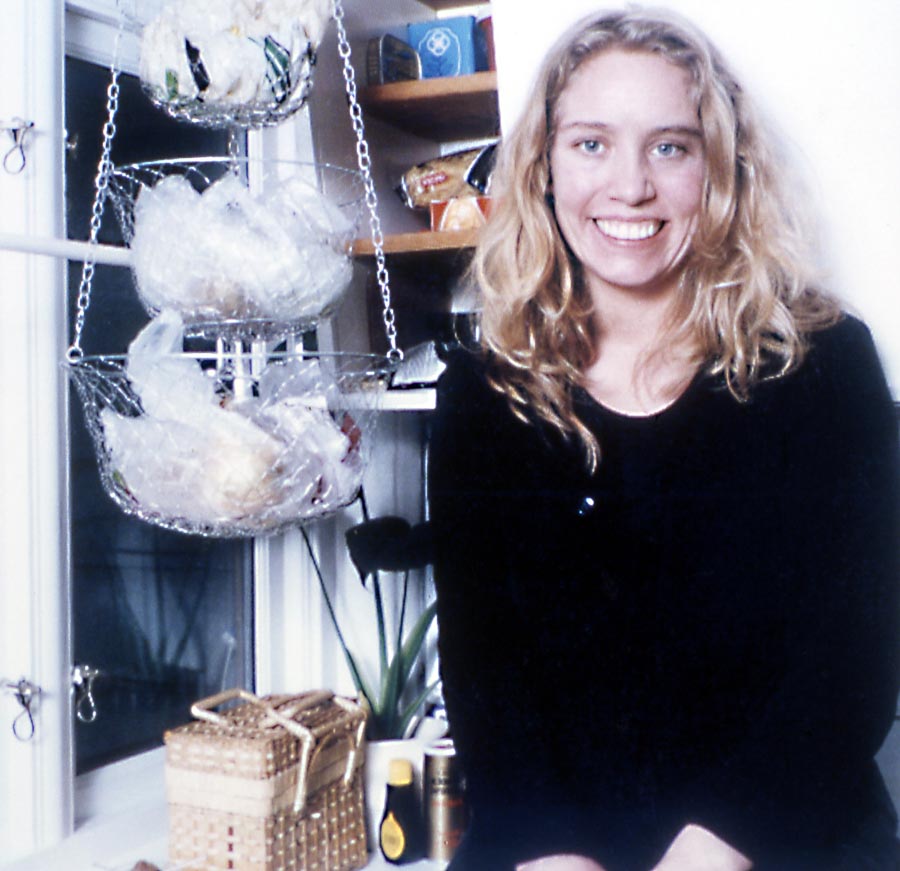
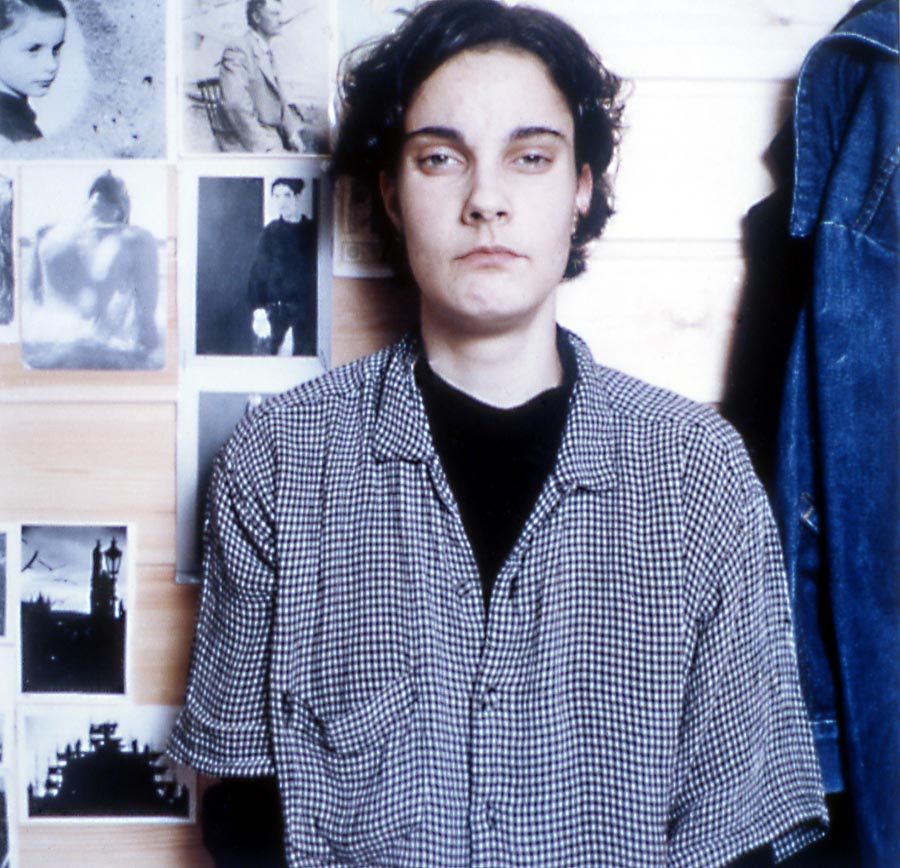

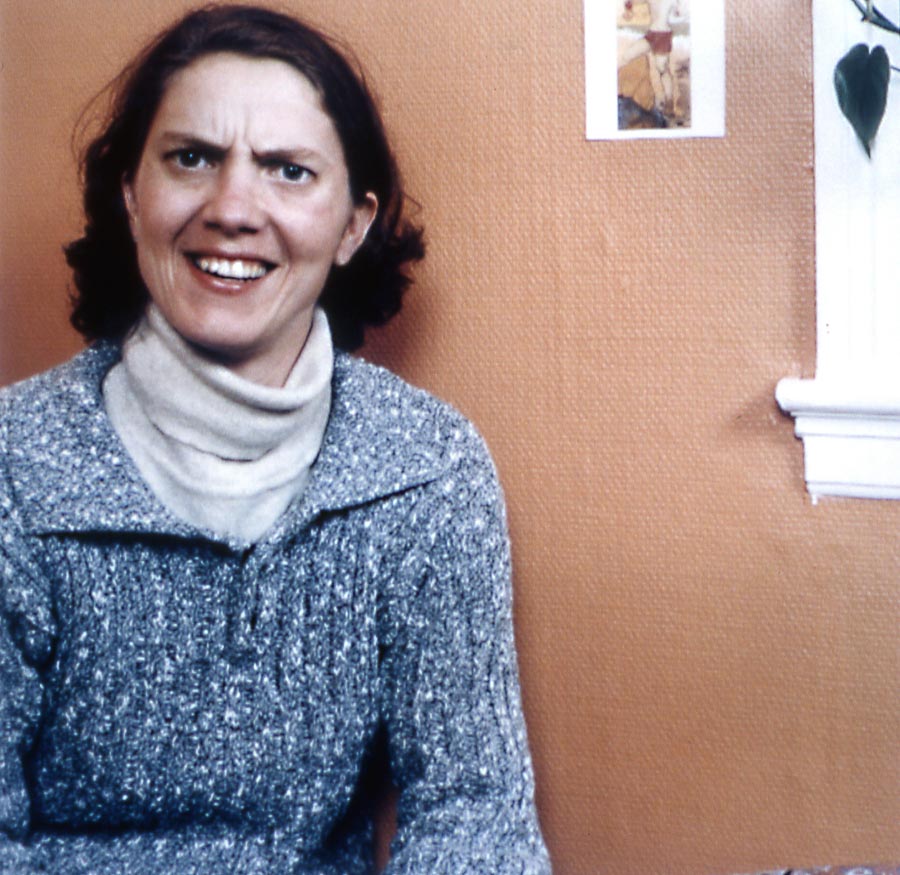
Digital manipulation has been used to construct new facial expressions based on 6 universal expressons: anger, happieness, sorrow, disgust, fear and surprise.
Presentation of self in everyday life - Entré (1997)
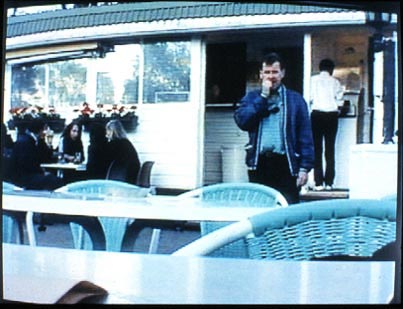
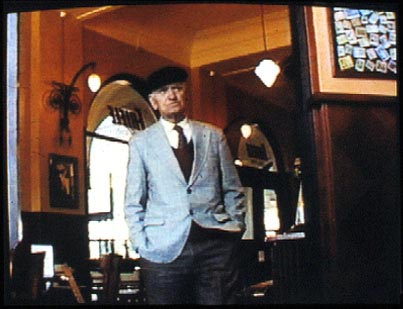


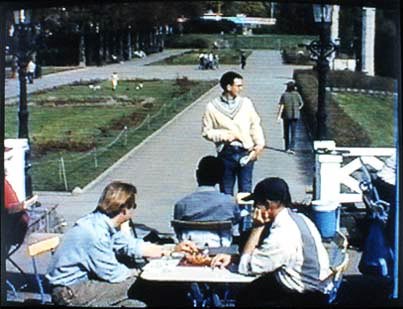
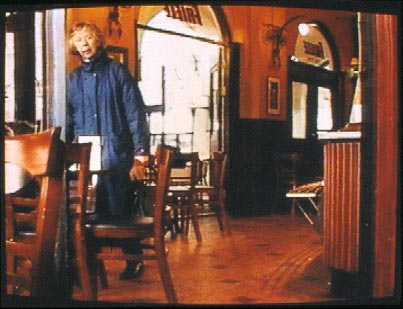
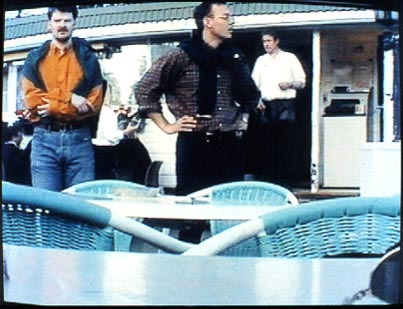
Series of videostills. People arriving public spaces. Presentation: slideshow of 23 slides on wall.